- How it works

Useful Links
How much will your dissertation cost?
Have an expert academic write your dissertation paper!
Dissertation Services

Get unlimited topic ideas and a dissertation plan for just £45.00
Order topics and plan

Get 1 free topic in your area of study with aim and justification
Yes I want the free topic

Radiology Dissertation topics – Based on Latest Study and Research
Published by Ellie Cross at December 29th, 2022 , Revised On August 16, 2023
A dissertation is an essential part of the radiology curriculum for an MD, DNB, or DMRD degree programme. Dissertations in radiology can be very tricky and challenging due to the complexity of the subject.
Students must conduct thorough research to develop a first-class dissertation that makes a valuable contribution to the file of radiology. The first step is to choose a well-defined and clear research topic for the dissertation.
We have provided some interesting and focused ideas to help you get started. Choose one that motivates so you don’t lose your interest in the research work half way through the process.
Other Subject Links:
- Evidence-based Practice Nursing Dissertation Topics
- Child Health Nursing Dissertation Topics
- Adult Nursing Dissertation Topics
- Critical Care Nursing Dissertation Topics
- Palliative Care Nursing Dissertation Topics
- Mental Health Nursing Dissertation Topics
- Nursing Dissertation Topics
- Coronavirus (COVID-19) Nursing Dissertation Topics
List of Radiology Dissertation Topics
- The use of computed tomography and positron emission tomography in the diagnosis of thyroid cancer
- MRI diffusion tensor imaging is used to evaluate the traumatic spinal injury
- Analyzing digital colour and subtraction in comparison patients with occlusive arterial disorders and doppler
- Functional magnetic resonance imaging is essential for ensuring the security of brain tumour surgery
- Doppler uterine artery preeclampsia prediction
- Utilizing greyscale and doppler ultrasonography to assess newborn cholestasis
- MRI’s reliability in detecting congenital anorectal anomalies
- Multivessel research on intrauterine growth restriction (arterial, venous) doppler speed
- Perfusion computed tomography is used to evaluate cerebral blood flow, blood volume, and vascular permeability for brain neoplasms
- In post-radiotherapy treated gliomas, compare perfusion magnetic resonance imaging with magnetic resonance spectroscopy to identify recurrence
- Using multidetector computed tomography, pediatric retroperitoneal masses are evaluated. Tomography
- Female factor infertility: the role of three-dimensional multidetector CT hysterosalpingography
- Combining triphasic computed tomography with son elastography allows for assessing localized liver lesions
- Analyzing the effects of magnetic resonance imaging and transperineally ultrasonography on female urinary stress incontinence
- Using dynamic contrast-enhanced and diffusion-weighted magnetic resonance imaging, evaluate endometrial lesions
- For the early diagnosis of breast lesions, digital breast tomosynthesis and contrast-enhanced digital mammography are also available
- Using magnetic resonance imaging and colour doppler flow, assess portal hypertension
- Magnesium resonance imaging enables the assessment of musculoskeletal issues
- Diffusion magnetic resonance imaging is a crucial diagnostic technique for neoplastic or inflammatory brain lesions
- Children with chest ailments that are HIV-infected and have a radiological spectrum high-resolution ultrasound for childhood neck lumps
- Ultrasonography is useful when determining the causes of pelvic discomfort in the first trimester
- Magnetic resonance imaging is used to evaluate diseases of the aorta or its branches. Angiography’s function
- Children’s pulmonary nodules can be distinguished between benign and malignant using high-resolution ct
- Research on multidetector computed urography for treating diseases of the urinary tract
- The evaluation of the ulnar nerve in leprosy patients involves significantly high-resolution sonography
- Utilizing computed tomography and magnetic resonance imaging, radiologists evaluate musculoskeletal tumours that are malignant and locally aggressive before surgery
- The function of MRI and ultrasonography in acute pelvic inflammatory disorders
- Ultrasonography is more efficient than computed tomographic arthrography for evaluating shoulder discomfort
- For patients with blunt abdominal trauma, multidetector computed tomography is a crucial tool
- Compound imaging and expanded field-of-view sonography in the evaluation of breast lesions
- Focused pancreatic lesions are assessed using multidetector CT and perfusion ct
- Ct virtual laryngoscopy is used to evaluate laryngeal masses
- In the liver masses, triple phase multidetector computed tomography
- The effect of increasing the volume of brain tumours on patient survival
- Colonic lesions can be diagnosed using perfusion computed tomography
- A role for proton MRI spectroscopy in the diagnosis and management of temporal lobe epilepsy
- Functions of multidetector CT and doppler ultrasonography in assessing peripheral arterial disease
- There is a function for multidetector computed tomography in paranasal sinus illness
- In neonates with an anorectal malformation, transperineal ultrasound
- Using multidetector CT, comprehensive imaging of an acute ischemic stroke is performed
- The diagnosis of intrauterine neurological congenital disorders requires the use of fetal MRI
- Children with chest masses may benefit from multidetector computed angiography
- Multimodal imaging for the evaluation of palpable and non-palpable breast lesions
- As measured by sonography and relation to fetal outcome, fetal nasal bone length at 11–28 gestational days
- Relationship between bone mineral density, diffusion-weighted MRI imaging, and vertebral marrow fat in postmenopausal women
- A comparison of the traditional catheter and CT coronary imaging angiogram of the heart
- Evaluation of the descending colon’s length and diameter using ultrasound in normal and intrauterine-restricted fetuses
- Investigation of the hepatic vein waveform in liver cirrhosis prospectively. A connection to child pugh’s categorization
- Functional assessment of coronary artery bypass graft patency in symptomatic patients using CT angiography
- MRI and MRI arthrography evaluation of the labour-ligamentous complex lesion in the shoulder
- The evaluation of soft tissue vascular abnormalities involves imaging
- Colour doppler ultrasound and high-resolution ultrasound for scrotal lesions
- Comparison of low-dose computed tomography and ultrasonography with colour doppler for diagnosing salivary gland disorders
- The use of multidetector CT to diagnose lesions of the salivary glands
- Low dose CT venogram and sonography comparison for evaluating varicose veins: a pilot study
- Comparison of dynamic contrast-enhanced MRI and triple phase CT in patients with liver cirrhosis
- Carotid intima-media thickness and coronary artery disease are examined in individuals with coronary angiography for suspected CAD
- Unenhanced computed tomography assessment of hepatic fat levels in fatty liver disease
- Bone mineral density in postmenopausal women and vertebral marrow fat on spectroscopic and diffusion-weighted MRI images are correlated
- Evaluation of CT coronary angiography against traditional catheter coronary angiography in comparison
- “High-frequency ultrasonography and colour doppler evaluation of the median nerve in carpal tunnel syndrome in contrast to nerve conduction tests”
- Role of MR urethrography in the surgical therapy of obliterative urethral stricture compared to conventional urethrography
- “High resolution computed tomography evaluation of the temporal bone in cholesteatoma patients.”
- “Ultrasonographic assessment of sore shoulders and linkage of clinical examination and rotator cuff diseases”
- “A Study to Evaluate the Performance of Magnetization Transfer Ratio in Distinguishing Neurocysticercosis from Tuberculoma”
Hire an Expert Writer
Orders completed by our expert writers are
- Formally drafted in an academic style
- Free Amendments and 100% Plagiarism Free – or your money back!
- 100% Confidential and Timely Delivery!
- Free anti-plagiarism report
- Appreciated by thousands of clients. Check client reviews

Final Words
You can use or get inspired by our selection of the best radiology diss. You can also check our list of critical care nursing dissertation topics and biology dissertation topics because these areas also relate to the discipline of medical sciences.
Choosing an impactful radiology dissertation topic is a daunting task. There is a lot of patience, time and effort that goes into the whole process. However, we have tried to simplify it for you by providing a list of amazing and unique radiology dissertation topics for you. We hope you find this blog helpful.
Also learn about our dissertation services here .
Free Dissertation Topic
Phone Number
Academic Level Select Academic Level Undergraduate Graduate PHD
Academic Subject
Area of Research
Frequently Asked Questions
How to find radiology dissertation topics.
For radiology dissertation topics:
- Research recent advancements.
- Identify unexplored areas.
- Consult experts and journals.
- Focus on patient care or tech.
- Consider ethical or practical issues.
- Select a topic resonating with your passion and career objectives.
You May Also Like
Your dissertation may seem daunting if you do not pace yourself. Getting started on it as soon as possible is the best thing you can do. Research and writing will take more time if your paper is better. Your corporate governance dissertation is giving you trouble if you picked the wrong topic.
Information technology stands out as one of the latest discoveries of the twenty-first century. According to researchers, technology is currently undergoing an era of transformation.
Are you looking for some interesting PE research topics? Here’s a comprehensive list of physical education dissertation topics for you.
USEFUL LINKS
LEARNING RESOURCES

COMPANY DETAILS

- How It Works
Radiology Research Paper Topics

Radiology research paper topics encompass a wide range of fascinating areas within the field of medical imaging. This page aims to provide students studying health sciences with a comprehensive collection of radiology research paper topics to inspire and guide their research endeavors. By delving into various categories and exploring ten thought-provoking topics within each, students can gain insights into the diverse research possibilities in radiology. From advancements in imaging technology to the evaluation of diagnostic accuracy and the impact of radiological interventions, these topics offer a glimpse into the exciting world of radiology research. Additionally, expert advice is provided to help students choose the most suitable research topics and navigate the process of writing a research paper in radiology. By leveraging iResearchNet’s writing services, students can further enhance their research papers with professional assistance, ensuring the highest quality and adherence to academic standards. Explore the realm of radiology research paper topics and unleash your potential to contribute to the advancement of medical imaging and patient care.
100 Radiology Research Paper Topics
Radiology encompasses a broad spectrum of imaging techniques used to diagnose diseases, monitor treatment progress, and guide interventions. This comprehensive list of radiology research paper topics serves as a valuable resource for students in the field of health sciences who are seeking inspiration and guidance for their research endeavors. The following ten categories highlight different areas within radiology, each containing ten thought-provoking topics. Exploring these topics will provide students with a deeper understanding of the diverse research possibilities and current trends within the field of radiology.
Academic Writing, Editing, Proofreading, And Problem Solving Services
Get 10% off with 24start discount code.
Diagnostic Imaging Techniques
- Comparative analysis of imaging modalities: CT, MRI, and PET-CT.
- The role of artificial intelligence in radiological image interpretation.
- Advancements in digital mammography for breast cancer screening.
- Emerging techniques in nuclear medicine imaging.
- Image-guided biopsy: Enhancing accuracy and safety.
- Application of radiomics in predicting treatment response.
- Dual-energy CT: Expanding diagnostic capabilities.
- Radiological evaluation of traumatic brain injuries.
- Imaging techniques for evaluating cardiovascular diseases.
- Radiographic evaluation of pulmonary nodules: Challenges and advancements.
Interventional Radiology
- Minimally invasive treatments for liver tumors: Embolization techniques.
- Radiofrequency ablation in the management of renal cell carcinoma.
- Role of interventional radiology in the treatment of peripheral artery disease.
- Transarterial chemoembolization in hepatocellular carcinoma.
- Evaluation of uterine artery embolization for the treatment of fibroids.
- Percutaneous vertebroplasty and kyphoplasty: Efficacy and complications.
- Endovascular repair of abdominal aortic aneurysms: Long-term outcomes.
- Interventional radiology in the management of deep vein thrombosis.
- Transcatheter aortic valve replacement: Imaging considerations.
- Emerging techniques in interventional oncology.
Radiation Safety and Dose Optimization
- Strategies for reducing radiation dose in pediatric imaging.
- Imaging modalities with low radiation exposure: Current advancements.
- Effective use of dose monitoring systems in radiology departments.
- The impact of artificial intelligence on radiation dose optimization.
- Optimization of radiation therapy treatment plans: Balancing efficacy and safety.
- Radioprotective measures for patients and healthcare professionals.
- The role of radiology in addressing radiation-induced risks.
- Evaluating the long-term effects of radiation exposure in diagnostic imaging.
- Radiation dose tracking and reporting: Implementing best practices.
- Patient education and communication regarding radiation risks.
Radiology in Oncology
- Imaging techniques for early detection and staging of lung cancer.
- Quantitative imaging biomarkers for predicting treatment response in solid tumors.
- Radiogenomics: Linking imaging features to genetic profiles in cancer.
- The role of imaging in assessing tumor angiogenesis.
- Radiological evaluation of lymphoma: Challenges and advancements.
- Imaging-guided interventions in the treatment of hepatocellular carcinoma.
- Assessment of tumor heterogeneity using functional imaging techniques.
- Radiomics and machine learning in predicting treatment outcomes in cancer.
- Multimodal imaging in the evaluation of brain tumors.
- Imaging surveillance after cancer treatment: Optimizing follow-up protocols.
Radiology in Musculoskeletal Disorders
- Imaging modalities in the evaluation of sports-related injuries.
- The role of imaging in diagnosing and monitoring rheumatoid arthritis.
- Assessment of bone health using dual-energy X-ray absorptiometry (DXA).
- Imaging techniques for evaluating osteoarthritis progression.
- Imaging-guided interventions in the management of musculoskeletal tumors.
- Role of imaging in diagnosing and managing spinal disorders.
- Evaluation of traumatic injuries using radiography, CT, and MRI.
- Imaging of joint prostheses: Complications and assessment techniques.
- Imaging features and classifications of bone fractures.
- Musculoskeletal ultrasound in the diagnosis of soft tissue injuries.
Neuroradiology
- Advanced neuroimaging techniques for early detection of neurodegenerative diseases.
- Imaging evaluation of acute stroke: Current guidelines and advancements.
- Role of functional MRI in mapping brain functions.
- Imaging of brain tumors: Classification and treatment planning.
- Diffusion tensor imaging in assessing white matter integrity.
- Neuroimaging in the evaluation of multiple sclerosis.
- Imaging techniques for the assessment of epilepsy.
- Radiological evaluation of neurovascular diseases.
- Imaging of cranial nerve disorders: Diagnosis and management.
- Radiological assessment of developmental brain abnormalities.
Pediatric Radiology
- Radiation dose reduction strategies in pediatric imaging.
- Imaging evaluation of congenital heart diseases in children.
- Role of imaging in the diagnosis and management of pediatric oncology.
- Imaging of pediatric gastrointestinal disorders.
- Evaluation of developmental hip dysplasia using ultrasound and radiography.
- Imaging features and management of pediatric musculoskeletal infections.
- Neuroimaging in the assessment of pediatric neurodevelopmental disorders.
- Radiological evaluation of pediatric respiratory conditions.
- Imaging techniques for the evaluation of pediatric abdominal emergencies.
- Imaging-guided interventions in pediatric patients.
Breast Imaging
- Advances in digital mammography for early breast cancer detection.
- The role of tomosynthesis in breast imaging.
- Imaging evaluation of breast implants: Complications and assessment.
- Radiogenomic analysis of breast cancer subtypes.
- Contrast-enhanced mammography: Diagnostic benefits and challenges.
- Emerging techniques in breast MRI for high-risk populations.
- Evaluation of breast density and its implications for cancer risk.
- Role of molecular breast imaging in dense breast tissue evaluation.
- Radiological evaluation of male breast disorders.
- The impact of artificial intelligence on breast cancer screening.
Cardiac Imaging
- Imaging evaluation of coronary artery disease: Current techniques and challenges.
- Role of cardiac CT angiography in the assessment of structural heart diseases.
- Imaging of cardiac tumors: Diagnosis and treatment considerations.
- Advanced imaging techniques for assessing myocardial viability.
- Evaluation of valvular heart diseases using echocardiography and MRI.
- Cardiac magnetic resonance imaging in the evaluation of cardiomyopathies.
- Role of nuclear cardiology in the assessment of cardiac function.
- Imaging evaluation of congenital heart diseases in adults.
- Radiological assessment of cardiac arrhythmias.
- Imaging-guided interventions in structural heart diseases.
Abdominal and Pelvic Imaging
- Evaluation of hepatobiliary diseases using imaging techniques.
- Imaging features and classification of renal masses.
- Radiological assessment of gastrointestinal bleeding.
- Imaging evaluation of pancreatic diseases: Challenges and advancements.
- Evaluation of pelvic floor disorders using MRI and ultrasound.
- Role of imaging in diagnosing and staging gynecological cancers.
- Imaging of abdominal and pelvic trauma: Current guidelines and techniques.
- Radiological evaluation of genitourinary disorders.
- Imaging features of abdominal and pelvic infections.
- Assessment of abdominal and pelvic vascular diseases using imaging techniques.
This comprehensive list of radiology research paper topics highlights the vast range of research possibilities within the field of medical imaging. Each category offers unique insights and avenues for exploration, enabling students to delve into various aspects of radiology. By choosing a topic of interest and relevance, students can contribute to the advancement of medical imaging and patient care. The provided topics serve as a starting point for students to engage in in-depth research and produce high-quality research papers.
Radiology: Exploring the Range of Research Paper Topics
Introduction: Radiology plays a crucial role in modern healthcare, providing valuable insights into the diagnosis, treatment, and monitoring of various medical conditions. As a dynamic and rapidly evolving field, radiology offers a wide range of research opportunities for students in the health sciences. This article aims to explore the diverse spectrum of research paper topics within radiology, shedding light on the current trends, innovations, and challenges in the field.
Radiology in Diagnostic Imaging : Diagnostic imaging is one of the core areas of radiology, encompassing various modalities such as X-ray, computed tomography (CT), magnetic resonance imaging (MRI), ultrasound, and nuclear medicine. Research topics in this domain may include advancements in imaging techniques, comparative analysis of modalities, radiomics, and the integration of artificial intelligence in image interpretation. Students can explore how these technological advancements enhance diagnostic accuracy, improve patient outcomes, and optimize radiation exposure.
Interventional Radiology : Interventional radiology focuses on minimally invasive procedures performed under image guidance. Research topics in this area can cover a wide range of interventions, such as angioplasty, embolization, radiofrequency ablation, and image-guided biopsies. Students can delve into the latest techniques, outcomes, and complications associated with interventional procedures, as well as explore the emerging role of interventional radiology in managing various conditions, including vascular diseases, cancer, and pain management.
Radiation Safety and Dose Optimization : Radiation safety is a critical aspect of radiology practice. Research in this field aims to minimize radiation exposure to patients and healthcare professionals while maintaining optimal diagnostic image quality. Topics may include strategies for reducing radiation dose in pediatric imaging, dose monitoring systems, the impact of artificial intelligence on radiation dose optimization, and radioprotective measures. Students can investigate how to strike a balance between effective imaging and patient safety, exploring advancements in dose reduction techniques and the implementation of best practices.
Radiology in Oncology : Radiology plays a vital role in the diagnosis, staging, and treatment response assessment in cancer patients. Research topics in this area can encompass the use of imaging techniques for early detection, tumor characterization, response prediction, and treatment planning. Students can explore the integration of radiomics, machine learning, and molecular imaging in oncology research, as well as advancements in functional imaging and image-guided interventions.
Radiology in Neuroimaging : Neuroimaging is a specialized field within radiology that focuses on imaging the brain and central nervous system. Research topics in neuroimaging can cover areas such as stroke imaging, neurodegenerative diseases, brain tumors, neurovascular disorders, and functional imaging for mapping brain functions. Students can explore the latest imaging techniques, image analysis tools, and their clinical applications in understanding and diagnosing various neurological conditions.
Radiology in Musculoskeletal Imaging : Musculoskeletal imaging involves the evaluation of bone, joint, and soft tissue disorders. Research topics in this area can encompass imaging techniques for sports-related injuries, arthritis, musculoskeletal tumors, spinal disorders, and trauma. Students can explore the role of advanced imaging modalities such as MRI and ultrasound in diagnosing and managing musculoskeletal conditions, as well as the use of imaging-guided interventions for treatment.
Pediatric Radiology : Pediatric radiology focuses on imaging children, who have unique anatomical and physiological considerations. Research topics in this field may include radiation dose reduction strategies in pediatric imaging, imaging evaluation of congenital anomalies, pediatric oncology imaging, and imaging assessment of developmental disorders. Students can explore how to tailor imaging protocols for children, minimize radiation exposure, and improve diagnostic accuracy in pediatric patients.
Breast Imaging : Breast imaging is essential for the early detection and diagnosis of breast cancer. Research topics in this area can cover advancements in mammography, tomosynthesis, breast MRI, and molecular imaging. Students can explore topics related to breast density, imaging-guided biopsies, breast cancer screening, and the impact of artificial intelligence in breast imaging. Additionally, they can investigate the use of imaging techniques for evaluating breast implants and assessing high-risk populations.
Cardiac Imaging : Cardiac imaging focuses on the evaluation of heart structure and function. Research topics in this field may include imaging techniques for coronary artery disease, valvular heart diseases, cardiomyopathies, and cardiac tumors. Students can explore the role of cardiac CT, MRI, nuclear cardiology, and echocardiography in diagnosing and managing various cardiac conditions. Additionally, they can investigate the use of imaging in guiding interventional procedures and assessing treatment outcomes.
Abdominal and Pelvic Imaging : Abdominal and pelvic imaging involves the evaluation of organs and structures within the abdominal and pelvic cavities. Research topics in this area can encompass imaging of the liver, kidneys, gastrointestinal tract, pancreas, genitourinary system, and pelvic floor. Students can explore topics related to imaging techniques, evaluation of specific diseases or conditions, and the role of imaging in guiding interventions. Additionally, they can investigate emerging modalities such as elastography and diffusion-weighted imaging in abdominal and pelvic imaging.
Radiology offers a vast array of research opportunities for students in the field of health sciences. The topics discussed in this article provide a glimpse into the breadth and depth of research possibilities within radiology. By exploring these research areas, students can contribute to advancements in diagnostic accuracy, treatment planning, and patient care. With the rapid evolution of imaging technologies and the integration of artificial intelligence, the future of radiology research holds immense potential for improving healthcare outcomes.
Choosing Radiology Research Paper Topics
Introduction: Selecting a research topic is a crucial step in the journey of writing a radiology research paper. It determines the focus of your study and influences the impact your research can have in the field. To help you make an informed choice, we have compiled expert advice on selecting radiology research paper topics. By following these tips, you can identify a relevant and engaging research topic that aligns with your interests and contributes to the advancement of radiology knowledge.
- Identify Your Interests : Start by reflecting on your own interests within the field of radiology. Consider which subspecialties or areas of radiology intrigue you the most. Are you interested in diagnostic imaging, interventional radiology, radiation safety, oncology imaging, or any other specific area? Identifying your interests will guide you in selecting a topic that excites you and keeps you motivated throughout the research process.
- Stay Updated on Current Trends : Keep yourself updated on the latest advancements, breakthroughs, and emerging trends in radiology. Read scientific journals, attend conferences, and engage in discussions with experts in the field. By staying informed, you can identify gaps in knowledge or areas that require further investigation, providing you with potential research topics that are timely and relevant.
- Consult with Faculty or Mentors : Seek guidance from your faculty members or mentors who are experienced in the field of radiology. They can provide valuable insights into potential research areas, ongoing projects, and research gaps. Discuss your research interests with them and ask for their suggestions and recommendations. Their expertise and guidance can help you narrow down your research topic and refine your research question.
- Conduct a Literature Review : Conducting a thorough literature review is an essential step in choosing a research topic. It allows you to familiarize yourself with the existing body of knowledge, identify research gaps, and build a strong foundation for your study. Analyze recent research papers, systematic reviews, and meta-analyses related to radiology to identify areas that need further investigation or where controversies exist.
- Brainstorm Research Questions : Once you have gained an understanding of the current state of research in radiology, brainstorm potential research questions. Consider the gaps or controversies you identified during your literature review. Develop research questions that address these gaps and contribute to the existing knowledge. Ensure that your research questions are clear, focused, and answerable within the scope of your study.
- Consider the Practicality and Feasibility : When selecting a research topic, consider the practicality and feasibility of conducting the study. Evaluate the availability of resources, access to data, research facilities, and ethical considerations. Assess the time frame and potential constraints that may impact your research. Choosing a topic that is feasible within your given resources and time frame will ensure a successful and manageable research experience.
- Collaborate with Peers : Consider collaborating with your peers or forming a research group to enhance your research experience. Collaborative research allows for a sharing of ideas, resources, and expertise, fostering a supportive environment. By working together, you can explore more complex research topics, conduct multicenter studies, and generate more impactful findings.
- Seek Multidisciplinary Perspectives : Radiology intersects with various other medical disciplines. Consider exploring interdisciplinary research topics that integrate radiology with fields such as oncology, cardiology, neurology, or orthopedics. By incorporating multidisciplinary perspectives, you can address complex healthcare challenges and contribute to a broader understanding of patient care.
- Choose a Topic with Clinical Relevance : Select a research topic that has direct clinical relevance. Focus on topics that can potentially influence patient outcomes, improve diagnostic accuracy, optimize treatment strategies, or enhance patient safety. By choosing a clinically relevant topic, you can contribute to the advancement of radiology practice and have a positive impact on patient care.
- Seek Ethical Considerations : Ensure that your research topic adheres to ethical considerations in radiology research. Patient privacy, confidentiality, and informed consent should be prioritized when conducting studies involving human subjects. Familiarize yourself with the ethical guidelines and regulations specific to radiology research and ensure that your study design and data collection methods are in line with these principles.
Choosing a radiology research paper topic requires careful consideration and alignment with your interests, expertise, and the current trends in the field. By following the expert advice provided in this section, you can select a research topic that is engaging, relevant, and contributes to the advancement of radiology knowledge. Remember to consult with mentors, conduct a thorough literature review, and consider practicality and feasibility. With a well-chosen research topic, you can embark on an exciting journey of exploration, innovation, and contribution to the field of radiology.
How to Write a Radiology Research Paper
Introduction: Writing a radiology research paper requires a systematic approach and attention to detail. It is essential to effectively communicate your research findings, methodology, and conclusions to contribute to the body of knowledge in the field. In this section, we will provide you with valuable tips on how to write a successful radiology research paper. By following these guidelines, you can ensure that your paper is well-structured, informative, and impactful.
- Define the Research Question : Start by clearly defining your research question or objective. It serves as the foundation of your research paper and guides your entire study. Ensure that your research question is specific, focused, and relevant to the field of radiology. Clearly articulate the purpose of your study and its potential implications.
- Conduct a Thorough Literature Review : Before diving into writing, conduct a comprehensive literature review to familiarize yourself with the existing body of knowledge in your research area. Identify key studies, seminal papers, and relevant research articles that will support your research. Analyze and synthesize the literature to identify gaps, controversies, or areas for further investigation.
- Develop a Well-Structured Outline : Create a clear and well-structured outline for your research paper. An outline serves as a roadmap and helps you organize your thoughts, arguments, and evidence. Divide your paper into logical sections such as introduction, literature review, methodology, results, discussion, and conclusion. Ensure a logical flow of ideas and information throughout the paper.
- Write an Engaging Introduction : The introduction is the opening section of your research paper and should capture the reader’s attention. Start with a compelling hook that introduces the importance of the research topic. Provide background information, context, and the rationale for your study. Clearly state the research question or objective and outline the structure of your paper.
- Conduct Rigorous Methodology : Describe your research methodology in detail, ensuring transparency and reproducibility. Explain your study design, data collection methods, sample size, inclusion/exclusion criteria, and statistical analyses. Clearly outline the steps you took to ensure scientific rigor and address potential biases. Include any ethical considerations and institutional review board approvals, if applicable.
- Present Clear and Concise Results : Present your research findings in a clear, concise, and organized manner. Use tables, figures, and charts to visually represent your data. Provide accurate and relevant statistical analyses to support your results. Explain the significance and implications of your findings and their alignment with your research question.
- Analyze and Interpret Results : In the discussion section, analyze and interpret your research results in the context of existing literature. Compare and contrast your findings with previous studies, highlighting similarities, differences, and potential explanations. Discuss any limitations or challenges encountered during the study and propose areas for future research.
- Ensure Clear and Coherent Writing : Maintain clarity, coherence, and precision in your writing. Use concise and straightforward language to convey your ideas effectively. Avoid jargon or excessive technical terms that may hinder understanding. Clearly define any acronyms or abbreviations used in your paper. Ensure that each paragraph has a clear topic sentence and flows smoothly into the next.
- Citations and References : Properly cite all the sources used in your research paper. Follow the citation style recommended by your institution or the journal you intend to submit to (e.g., APA, MLA, or Chicago). Include in-text citations for direct quotes, paraphrased information, or any borrowed ideas. Create a comprehensive reference list at the end of your paper, following the formatting guidelines.
- Revise and Edit : Take the time to revise and edit your research paper before final submission. Review the content, structure, and organization of your paper. Check for grammatical errors, spelling mistakes, and typos. Ensure that your paper adheres to the specified word count and formatting guidelines. Seek feedback from colleagues or mentors to gain valuable insights and suggestions for improvement.
Conclusion: Writing a radiology research paper requires careful planning, attention to detail, and effective communication. By following the tips provided in this section, you can write a well-structured and impactful research paper in the field of radiology. Define a clear research question, conduct a thorough literature review, develop a strong outline, and present your findings with clarity. Remember to adhere to proper citation guidelines and revise your paper before submission. With these guidelines in mind, you can contribute to the advancement of radiology knowledge and make a meaningful impact in the field.
iResearchNet’s Writing Services
Introduction: At iResearchNet, we understand the challenges faced by students in the field of health sciences when it comes to writing research papers, including those in radiology. Our writing services are designed to provide you with expert assistance and support throughout your research paper journey. With our team of experienced writers, in-depth research capabilities, and commitment to excellence, we offer a range of services that will help you achieve your academic goals and ensure the success of your radiology research papers.
- Expert Degree-Holding Writers : Our team consists of expert writers who hold advanced degrees in various fields, including radiology and health sciences. They possess extensive knowledge and expertise in their respective areas, allowing them to deliver high-quality and well-researched papers.
- Custom Written Works : We understand that each research paper is unique, and we tailor our services to meet your specific requirements. Our writers craft custom-written research papers that align with your research objectives, ensuring originality and authenticity in every piece.
- In-Depth Research : Research is at the core of any high-quality paper. Our writers conduct comprehensive and in-depth research to gather relevant literature, scientific articles, and other credible sources to support your research paper. They have access to reputable databases and libraries to ensure that your paper is backed by the latest and most reliable information.
- Custom Formatting : Formatting your research paper according to the specified guidelines can be a challenging task. Our writers are well-versed in various formatting styles, including APA, MLA, Chicago/Turabian, and Harvard. They ensure that your paper adheres to the required formatting standards, including citations, references, and overall document structure.
- Top Quality : We prioritize delivering top-quality research papers that meet the highest academic standards. Our writers pay attention to detail, ensuring accurate information, logical flow, and coherence in your paper. We conduct thorough editing and proofreading to eliminate any errors and improve the overall quality of your work.
- Customized Solutions : We understand that every student has unique research requirements. Our services are tailored to provide customized solutions that address your specific needs. Whether you need assistance with topic selection, literature review, methodology, data analysis, or any other aspect of your research paper, we are here to support you at every step.
- Flexible Pricing : We strive to make our services affordable and accessible to students. Our pricing structure is flexible, allowing you to choose the package that suits your budget and requirements. We offer competitive rates without compromising on the quality of our work.
- Short Deadlines : We recognize the importance of meeting deadlines. Our team is equipped to handle urgent orders with short turnaround times. Whether you have a tight deadline or need assistance in a time-sensitive situation, we can deliver high-quality research papers within as little as three hours.
- Timely Delivery : Punctuality is a priority for us. We understand the significance of submitting your research papers on time. Our writers work diligently to ensure that your paper is delivered within the agreed-upon timeframe, allowing you ample time for review and submission.
- 24/7 Support : We provide round-the-clock support to address any queries or concerns you may have. Our customer support team is available 24/7 to assist you with any questions related to our services, order status, or any other inquiries you may have.
- Absolute Privacy : We prioritize your privacy and confidentiality. Rest assured that all your personal information and research paper details are handled with the utmost discretion. We adhere to strict privacy policies to protect your identity and ensure confidentiality throughout the process.
- Easy Order Tracking : We provide a user-friendly platform that allows you to easily track the progress of your order. You can stay updated on the status of your research paper, communicate with your assigned writer, and receive notifications regarding the completion and delivery of your paper.
- Money Back Guarantee : We are committed to your satisfaction. In the rare event that you are not satisfied with the delivered research paper, we offer a money back guarantee. Our aim is to ensure that you are fully content with the final product and receive the value you expect.
At iResearchNet, we understand the challenges students face when it comes to writing research papers in radiology and other health sciences. Our comprehensive range of writing services is designed to provide you with expert assistance, customized solutions, and top-quality research papers. With our team of experienced writers, in-depth research capabilities, and commitment to excellence, we are dedicated to helping you succeed in your academic endeavors. Place your order with iResearchNet and experience the benefits of our professional writing services for your radiology research papers.
Unlock Your Research Potential with iResearchNet
Are you ready to take your radiology research papers to the next level? Look no further than iResearchNet. Our team of expert writers, in-depth research capabilities, and commitment to excellence make us the perfect partner for your academic success. With our range of comprehensive writing services, you can unlock your research potential and achieve outstanding results in your radiology studies.
Why settle for average when you can have exceptional? Our team of expert degree-holding writers is ready to work with you, providing custom-written research papers that meet your specific requirements. We delve deep into the world of radiology, conducting in-depth research and crafting well-structured papers that showcase your knowledge and expertise.
Don’t let the complexities of choosing a research topic hold you back. Our expert advice on selecting radiology research paper topics will guide you through the process, ensuring that you choose a topic that aligns with your interests and has the potential to make a meaningful contribution to the field of radiology.
It’s time to unleash your potential and achieve academic excellence in your radiology studies. Place your trust in iResearchNet and experience the exceptional quality and support that our writing services offer. Let us be your partner in success as you embark on your journey of writing remarkable radiology research papers.
Take the first step towards elevating your radiology research papers by contacting us today. Our dedicated support team is available 24/7 to assist you with any inquiries and guide you through the ordering process. Don’t settle for mediocrity when you can achieve greatness with iResearchNet. Unlock your research potential and exceed your academic expectations.
ORDER HIGH QUALITY CUSTOM PAPER

- Google Meet
- Mobile Dialer

Resent Search

Management Assignment Writing

Technical Assignment Writing

Finance Assignment Writing

Medical Nursing Writing

Resume Writing

Civil engineering writing

Mathematics and Statistics Projects

CV Writing Service

Essay Writing Service

Online Dissertation Help

Thesis Writing Help

RESEARCH PAPER WRITING SERVICE

Case Study Writing Service

Electrical Engineering Assignment Help

IT Assignment Help

Mechanical Engineering Assignment Help

Homework Writing Help

Science Assignment Writing

Arts Architecture Assignment Help

Chemical Engineering Assignment Help

Computer Network Assignment Help

Arts Assignment Help

Coursework Writing Help

Custom Paper Writing Services

Personal Statement Writing

Biotechnology Assignment Help

C Programming Assignment Help

MBA Assignment Help

English Essay Writing

MATLAB Assignment Help

Narrative Writing Help

Report Writing Help

Get Top Quality Assignment Assistance

Online Exam Help

Macroeconomics Homework Help
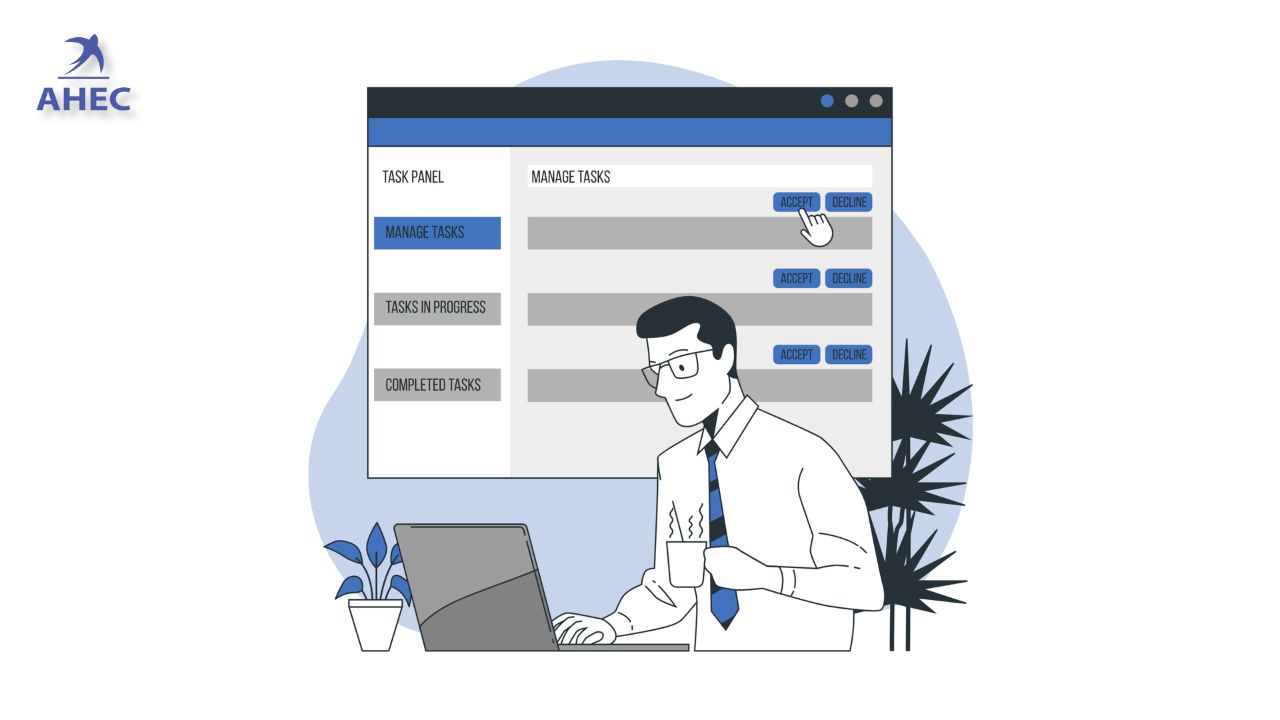
Change Management Assignment Help

Operation management Assignment Help

Strategy Assignment Help

Human Resource Management Assignment Help

Psychology Assignment Writing Help
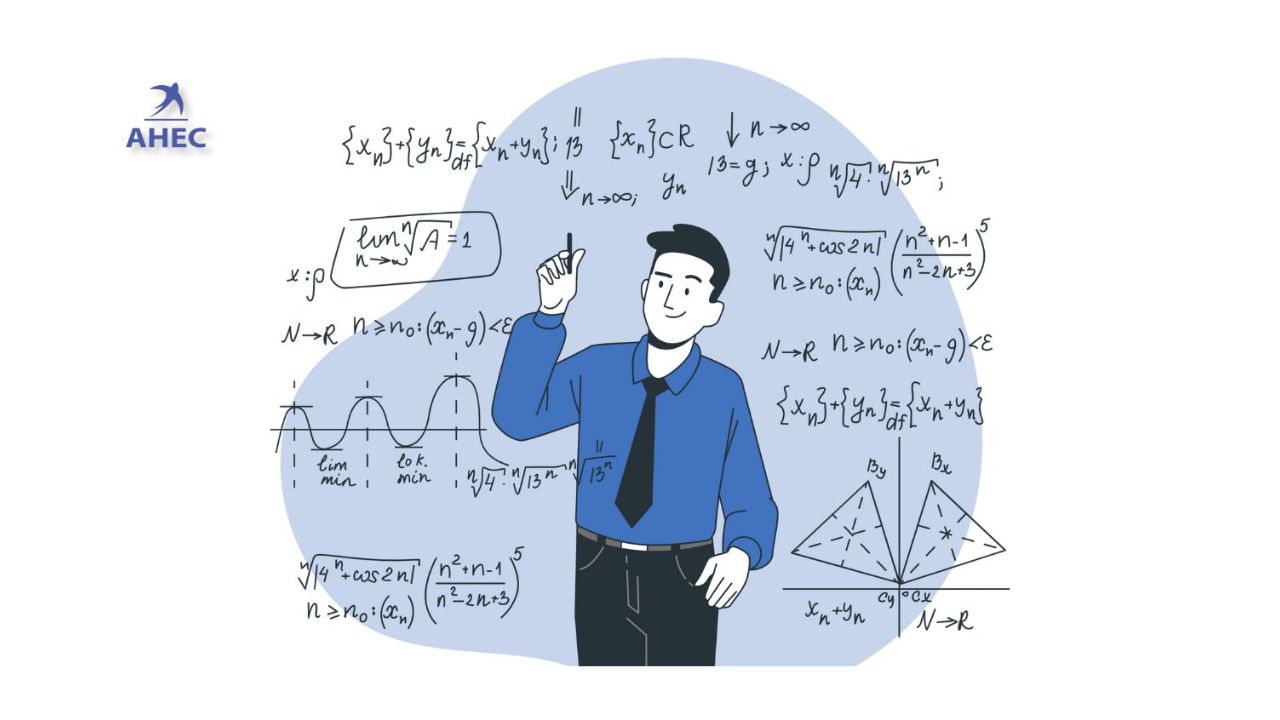
Algebra Homework Help

Best Assignment Writing Tips

Statistics Homework Help

CDR Writing Services

TAFE Assignment Help

Auditing Assignment Help

Literature Essay Help

Online University Assignment Writing

Economics Assignment Help

Programming Language Assignment Help

Political Science Assignment Help

Marketing Assignment Help

Project Management Assignment Help

Geography Assignment Help

Do My Assignment For Me

Business Ethics Assignment Help

Pricing Strategy Assignment Help

The Best Taxation Assignment Help

Finance Planning Assignment Help

Solve My Accounting Paper Online

Market Analysis Assignment

4p Marketing Assignment Help

Corporate Strategy Assignment Help

Project Risk Management Assignment Help

Environmental Law Assignment Help

History Assignment Help

Geometry Assignment Help

Physics Assignment Help

Clinical Reasoning Cycle

Forex Assignment Help
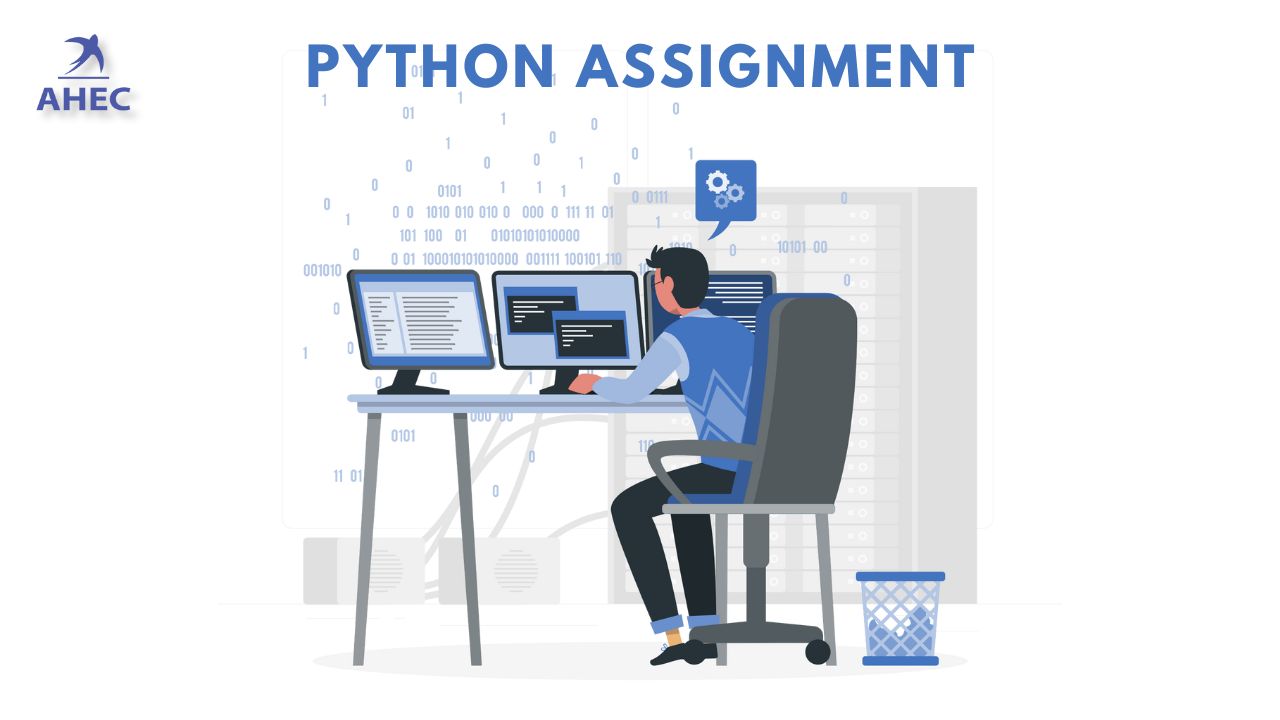
Python Assignment Help

Behavioural Finance Assignment Help

PHP Assignment Help
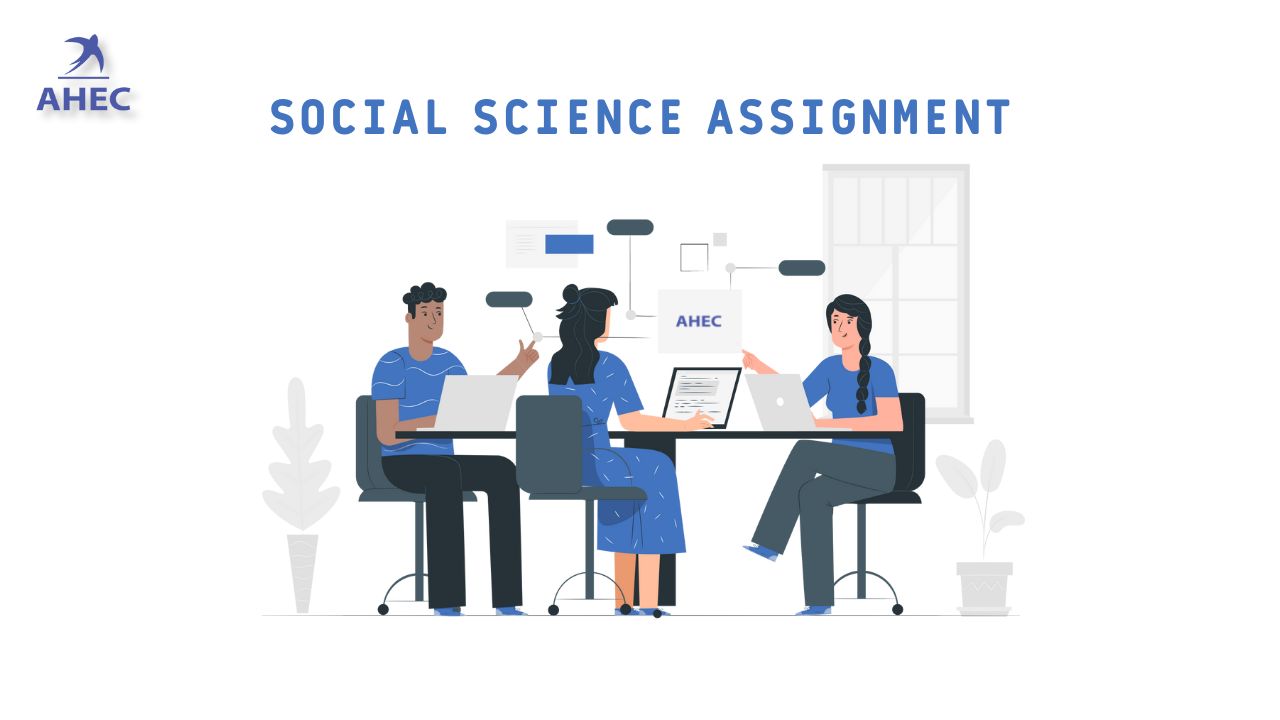
Social Science Assignment Help

Capital Budgeting Assignment Help

Trigonometry Assignment Help

Java Programming Assignment Help

Corporate Finance Planning Help

Sports Science Assignment Help

Accounting For Financial Statements Assignment Help

Robotics Assignment Help

Cost Accounting Assignment Help

Business Accounting Assignment Help

Activity Based Accounting Assignment Help

Econometrics Assignment Help

Managerial Accounting Assignment Help

R Studio Assignment Help
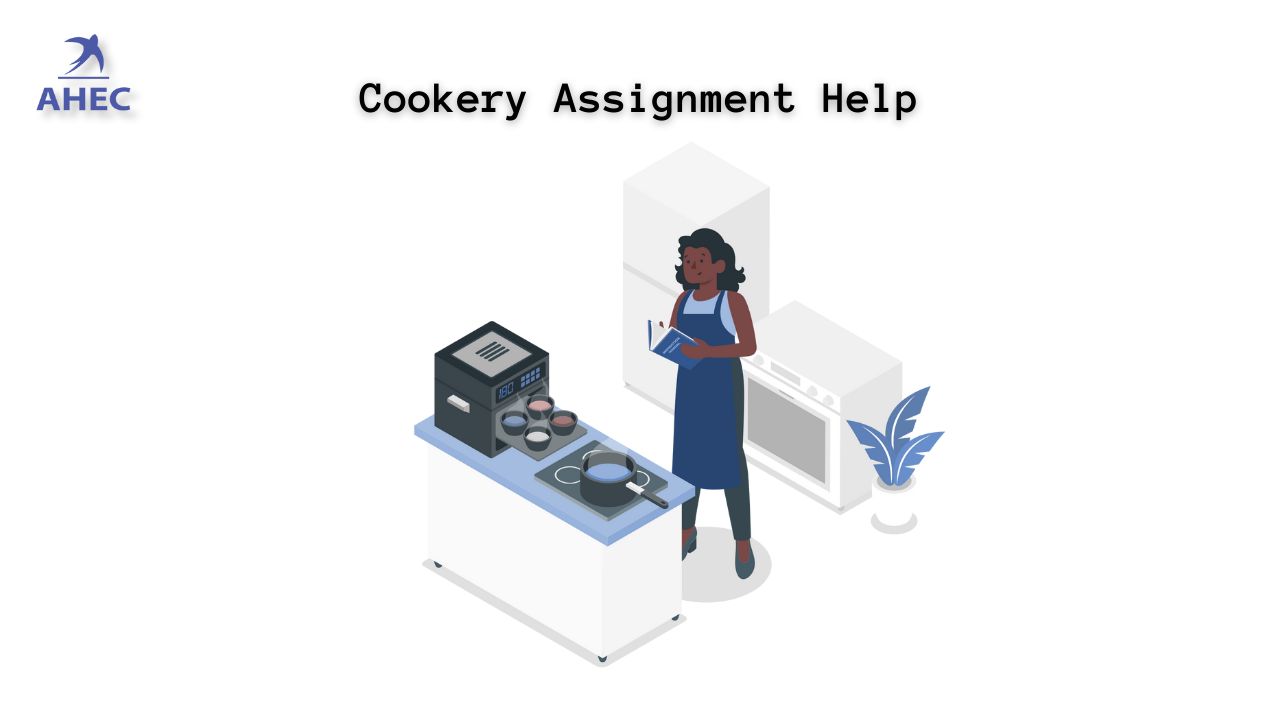
Cookery Assignment Help

Solidworks assignment Help

UML Diagram Assignment Help

Data Flow Diagram Assignment Help

Employment Law Assignment Help

Calculus Assignment Help

Arithmetic Assignment Help

Write My Assignment

Business Intelligence Assignment Help

Database Assignment Help

Fluid Mechanics Assignment Help

Web Design Assignment Help

Student Assignment Help

Online CPM Homework Help

Chemistry Assignment Help

Biology Assignment Help

Corporate Governance Law Assignment Help

Auto CAD Assignment Help

Public Relations Assignment Help

Bioinformatics Assignment Help
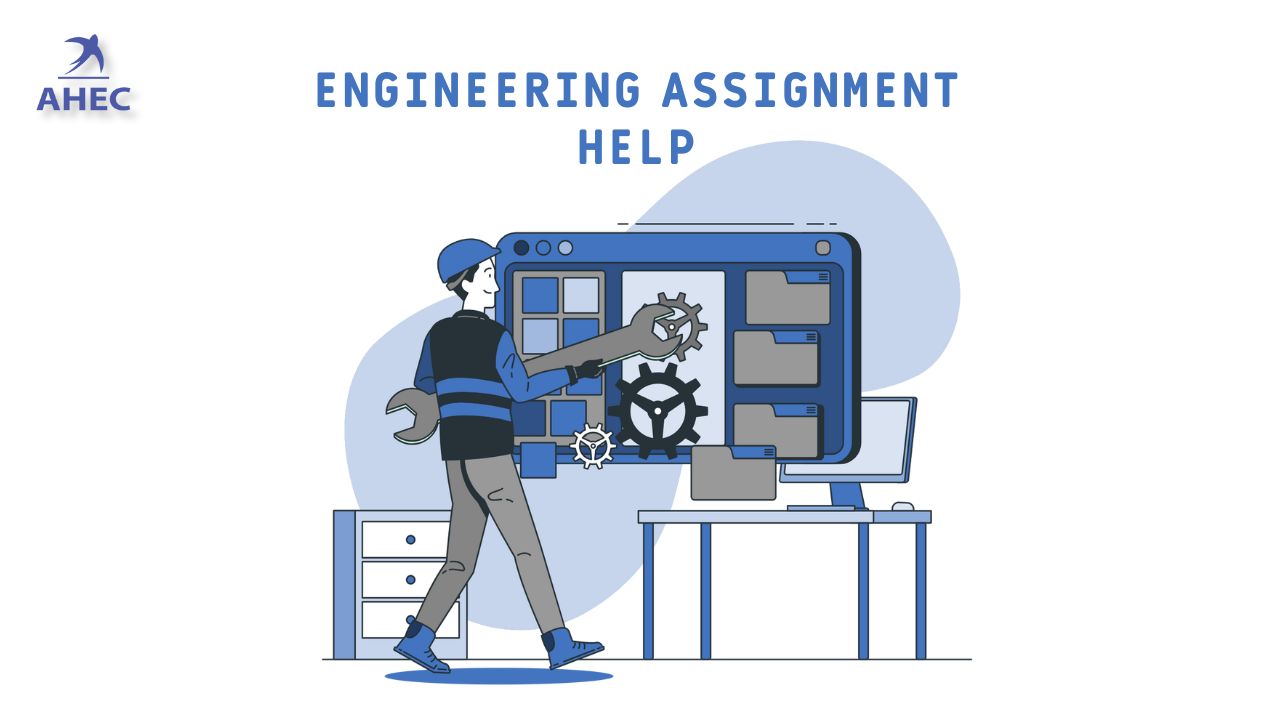
Engineering Assignment Help
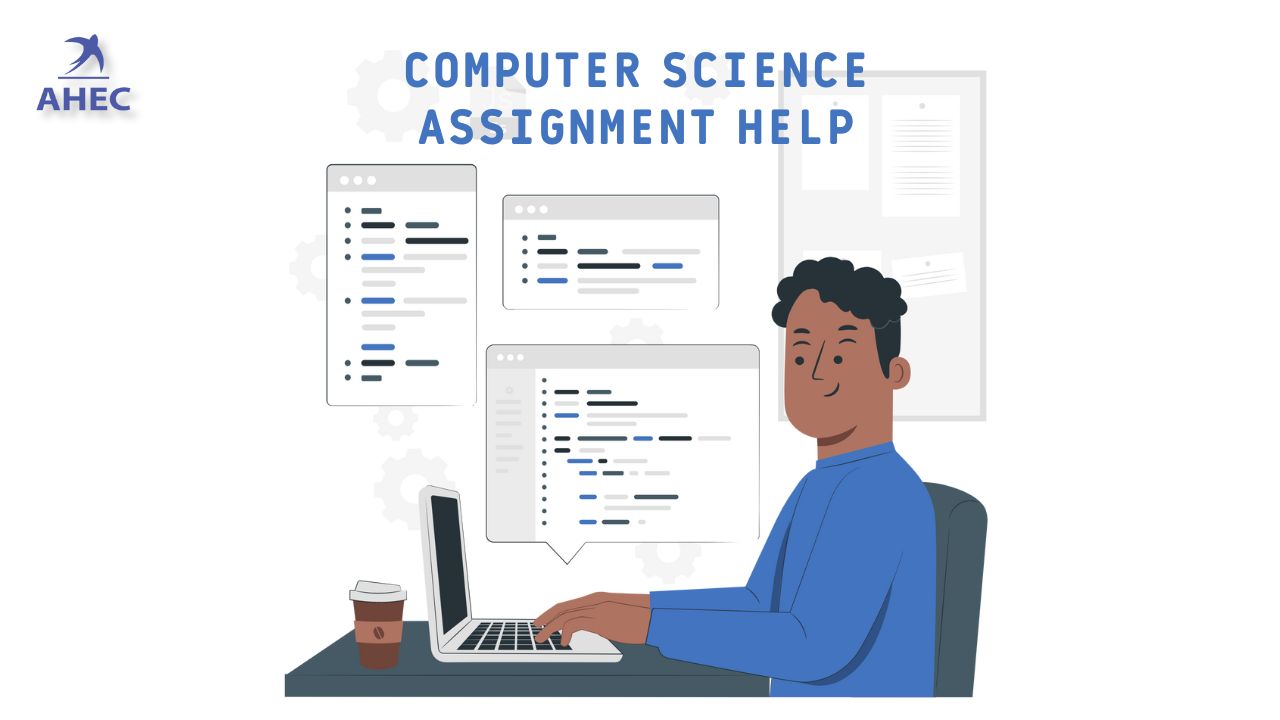
Computer Science Assignment Help

C++ Programming Assignment Help

Aerospace Engineering Assignment Help

Agroecology Assignment Help

Finance Assignment Help

Conflict Management Assignment Help

Paleontology Assignment Help

Commercial Law Assignment Help

Criminal Law Assignment Help

Anthropology Assignment Help

Biochemistry Assignment Help

Get the best cheap assignment Help

Online Pharmacology Course Help

Urgent Assignment Help

Paying For Assignment Help

HND Assignment Help

Legitimate Essay Writing Help

Best Online Proofreading Services

Need Help With Your Academic Assignment

Assignment Writing Help In Canada

Assignment Writing Help In UAE

Online Assignment Writing Help in the USA

Assignment Writing Help In Australia

Assignment Writing Help In the UK

Scholarship Essay Writing Help

University of Huddersfield Assignment Help

Ph.D. Assignment Writing Help

Law Assignment Writing Help

Website Design and Development Assignment Help
Radiology Thesis Research Topics
A dissertation, or thesis, is an integral part the Radiology curriculum. It can be called MD, DNB, or DMRD. For your convenience, we have tried to collect radiology thesis topics from different sources. Writing a Radiology thesis is not for everyone. There is no way around it so accept it and get on with it. #PhilosophyGyan!). Get started on your thesis as soon as you can. You can finish your thesis before the exams to avoid stress. Your thesis may need to be edited many times so be ready for this and plan your time accordingly.
Here are some tips for choosing the right topic and thesis in Radiology research:
- Prospective studies are more effective than retrospective ones.
- For your radiology thesis, choose a topic that is simple.
- You can choose a new topic if you're really interested in research and have a mentor to guide you. After you're done, make sure you publish your research.
- It is a good idea to stick with a topic for your thesis that won't take too much of your time in most cases.
- This does not mean you should abandon your thesis or 'Ctrl L + CtrlV' it from someone from another university. Writing your thesis is the first step in research methodology. Please do it honestly.
- However, don't spend too much time writing/collecting data to support your thesis.
- Don't put off preparing your thesis. Once you have been given a guideline, begin researching the topics and writing the review.
- Do not rush to finish your thesis until a few months before the exam.
- Some people have been unable to appear on the exam due to not having submitted their thesis on time. Do not take your thesis lightly.
- I will reiterate once more: Do not choose the thesis topic of someone else. Learn about the types of cases your Hospital treats. A good thesis on a common topic is better than one that is poorly written on a more obscure one.
List of Radiology Thesis Topics
- The state of the art in MRI for the diagnosis of hepatic focal lesion
- Multimodality imaging evaluation for sacroiliitis in patients newly diagnosed with spondyloarthropathy
- Multidetector computed Tomography in Oesophageal Varices
- The role of positron emission imaging tomography and computed tomography for the diagnosis of thyroid cancer
- Ultrasound elastography is used to evaluate focal breast lesions
- Assessment of traumatic spinal injuries: role of MRI diffusion tensor imagery
- Sonographic imaging for male infertility
- Comparative analysis of digital subtraction and color Doppler in patients with occlusive arterial diseases
- CT urography and haematuria: What is its role?
- Functional magnetic resonance imaging plays a vital role in brain tumor surgery safety
- Prediction of preeclampsia by Doppler uterine artery
- Evaluation of neonatal Cholestasis: Role of Doppler ultrasonography and gray scale
- Validity of MRI for diagnosis of congenital anorectal abnormalities
- Assessment of clubfoot: Role of sonography
- Diffusion MRI plays a role in the preoperative evaluation for brain neoplasms
- Pre-anaesthetic evaluation and laryngeal conditions.
- Study of intrauterine growth restriction: multivessel (arterial, venous) Doppler velocity
- Multiparametric 3tesla-MRI for suspected prostatic malignancy
- Sonography is an important tool for identifying benign nodules in the thyroid.
- Multiple sclerosis: Role of advanced magnetic resonance imaging sequences
- Evaluation of jaw lesions: role of multidetector computed Tomography
- Ultrasound and MR Imaging are important in the evaluation of Musculotendinous Pathologies of Shoulder Joint
- Perfusion computed tomography plays a role in the assessment of cerebral blood flow, blood volume, and vascular permeability for cerebral neoplasms
- MRI flow quantification is used to assess the most common csf flow abnormalities
- Diffusion-weighted MRI is important in the evaluation of prostate lesions. It also helps to determine histopathological correlation.
- CT enterography for evaluation of small bowel problems
- To detect recurrence, compare perfusion magnetic resonance imaging and magnetic resonance spectroscopy in post-radiotherapy treated gliomas.
- Evaluation of paediatric retroperitoneal masses using multidetector computed Tomography
- Multidetector computed tmography plays a role in neck lesions
- Indian population estimates standard liver volume
Topics for a Radiology dissertation
- Multislice CT scan, barium swallow and their role in the estimation of the length of oesophageal tumors
- Malignant Lesions-A Prospective Study.
- Ultrasonography is an important tool for the diagnosis of acute abdominal disease in children.
- Role of three dimensional multidetector CT hysterosalpingography in female factor infertility
- Comparative evaluation of multidetector computedtomography (MDCT), virtual tracheobronchoscopy, and fiberoptic traceo-bronchoscopy for airway diseases
- The role of multidetector CT for small bowel obstruction evaluation
- Sonographic evaluation of adhesive capsulitis in the shoulder
- Utility of MR Urography Versus Other Techniques in Obstructive Uropathy
- An MRI of the postoperative knee
- 64-slice multi detector computed tomography plays an important role in the diagnosis of mesenteric and bowel injury after blunt abdominal trauma.
- In the evaluation of focal liver lesion, sonoelastography is combined with triphasic computed Tomography
- Evaluation of the role of transperineal ultrasound and magnetic resonance imaging in urinary stress incontinence in women
- Multidetector computed morphographic features of abdominal hernias
- Ultrasound elastography is used to evaluate lesions in major salivary glands
- Female urinary incontinence: Transvaginal ultrasound and Magnetic Resonance Imaging
- Evaluation of colonic lesions using MDCT colonography and double contrast barium enema
- Role of MRI for diagnosis and staging urinary bladder carcinoma
- Children with febrile neutropenia: Spectrum of imaging findings
- Children with chest tuberculosis: Spectrum of radiographic appearances
- Computerized tomography plays a role in the evaluation of mediastinal masses during paediatrics
- Diagnosis of renal artery stenosis by comparison of multimodality imaging in diabetics
- Multidetector CT virtual Hysteroscopy is an important tool in the diagnosis of female infertility.
- Evaluation of Crohn's Disease: The role of multislice computed Tomography
- CT quantification of airway and parenchymal parameters using 64-slice MDCT in patients with chronic obstructive lung disease
- Comparative evaluation of MDCT versus 3t MRI in radiographically diagnosed jaw lesions.
- Evaluation of the diagnostic accuracy of ultrasonography, colour-Doppler sonography, and low dose computed Tomography in acute appendicitis
- Ultrasonography , magnetic resonance cholangio-pancreatography (MRCP) in assessment of pediatric biliary lesions
- Multidetector computed Tomography in Hepatobiliary Lesions
- Assessment of peripheral nerve lesions using high resolution ultrasonography (HRU) and colour Doppler
- Multidetector computed Tomography in Pancreatic Lesions
Thesis topics in DNB radiology
- Magnetic resonance perfusion weighted imagery & spectroscopy are used to grade gliomas by correlating the perfusion parameter of the lesion and the final histopathological grade
- Magnetic resonance assessment of abdominal tuberculosis.
- Low dose spiral HRCT for diffuse lung disease is useful in diagnosing
- Evaluation of endometrial lesion evaluations using dynamic contrast enhanced and diffusion-weighted magnetic resonance imaging
- Digital breast tomosynthesis and contrast enhanced digital mammography are both available for early diagnosis of breast lesions.
- Assessment of Portal Hypertension using Colour Doppler flow and magnetic resonance imaging
- Magnetic resonance imaging allows for the evaluation of musculoskeletal problems
- Diffusion magnetic resonance imaging is an important tool in the diagnosis of brain lesions that are neoplastic or inflammatory.
- Radiological spectrum of HIV-infected children with chest diseases High resolution ultrasonography for neck masses in children
- With surgical findings
- Evaluation of spinal trauma: Role of MRI
- Type 2 diabetes mellitus: Sonographic evaluation of the peripheral nerves
- Perfusion computed tomography plays a role in the evaluation neck masses and correlation
- Ultrasonography plays a role in diagnosing knee joint problems
- Ultrasonography plays a role in the evaluation of different causes of pelvic pain during the first trimester.
- The Evaluation of Diseases of the Aorta or its Branches: Magnetic Resonance Angiography's Role
- MDCT fistulography for evaluation of fistulas in Ano
- Multislice CT plays a role in the diagnosis of small intestinal tumors
- High resolution CT plays a role in the differentiation of benign and malignant pulmonary nodules among children
- Multidetector computed urography in the treatment of urinary tract disorders: A study
- High resolution sonography plays an important role in the assessment of the ulnar nerve for patients suffering from leprosy.
- Radiological pre-operative evaluation of malignant and locally aggressive musculoskeletal tumors using magnetic resonance imaging and computed tomography.
- In acute pelvic inflammatory diseases, the role of MRI and ultrasound
- In the evaluation of shoulder pain, ultrasonography is more effective than computed tomographicarthrography
- Multidetector Computed Tomography is an important tool for patients suffering from blunt abdominal trauma.
- Evaluation of breast lesions: The role of extended field-of-view sonography and compound imaging
- Multidetector CT, perfusion CT are used to evaluate focal pancreatic lesion.
- Assessment of breast masses using sono-mammography or colour Doppler imaging
- Evaluation of laryngeal masses: role of CT virtual laryngoscopy
- Triple phase multi-detector computed tomography in the liver masses
Radiology thesis topics for reference
- Ultrasound elastography is used to evaluate hepatic dysfunction in chronic liver disease.
- Assessment of hydrocephalus in children: Role of MRI
- Sonoelastography is an important tool in the diagnosis of breast lesions
- Patients with intracranial tumors: The impact of volumetric tumor doubling on survival
- Perfusion computed tomography plays a role in the diagnosis of colonic lesions
- Proton MRI spectroscopy plays a role in the evaluation and treatment of temporal lobe epilepsy
- Evaluation of peripheral arterial disease: role of multidetector CT and Doppler ultrasound
- Multidetector computed Tomography plays a role in paranasal sinus disease
- Virtual endoscopy with MDCT is an effective tool for diagnosing and evaluating gastric problems
- High resolution 3 Tesla MRI for the assessment of hindfoot and ankle pain.
- Ultrasonography transperineal in infants suffering from anorectal malformation
- In order to detect varices in patients with cirrhotics, CT portography uses MDCT instead of color Doppler
- CT urography plays a role in the evaluation of a dilapid ureter
- Dynamic contrast-enhanced multidetector CT characterizes pulmonary nodules
- Comprehensive CT imaging of an acute ischemic stroke using multidetector CT
- Fetal MRI plays a vital role in diagnosing intrauterine neurological congenital abnormalities
- Multidetector computed angiography plays a role in pediatric chest mass
- Multimodality imaging for the assessment of breast lesions that are palpable or non-palpable.
- Sonographic Assessment of Fetal Nasal Bone Length at 11-28 Gestational Days and Its Relationship to Fetal Outcome.
- The Role Of Sonoelastography and Contrast-Enhanced Computed Tomography in Evaluation Of Lymph Node Metastasis in Head and Neck Cancers
- Unenhanced computed Tomography allows for assessment of the hepatic fat in fatty liver disease.
- Correlation between vertebral marrow fat and spectroscopy, diffusion-weighted MRI imaging, and bone mineral density in postmenopausal females
- Comparative assessment of CT coronary imaging with conventional catheter coronary angiography
- Ultrasound evaluation of the length and diameter of the descending colon in normal and intrauterine-restricted foetuses
- Prospective study of the hepatic vein waveform in liver cirrhosis. Correlation with Child Pugh's classification.
- CT angiography for evaluation of coronary artery bypass graft patency in symptomatic patients' functional assessment myocardium using cardiac MRI in patients suffering from myocardial injury
- MRI Evaluation of HIV Positive Patients with Central Nerv System Manifestations
- MDCT evaluation of mediastinal hilar masses
- Evaluation of labro-ligamentous complex lesion by MRI & MRI arthrography shoulder joint
- Imaging plays a role in the assessment of soft tissue vascular malformations
Thesis topics in MD radiology:
- The Role of CT Virtual Cystoscopy in Urinary Bladder Neoplasia Diagnosis
- Multislice CT is an essential diagnostic technique for small intestinal tumours.
- "Mri Flow Quantification in the Evaluation of the Most Common CSF Flow Anomals"
- "The Fetal Mri Role in the Diagnosis of Intrauterine Neurological CongenitalAnomalies"
- Transcranial Ultrasound in the Diagnosis of Neonatal Brain Insults
- "Interventional Imaging Procedures' Role in the Treatment of Specific Gynecological Disorders"
- The Role of Radiological Imaging in Endometrial Carcinoma Diagnosis
- "The Role of High Resolution CT in the Diagnosis of Benign and Malignant Pulmonary Nodules in Children"
- Ultrasonography is a valuable diagnostic technique for knee joint pathologies.
- "The Role of Diagnostic Imaging Modalities in Assessing Post-Liver Transplantation Recipient Complications"
- "In Diagnosis, Diffusion-Weighted Magnet Resonance Imaging
- Brain Tumor Characterization in Relation to Conventional Mri
- PET-CT and Hepatic Tumor Evaluation
- "The Role of CT in the Evaluation of Mediastinal Masses in Pediatric Patients"
- "Female Urinary Incontinence: Transvaginal Ultrasound and Magnetic Resonance Imaging
- Multidetector CT is an important tool in diagnosing urinary bladder cancer
- "The Role Of Transvaginal Ultrasound in Diagnosis and Treatment Of Female Infertility
- Role Of Diffusion-Weighted Mri Imaging In Evaluation Of Cancer Prostate
- "Role Of Emission Tomography With Computed Tomography In Diagnosis Of Cancer Thyroid"
- CT Urography in the Case of Haematuria: What Role Does It Play?
- "The Role of Ultrasonography in the Diagnosis of Acute Abdominal Disorders in Children"
- "The Role of Functional Magnetic Resonance Imaging in Increasing the Safety of Brain Tumor Surgery"
- The Role of Sonoelastography in the Characterization of Breast Lesions
- "Ultrasonography and Magnetic Resonance Cholangiopancreatography (MRCP) in Pediatric Biliary Lesions"
- "The Role of Ultrasound and Color Doppler Imaging in the Evaluation of Acute Abdominal Pain Caused by Female Genital Causes"
- "The Role of Multidetector CT Virtual Laryngoscopy in the Diagnosis of Laryngeal Mass Lesions"
- The Postoperative Knee MRI
- Mri's Role in Valvular Heart Disease Assessment
- Fetal Abdominal Abnormalities: The Role of 3D and 4D Ultrasonography
- State-of-the-Art Hispatic Focal Lesions
Get Trustworthy Thesis Assistance Offerd From AHECounselling
Take a deep breath, and think about the issues. What are your problems when writing a thesis. Why can't your thesis be transferred to our thesis-helpers? Are you looking for additional assistance in writing your thesis? These concerns can be frustrating. However, losing your marks is not something you want. Consider all the reasons you should visit AHECounselling to get dissertation help.
We are proud to offer our thesis writing services and assist scholars with these problems. You will find qualified thesis helpers at AHECounselling that can meet all your needs. We can answer all your questions about any topic. Professional thesis assistance is also available to help with the drafting, editing, and proofreading. It is now time to click the Order Now button. Place your order quickly before it is too late to submit your thesis!
Frequently asked questions
How do i choose a thesis for my radiology .
Select a straightforward subject for your radiology thesis. You can pick a unique topic if you have a competent mentor who will help you and are really engaged in research. Once you've completed that, be sure to publish your study as soon as it's finished.
What are the problems in radiology ?
The "invisible" radiologist, tissue characterization, and micro resolution are among the problems. Opportunities exist in interventional radiology and quantitative imaging. Radiological screening practices will alter due to in vitro diagnostics. Radiology may have varied effects from automation.
What are the 5 most common errors in radiology ?
In 2016, Johnson found that failure to consult earlier studies or reports, limitations in imaging technique (inappropriate or incomplete protocols), inaccurate or incomplete history, the lesion's location outside of the region of interest, and a failure to search were the most frequent causes of diagnostic errors.
What do radiology means ?
Imaging technology is used in the medical specialty of radiology to identify and treat illness. Diagnostic radiology and interventional radiology are two subfields of radiology. Radiologists are medical professionals with a focus on radiology.
What is an example of radiology ?
The most typical kinds of radiological diagnostic tests include: The term "computed tomography" (CT) is also used for CAT scans, which include CT angiography. upper gastrointestinal and barium enema fluoroscopy. MRI and MR angiography are terms for magnetic resonance imaging.
Does radiologist do surgery ?
A surgical operation, for instance, may be supported by medical imaging used by an interventional radiologist. With the use of this imaging, operations may be performed more safely and with a quicker recovery. Typically, interventional radiologists do keyhole surgery.
What does the future hold for radiology ?
Future phases of AI in radiology will build sophisticated deep learning algorithms, more complicated artificial neural networks, and intricate integration of several data systems (pathology and radiology) so that AI in medicine and radiology will continue to advance and become more potent.
Is AI going to replace radiologists ?
Radiologists cannot be replaced by AI. However, it can make radiologists' routine work easier. Early adopters of AI will therefore probably lead the radiology industry in the future. Some radiology medical students have changed their perspectives in response to this topic, which has raised concerns.
Which field is better nursing or radiology ?
Radiologic technologists made an average yearly pay of $56,450 as of 2012, according to the BLS. This is significantly greater than the average yearly salary of LPNs and certified vocational nurses, which was $42,400. But the majority of nurses make more money than radiologic technologists.
How do radiology techs make more money ?
You will be paid extra if you select a shift that starts later in the day. You will get paid extra if you pick shifts on the weekends. A radiologic technician who works the night shift gets paid much more per hour than one who works the day shift.
Do radiologists talk to patients ?
Direct patient interaction is already a common practice in several radiology subspecialties. Before, during, and after tests, sonologists, fluoroscopists, interventional radiologists, women's imagers, and pediatric radiologists frequently speak with their patients directly.
How long does it take to become a radiologist ?
You must complete a minimum of seven years of formal medical education. A master's in radiology follows a bachelor's in radiography with a biology and physics emphasis, similar to an MBBS or premedical degree.
Can radiologist do pain management ?
Numerous operations that our radiologists may carry out can aid in the pain reduction of suffering individuals. Many of those procedures can be very beneficial for people with joint pain, back pain, or chronic face discomfort.
List of Radiology Thesis Topics ?
- The role of positron emission imaging tomography and computed tomography in the diagnosis of thyroid cancer
Radiology thesis topics for reference ?

Top 10 Best Universities Ranking list in India 2022

Generic Conventions: Assignment Help Services

Research Paper Topics For Medical

Top 5 Resources for Writing Excellent Academic Assignments

How to Write a Literature Review for Academic Purposes

Tips for Writing a killer introduction to your assignment

How To Write A Compelling Conclusion For Your University Assignment

Research Papers Topics For Social Science

Best 150 New Research Paper Ideas For Students

7 Best Plagiarism Checkers for Students And Teachers in 2024
Enquiry form.
RSNA 2020 Trending Topics
All virtual rsna 2020 promises attendees a robust program full of human insight/visionary medicine.

While RSNA 2020's all-virtual annual meeting may feel different than previous meetings, attendees can count on RSNA to deliver a meaningful, interactive meeting experience and world-class programming to virtual attendees across the globe.
RSNA 2020, Human Insight/Visionary Medicine , will provide a seamless experience offering interactive science and education programming and an extensive on-demand catalog with more available CME opportunities than ever before. The program, which expands on RSNA’s already successful virtual meeting, offers live Q&A for many sessions that will connect attendees with peers and colleagues of every subspecialty across the world.
To help attendees plan their schedules for this unique meeting, RSNA’s Scientific Program, Refresher Course and Education Exhibits committees chairs and subcommittee chairs offer a preview of the trends, hot topics and trailblazing research in each of the subspecialties available at RSNA 2020.
“While the format may be different, this year’s virtual meeting offers great flexibility for attendees to access a wide range of programming and learning resources,” said Zhen Jane Wang, MD, chair of the RSNA Scientific Program Committee. “Attendees can take advantage of the featured sessions, which offer opportunities to interact with abstract presenters and the chance to access a large number of on-demand sessions at their convenience throughout the week and, with Premium access, after the annual meeting.”
Innovative research continues to push the boundaries in all subspecialties, according to Dr. Wang. In particular, she noted that COVID-19 related topics are prevalent in a number of subspecialties in sessions, exhibits and research. In particular, five Hot Topic sessions update COVID-19 subjects, including non-pulmonary manifestations, neurological and neuroimaging and chest findings, as well as two sessions on radiology department readiness and workforce resilience.
In addition, attendees should look for A Comprehensive Imaging Review of COVID-19 Pneumonia with Focus on RSNA Expert Consensus, Fleischner Society Statement and ACR Recommendations: Challenges, Opportunities and Future Direction .
“Artificial intelligence (AI) remains a hot topic and there is a lot of interesting science on how AI can improve disease-specific diagnoses and how it can be integrated into clinical workflow,” Dr. Wang said. “Also of interest and great relevance to clinical practice is work presented on the validation of various classification systems and reporting systems used by many radiologists.”
Watch the video below for additional insights from Dr. Wang into RSNA 2020 scientific program content:
The education exhibits also highlight subspecialty classification and reporting systems and continue to showcase a wide breadth of innovative research that highlights major trends across all subspecialties, according to Christine O. (Cooky) Menias, MD, chair of the RSNA Education Exhibits Committee.
“In addition to research presented on various reporting systems such as LIRADS and PIRADS, many subspecialties offer exhibits on COVID-19, the unique science around e-cigarette and vaping lung damage, PET/CT and PET/MRI, AI and machine learning (ML) and 3D printing and models,” Dr. Menias said. “The exhibits this year showcase the wide variety of challenges and opportunities facing radiology, including diversity, inclusion and just culture. There are also exhibits about patient care, quality improvement, mentoring and social justice.”
Educational courses remain among the most popular and contain comprehensive content on a wide array of topics vital to clinical practice.
“Artificial intelligence remains a hot and impactful topic across the entire specialty,” said Laura Bancroft, MD, chair of the Refresher Course Committee. “Some notable practice-based courses include Impact of COVID-19 on Workforce Resilience , Mass Casualty Imaging and Workflow , Strategies to Suppress Errors and Biases in Diagnostic Radiology , and Taking Action to Promote Gender Inclusion in Radiology .”
Watch the video below from Dr. Bancroft for insights into the refresher courses at RSNA 2020:
For an overview of this past year’s most impactful research, look for the Special Interest Session, Review of 2020: New Research that Should Impact Your Practice . The two-part Friday Imaging Symposium offers a review of imaging cases in many subspecialties, including neuroradiology, breast, gastrointestinal and cardiothoracic radiology.
RSNA committees are sponsoring a number of sessions. The RSNA Committee on Diversity, Equity & Inclusion presents the Special Interest Session, Exposing Our Blindside and Overcoming Unconscious Bias . The RSNA Public Information Committee presents the Special Interest Session Improving Patient Experience through Human Design Thinking . In addition, the RSNA Professionalism Committee presents Taking Action to Promote Gender Inclusion in Radiology: A Roadmap for Progress . The RSNA Committee on Diversity, Equity & Inclusion also sponsors the Gender-based Harassment and Microaggressions session.
Click on the subspecialties below to preview the trends, hot topics and research available at RSNA 2020.
- Breast Imaging
- Cardiac Radiology
- Chest Radiology
- Emergency Radiology
- Gastrointestinal Radiology
- Genitourinary Radiology/Uroradiology
- Health Service Policy and Research/Policy and Practice
- Informatics
- Molecular Imaging
- Multisystem/Special Interest
- Musculoskeletal Radiology
- Neuroradiology
- Nuclear Medicine
- Obstetric/Gynecologic Radiology
- Pediatric Radiology
- Radiation Oncology and Radiobiology
- Vascular/Interventional
Look for these additional program highlights in each subspecialty.
For More Information
Register for the meeting at RSNA.org/Register .
Read RSNA News stories about RSNA 2020:
RSNA 2020: Program Highlights
Innovations Abound at RSNA 2020 Virtual Exhibition
Embracing Diversity, Equity and Inclusion in Radiology
RSNA Subcommittee Chairs
Scientific Program Subcommittees
Ronald S. Arellano, MD, Vascular and Interventional
Ferco H. Berger, MD, Emergency Radiology
Robert D. Boutin, MD, Musculoskeletal
Ciprian Catana, MD, PhD, Molecular Imaging
Lynn A. Fordham, MD, Pediatric Radiology
Fiona J. Gilbert, MD, Breast
Phillip J. Koo, MD, Nuclear Medicine
Jerome Z. Liang, PhD, Physics
John P. Lichtenberger III, MD, Chest
Desiree E. Morgan, MD, Gastrointestinal
Karen G. Ordovas, MD, Cardiac
Andrew B. Rosenkrantz, MD, Genitourinary
Nabile M. Safdar, MD, Radiology Informatics
Cynthia S. Santillan, MD, Health Services Policy and Research
Anna Shapiro, MD, Radiology Oncology and Radiobiology
Max Wintermark, MD, Neuroradiology
Education Exhibits Subcommittees
Samuel E. Almodovar-Reteguis, MD, Nuclear Medicine
Edson Amaro Jr, MD, PhD, Neuroradiology
Barbaros S. Erdal, PhD, Radiology Informatics
William J. Grande, MD, Vascular/Interventional
Ambrose J. Huang, MD, Musculoskeletal
Kirti M. Kulkarni, MD, Breast
Brent P. Little, MD, Chest
Courtney C. Moreno, MD, Gastrointestinal
Mariam Moshiri, MD, Obstetrics/Gynecology
Nadeem Parkar, MD, Cardiac
Gary R. Schooler, MD, Pediatrics
William F. Sensakovic, PhD, Physics
Anna Shapiro, MD, Radiation Oncology & Radiobiology
Anup S. Shetty, MD, Multisystem/Special Interest
Scott D. Steenburg, MD, Emergency Radiology
Ashish P. Wasnik, MD, Uroradiology
Jeffrey R. Wesolowski, MD, Policy and Practice
Refresher Course Committee
Margarita L. Zuley, MD, Track Chair/Breast Imaging
Maxine S. Jochelson, MD, Track Vice Chair/Breast Imaging
Eric E. Williamson, MD, Track Chair/Cardiac
Jeremy J. Erasmus, MD, Track Chair/Chest
Ioannis Vlahos, MRCP, FRCR, Track Vice Chair/Chest
Petra J. Lewis, MBBS, Track Chair/Education
Douglas S. Katz, MD, Track Chair/Emergency Radiology
Manickam Kumaravel, MD, FRCR, Track Vice Chair/Emergency Radiology
Rathan M. Subramaniam, MD, PhD, Track Chair/Emerging Technology
Diane C. Strollo, MD, Track Chair/Essentials
Judy Yee, MD, Track Chair/GI
Matthew S. Davenport, MD, Track Chair/GU
Stephen C. O'Connor, MD, Track Chair/Hands On
Tabassum A. Kennedy, MD, Track Chair/Head & Neck
Howard P. Forman, MD, Track Chair/Health Policy & Practice
Charles E. Ray Jr, MD, PhD, Track Chair/Interventional
Ajay Gupta, MD, Track Chair/Introduction to Research
Katherine E. Maturen, MD, Track Chair/Introduction to Research
Yoshimi Anzai, MD, Track Chair/Leadership & Management
Bachir Taouli, MD, Track Chair/MR
Leon Lenchik, MD, Track Chair/Musculoskeletal
Linda Probyn, MD, Track Vice Chair/Musculoskeletal
Christopher P. Hess, MD, PhD, Track Chair/Neuro
Ajay Gupta, MD, Track Vice Chair/Neuro
Katherine A. Zukotynski, MD, PhD, Track Chair/Nuclear Medicine
Evis Sala, MD, PhD, Track Chair/Oncologic Imaging
Geetika Khanna, MD, MS, Track Chair/Pediatrics
Adina L. Alazraki, MD, Track Vice Chair/Pediatrics
Lifeng Yu, PhD, Track Chair/Physics (Diagnostic Radiology)
Jon J. Kruse, PhD, Track Chair/Physics (Radiation Oncology)
Tessa S. Cook, MD, PhD, Track Chair/Radiology Informatics
Luciano M. Prevedello, MD, MPH, Track Chair/Radiology Informatics
Christopher J. Roth, MD, Track Chair/Radiology Informatics
Mitchell E. Tublin, MD, Track Chair/Ultrasound
Vincent B. Ho, MD, MBA, Track Chair/Vascular
James M. Kofler Jr, PhD, AAPM Liaison
Ricardo Restrepo, MD, Case-based Chairman
Jorge A. Soto, MD, Case-based Director/Abdomen
Jiyon Lee, MD, Case-based Director/Breast
Diana Litmanovich, MD, Case-based Director/Cardiac
Edward Y. Lee, MD, Case-based Director/CT
Alexander R. Guimaraes, MD, PhD, Case-based Director/MR
Stacy E. Smith, MD, Case-based Director/Musculoskeletal
Amy F. Juliano, MD, Case-based Director/Neuroradiology
Katherine A. Zukotynski, MD, PhD, Case-based Director/Nuclear Medicine/PET-CT
Abbey Winant, MD, Case-based Director/Pediatric Radiology
Andetta R. Hunsaker, MD, Case-based Director/Thoracic
Deborah J. Rubens, MD, Case-based Director/Ultrasound
Sabala Mandava, MD, Associated Sciences Consortium Chairman
- Bibliography
- More Referencing guides Blog Automated transliteration Relevant bibliographies by topics
- Automated transliteration
- Relevant bibliographies by topics
- Referencing guides
Dissertations / Theses on the topic 'Radiology and radiologists'
Create a spot-on reference in apa, mla, chicago, harvard, and other styles.
Consult the top 39 dissertations / theses for your research on the topic 'Radiology and radiologists.'
Next to every source in the list of references, there is an 'Add to bibliography' button. Press on it, and we will generate automatically the bibliographic reference to the chosen work in the citation style you need: APA, MLA, Harvard, Chicago, Vancouver, etc.
You can also download the full text of the academic publication as pdf and read online its abstract whenever available in the metadata.
Browse dissertations / theses on a wide variety of disciplines and organise your bibliography correctly.
Mabry, Michael R. "A demand model of physician membership in the American College of Radiology." Thesis, This resource online, 1993. http://scholar.lib.vt.edu/theses/available/etd-06232009-063208/.
Rabenius, Michaela. "Deep Learning-based Lung Triage for Streamlining the Workflow of Radiologists." Thesis, Linköpings universitet, Medie- och Informationsteknik, 2019. http://urn.kb.se/resolve?urn=urn:nbn:se:liu:diva-160537.
Savičiūtė, Rasa. "Medicinos personalo (gydytojų radiologų ir radiologijos laborantų), informuotumo apie gaunamą pacientų apšvitą ir radiacinę saugą tyrimas." Master's thesis, Lithuanian Academic Libraries Network (LABT), 2010. http://vddb.laba.lt/obj/LT-eLABa-0001:E.02~2008~D_20101125_185247-37918.
池田, 充., Mitsuru Ikeda, 茂樹 伊藤, Shigeki Ito, 武男 石垣, Takeo Ishigaki, Kazunobu Yamauchi, and 一信 山内. "Evaluation of a neural network classifier for pancreatic masses based on CT findings." Elsevier, 1997. http://hdl.handle.net/2237/5311.
池田, 充., Mitsuru Ikeda, 武男 石垣, Takeo Ishigaki, 一信 山内, and Kazunobu Yamauchi. "Estimation of the size of the media necessary to construct a medical image database." Elsevier, 1996. http://hdl.handle.net/2237/5312.
Massad, Laila. "Desempenho diagnóstico e mapeamento cognitivo cerebral de radiologistas veterinários através de um sistema computacional." Universidade de São Paulo, 2008. http://www.teses.usp.br/teses/disponiveis/5/5160/tde-18122008-095704/.
Axbåge, Daniel, and Johanna Werner. "Mobil Radiologi : Radiologins Roll i Samhället." Thesis, Uppsala universitet, Radiologi, 2016. http://urn.kb.se/resolve?urn=urn:nbn:se:uu:diva-287355.
Al‐Abbadi, Tabarik. "Radiology Reporting Preferences of Non‐Radiologist Ordering Clinicians: Prose? Do you even list?" Thesis, The University of Arizona, 2017. http://hdl.handle.net/10150/623185.
Zdunek, Eliza, and Lorin Demir. "Tecken på barnmisshandel : En litteraturstudie om radiologiska fynd som kan indikera barnmisshandel." Thesis, Umeå universitet, Institutionen för omvårdnad, 2017. http://urn.kb.se/resolve?urn=urn:nbn:se:umu:diva-135007.
Wiberg, Elin, and Cecilia Baltsén. "Röntgensjuksköterskans upplevelse av att arbeta med externa granskare under jourtid : En kvalitativ intervjustudie." Thesis, Hälsohögskolan, Högskolan i Jönköping, HHJ, Avd. för naturvetenskap och biomedicin, 2017. http://urn.kb.se/resolve?urn=urn:nbn:se:hj:diva-36471.
Baltsén, Cecilia, and Elin Wiberg. "Röntgensjuksköterskans upplevelse av att arbeta med externa granskare under jourtid : En kvalitativ intervjustudie." Thesis, Hälsohögskolan, Högskolan i Jönköping, HHJ, Avd. för naturvetenskap och biomedicin, 2017. http://urn.kb.se/resolve?urn=urn:nbn:se:hj:diva-36638.
Meškauskaitė, Kristina. "Kauno miesto asmens sveikatos priežiūros įstaigų radiologijos skyriuose dirbančių darbuotojų darbo aplinkos ir sveikatos tyrimas." Master's thesis, Lithuanian Academic Libraries Network (LABT), 2008. http://vddb.library.lt/obj/LT-eLABa-0001:E.02~2008~D_20080619_145317-17466.
Persson, Emma, and Tran Mylina van. "Förutsättningar för artificiell intelligens i sjukvård - Med fokus på framtida arbetssätt i radiologisk praxis." Thesis, Malmö universitet, Fakulteten för teknik och samhälle (TS), 2018. http://urn.kb.se/resolve?urn=urn:nbn:se:mau:diva-20652.
Ferreira, Lorena Marques. "An?lise cefalom?trica: ortodontistas x radiologistas." Universidade Federal do Rio Grande do Norte, 2015. http://repositorio.ufrn.br/handle/123456789/20074.
Broke, Carolin, and Ida Norström. "Röntgensjuksköterskans bemötande av barn med autismspektrumtillstånd : En litteraturstudie." Thesis, Högskolan i Jönköping, 2019. http://urn.kb.se/resolve?urn=urn:nbn:se:hj:diva-44555.
Bustamante, Heinsohn Diego Victor. "Khamapirad radiologic criteria as a predictor of pneumonia's bacterial etiology." Elsevier Editora Ltda, 2018. http://hdl.handle.net/10757/624609.
Arús, Nádia Assein. "Estudo comparativo da reprodutibilidade de medidas cefalométricas realizadas por radiologistas odontológicos e clínicas de radiologia." reponame:Biblioteca Digital de Teses e Dissertações da UFRGS, 2005. http://hdl.handle.net/10183/6373.
Liukkonen, E. (Esa). "Radiologisten kuvien katselussa käytettävien näyttöjen laatu:näyttöjen laitekanta, suorituskyky ja laadunvalvonta sekä kuvankatseluolosuhteet radiologisissa yksiköissä ja terveyskeskuksissa." Doctoral thesis, University of Oulu, 2010. http://urn.fi/urn:isbn:9789514262180.
Källvant, Jonas, and Theres Lundh. "Värdeskapande användning av radiologi : - Utbildning och mätning för förbättring." Thesis, Hälsohögskolan, Högskolan i Jönköping, HHJ. Kvalitetsförbättring och ledarskap inom hälsa och välfärd, 2013. http://urn.kb.se/resolve?urn=urn:nbn:se:hj:diva-21756.
Eriksson, Rolf. "The Utility of Manganese for Magnetic Resonance Imaging of Transient Myocardial Ischemia." Doctoral thesis, Uppsala : Acta Universitatis Upsaliensis : Univ.-bibl. [distributör], 2005. http://urn.kb.se/resolve?urn=urn:nbn:se:uu:diva-5817.
Edwards, David. "Pre-Clinical Evaluation of a Novel Radiotracer for the Diagnosis of DVT and Pulmonary Embolism." Doctoral thesis, Uppsala : Acta Universitatis Upsaliensis : Univ.-bibl. [distributör], 2006. http://urn.kb.se/resolve?urn=urn:nbn:se:uu:diva-7321.
Radecka, Eva. "Percutaneous Nephrostomies : Planning for an Optimal Access, Complications, Follow-up and Outcome." Doctoral thesis, Uppsala University, Department of Oncology, Radiology and Clinical Immunology, 2005. http://urn.kb.se/resolve?urn=urn:nbn:se:uu:diva-4788.
Percutaneous nephrostomy (PCN) is a well-established intervention performed to divert urine from the collecting system in ureteric obstruction or as a prelude to interventional procedures such as stent placement or percutaneous nephrolithotripsy (PCNL). The aim of this thesis is to enhance planning for an optimal insertion of PCN, investigate complications, long-term management, follow-up and outcome in patients with PCN treatment and to increase accuracy in CT-guided punctures.
To enhance planning for an optimal insertion of PCN prior to PCNL, biomodels from CT data were performed. Eight patients with complex urinary calculi were selected. Multislice CT of the kidney was performed and the CT data were transformed into a biomodel. The biomodels visualised unique structures before surgery, which aided the planning of endourological procedures.
PCNL is an essential procedure for treating complex urinary calculi. A subcostal approach is preferred to avoid laceration to the lung and pleura. However, a supracostal approach is often preferable, as it gives a better passage to the renal pelvis. The nature and frequency of complications after supra- versus subcostal punctures were studied in 85 patients treated with PCNL. In 63 patients, a subcostal track was established. In 22, a supracostal puncture was chosen. The main difference in preoperative complications was the higher number of patients in the supracostal group complaining of respiratory correlated pain (32%). In the subcostal group, this was (5%).
401 patients were reviewed retrospectively regarding underlying disease, subsequent management and complications of PCN treatment. The number of major complications was 4%. Minor complications were recorded in 38%, urinary tract infection being the most common. 151/401patients suffered from malignancy. 84/151 of the malignant patients died with the catheter. The median survival time of the patients with malignancies was 255 days and the median catheterisation time was 62 days.
In order to increase accuracy when performing CT guided punctures, a new puncture guide was evaluated. In 15/17 patients the puncture was successful on the first attempt. The benefits of the puncture guide were the artefact from the needle guide pointing at the target indicating the puncture path and the needle support enhancing an accurate puncture.
Alemany, Ripoll Montserrat. "MRI Diagnosis of Intracranial Hemorrhage : Experimental and Clinical Studies." Doctoral thesis, Uppsala University, Department of Oncology, Radiology and Clinical Immunology, 2003. http://urn.kb.se/resolve?urn=urn:nbn:se:uu:diva-3333.
The purpose of this work was to improve the diagnosis of intracranial hemorrhage with MRI, using, among others, T2*-w GE sequences. Various sequences were tested in rabbits at two magnetic field strengths. Then, the most effective technique was applied to stroke patients.
Experimental studies: The MR detectability of small experimental haematomas in the brain and of blood in the cerebrospinal fluid (CSF) spaces of 30 rabbits was evaluated. MRI examinations were performed at determined intervals. The last MR images were compared to formalin fixed brain sections and, in 16 rabbits, also to the histological findings. T2*-weighted GE sequences revealed all the intraparenchymal haematomas at 1.5 T, appearing strongly hypointense. Their signal patterns remained unchanged during the follow-up. Blood in the CSF spaces was best detected at 1.5T with T2*-weighted GE sequences during the first 2 days. FLAIR and SE sequences were rather insensitive.
Clinical studies: MR examinations were performed at 1.5T, including T1- and T2-w SE, FLAIR and T2*-w GE sequences. In the first clinical study, 66 intraparenchymal hematomas (IPH) of different sizes and ages were examined. T2*-w GE sequence was the most sensitive. On all the sequences, we found a big variety of signal patterns, without a clear relationship to the age of the hematomas.
In a second clinical study, MR examinations were performed to 83 patients with acute stroke: 43 presented acute IPH and 40 were used as controls. Old microhemorrhages (OMHs) were found in 60% of the patients with IPH, and in 15% of the controls.
Conclusion: T2*-weighted GE sequences are capable of revealing very small intraparenchymal hemorrhages at any stage, and blood in CSF spaces during at least the first 2 days. The age of IPHs cannot reliably be estimated with MRI. We have found a correlation between the presence of OMHs and acute intraparenchymal hematomas.
Eklöf, Hampus. "On Renal Artery Stenosis." Doctoral thesis, Uppsala University, Department of Oncology, Radiology and Clinical Immunology, 2005. http://urn.kb.se/resolve?urn=urn:nbn:se:uu:diva-5945.
Renal artery stenosis (RAS) is a potentially curable cause of hypertension and azotemia. Besides intra-arterial renal angiography there are several non-invasive techniques utilized to diagnose patients with suspicion of renal artery stenosis. Removing the stenosis by revascularization to restore unobstructed blood flow to the kidney is known to improve and even cure hypertension/azotemia, but is associated with a significant complication rate.
To visualize renal arteries with x-ray techniques a contrast medium must be used. In a randomized, prospective study the complications of two types of contrast media (CO 2 and ioxaglate) were compared. CO 2 was not associated with acute nephropathy, but induced nausea and had lower attenuation differences compared to Ioxaglate. Acute nephropathy was related to the ioxaglate dose and the risk was evident even at very low doses if the patients were azotemic with creatinine clearance <40 ml/min.
Evaluating patients for clinically relevant renal artery stenosis can be done utilizing several non-invasive techniques. MRA was retrospectively evaluated and shown to be accurate in detecting hemodynamically significant RAS. In a prospective study of 58 patients, evaluated with four methods for renal artery stenosis, it was shown that MRA and CTA were significantly better than ultrasonography and captopril renography in detecting hemodynamically significant RAS. The standard of reference was trans-stenotic pressure gradient measurement, defining a stenosis as significant at a gradient of ≥15 mmHg. The discrepancies were mainly found in the presence of borderline stenosis.
The outcome of percutaneous revascularization procedures showed a technical success rate of 95%, clinical benefit in 63% of treated patients, 30-day mortality 1.5% and major complication rate of 13%. The major complication rate for patients with baseline serum creatinine >300µmol/l was 32%. Our results compare favorably with published studies and guidelines.
Johansson, Lars. "The Utility of Ultrasmall Superparamagnetic Iron Oxide Contrast Agents for Cardiovascular Magnetic Resonance Imaging." Doctoral thesis, Uppsala : Acta Universitatis Upsaliensis : Univ.-bibl. [distributör], 2005. http://urn.kb.se/resolve?urn=urn:nbn:se:uu:diva-5922.
Chaves, Marcus Silvane Sanchez. "Angio-TC no diagnóstico do tromboembolismo pulmonar : grau de concordância em sua interpretação entre emergencistas, residentes de radiologia e radiologistas em 123 casos suspeitos." reponame:Biblioteca Digital de Teses e Dissertações da UFRGS, 2013. http://hdl.handle.net/10183/104560.
Kunz-Virk, Julia Rebecca [Verfasser]. "Evaluation der Erfolgs- und Komplikationsraten radiologisch implantierter Hochdruckportsysteme in Abhängigkeit vom Gefäßzugang und der Erfahrung des interventionellen Radiologen / Julia Rebecca Kunz-Virk." Berlin : Medizinische Fakultät Charité - Universitätsmedizin Berlin, 2018. http://d-nb.info/1170876323/34.
Abdsaleh, Shahin. "Core Biopsy of Breast and Axillary Lesions : Technical and Clinical Aspects." Doctoral thesis, Uppsala University, Department of Oncology, Radiology and Clinical Immunology, 2006. http://urn.kb.se/resolve?urn=urn:nbn:se:uu:diva-6622.
The aims of this work were to image and analyze the needle behavior at automated core biopsy, to investigate the clinical utility of an alternative core biopsy technique using a semiautomated gun in breast and axillary lesions, and also to compare core biopsy with surgical specimens in malignant breast lesions regarding histologic features and hormone receptor expression.
In two experimental studies, using butter and silicon phantoms, respectively, the needle pass was imaged and its dynamic behavior studied. It was shown that the needle took a curved course in phantoms. It deviated to the same side as where the tip lay, and the degree of the curvature increased with increasing hardness of the phantoms. Our experimental methods can be applied for imaging of needle behavior and thereby improvement of needle configuration.
In two clinical studies, a semiautomated gun was used for large needle core biopsy of breast and axillary lesions in two series of 145 and 21 patients, respectively. The sensitivity of the method for diagnosis of malignancy was 87% (108/124), and in 37% (31/83) of cases the full length of the needle notch was filled with specimen. No injury to the neurovascular structures of the axillary area was observed. It was concluded that the semiautomated gun can be used as an alternative to the automated gun when the size and location of the lesion render use of the automatic device uncertain or dangerous, e.g., in small breast lesions or lesions located in the axilla.
In a series of 129 cases of breast cancer, comparison of core biopsy and surgical specimens showed that core biopsy provided enough information on the histologic type and grade of the lesions. Also, there was moderate to high concordance between the two methods for assessment of progesterone receptors and estrogen receptors (Spearman`s kappa 0.67 and 0.89, respectively).
Penno, Eva. "Studies of Acute Rejection Using Contrast Agents and Magnetic Resonance Imaging." Doctoral thesis, Uppsala : Acta Universitatis Upsaliensis, 2006. http://urn.kb.se/resolve?urn=urn:nbn:se:uu:diva-7169.
Nilsson, Anders. "Power Doppler - Principles and Potential Clinical Applications." Doctoral thesis, Uppsala : Institutionen för onkologi, radiologi och klinisk immunologi : Uppsala universitet, 2003. http://urn.kb.se/resolve?urn=urn:nbn:se:uu:diva-3775.
Allén, Oltegen Pia, and Katarina Rosengren. "Faktorer som kan påverka röntgensjuksköterskans kommunikation med patienten. : En litteraturstudie." Thesis, Luleå tekniska universitet, Institutionen för hälsovetenskap, 2019. http://urn.kb.se/resolve?urn=urn:nbn:se:ltu:diva-72681.
Björkman, Henrik. "Alternative Methods for Assessment of Split Renal Function." Doctoral thesis, Uppsala University, Department of Oncology, Radiology and Clinical Immunology, 2008. http://urn.kb.se/resolve?urn=urn:nbn:se:uu:diva-8513.
Living kidney donation is a clinical situation with unique features in the sense that healthy individuals voluntarily expose themselves to certain risks and inconveniences. Therefore, eliminating as much of the associated discomfort as possible is crucial. The primary aim of this study was to evaluate whether it is possible to use the examination with computed tomography (CT), which is essential to the investigation, also for determining the ratio of the two kidneys’ function – the split renal function. If possible, an examination with gamma camera renography could be excluded from the work-up.
To investigate this possibility, 27 subjects who had underwent CT and renography as part of kidney donor investigation were studied retrospectively. The quantity of contrast material in each kidney was considered proportional to that kidney’s function, and measurement was made in each of the two available contrast phases. The results were compared to the results from renography. A similar analysis was conducted in 38 patients investigated for suspected renal artery stenosis with CT and renography, including a study of an automatized method for the acquisition of data from CT. For further scrutiny, a respiratory triggered dynamic contrast-enhanced magnetic resonance imaging (MRI) examination was investigated in 26 individuals. Results of split renal function were compared with renography and with CT in a subgroup. To study the possibility of facilitating the data analysis with CT, a formula for approximation of the contrast attenuation was studied in 64 subjects. An analysis of the significance of choice of contrast phase was also conducted in 43 subjects.
Unsatisfactory agreement with renography resulted from the CT analysis of previous donors, partly due to technical shortcomings. However, the technique was recognized to have a potential value. In the subsequent material, the settings were improved, with beneficial effects on the agreement. Respiratory-triggered MRI generated high quality examinations of renal uptake and excretion, with results harmonizing well with renography and CT. The approximation formula applied to CT resulted in higher accuracy for renal volume assessment than with the automatic method, and an acceptable agreement of the split renal function estimate.
From the presented results, a revision of the current donor investigation protocol is suggested. CT gives sufficient information to exclude renography as a routine examination. In cases of uncertainty, renography is recommended for secondary evaluation.
Briley, Saebo Karen. "Degradation, Metabolism and Relaxation Properties of Iron Oxide Particles for Magnetic Resonance Imaging." Doctoral thesis, Uppsala : Acta Universitatis Upsaliensis : Univ.-bibl. [distributör], 2004. http://urn.kb.se/resolve?urn=urn:nbn:se:uu:diva-4311.
Ebeling, Barbier Charlotte. "Myocardial Scars on MRI : Their Prevalence and Possible Impact." Doctoral thesis, Uppsala : Acta Universitatis Upsaliensis : Univ.-bibl. [distributör], 2007. http://urn.kb.se/resolve?urn=urn:nbn:se:uu:diva-7548.
Hagen, Gaute. "3D Rotational Angiography of Transplanted Renal Arteries : A Clinical and Experimental Study." Doctoral thesis, Uppsala : Department of Oncology, Radiology and Clinical Immunology, 2004. http://urn.kb.se/resolve?urn=urn:nbn:se:uu:diva-4319.
Ljungkvist, Anna. "Imaging the tumor microenvironment : the dynamics and modification of hypoxia." Doctoral thesis, Umeå : Univ, 2003. http://urn.kb.se/resolve?urn=urn:nbn:se:umu:diva-106.
Hansen, Tomas. "Assessment of Atherosclerosis by Whole-Body Magnetic Resonance Angiography." Doctoral thesis, Uppsala : Department of Oncology, Radiology and Clinical Immunology Institutionen för onkologi, radiologi och klinisk immunologi, 2007. http://urn.kb.se/resolve?urn=urn:nbn:se:uu:diva-7778.
Eriksson, Lars-Gunnar. "Transcatheter Arterial Embolization in the Management of Life Threatening Bleeding Applied in Upper Gastrointestinal and Post Partum Bleedings." Doctoral thesis, Uppsala : [Department of Oncology, Radiology and Clinical Immunology, Uppsala University], 2007. http://urn.kb.se/resolve?urn=urn:nbn:se:uu:diva-8248.
Lin, Chi-Ching, and 林志青. "Exploring Radiology-major students'' and Medical Radiologist''s vocational or career commitment." Thesis, 2013. http://ndltd.ncl.edu.tw/handle/02943455572980037323.
Head Start Your Radiology Residency [Online] ↗️
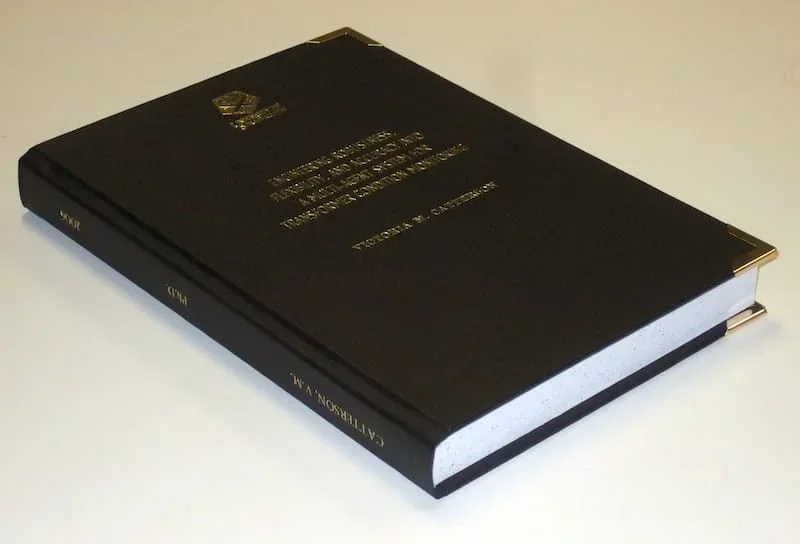
Radiology Thesis – More than 400 Research Topics (2022)! Read More »
Radiology Thesis – More than 400 Research Topics (2022)!
This site is for use by medical professionals. To continue, you must accept our use of cookies and the site's Terms of Use. Learn more Accept!
Wish to be a BETTER Radiologist? Join 14000 Radiology Colleagues !
Enter your email address below to access HIGH YIELD radiology content, updates, and resources.
No spam, only VALUE! Unsubscribe anytime with a single click.
Academia.edu no longer supports Internet Explorer.
To browse Academia.edu and the wider internet faster and more securely, please take a few seconds to upgrade your browser .
Enter the email address you signed up with and we'll email you a reset link.
- We're Hiring!
- Help Center

TOP RADIOGRAPHY AND RADIOLOGY PROJECT TOPICS

Medical Radiography And Radiological Sciences project topics, essays, seminar topics, thesis topics, and project topics in medical radiography and radiological sciences Confused on how to start your research work? You can browse through numerous projects/dissertations, essays/papers, seminars and reports in medical radiography and radiological sciences.
Related Papers
Academic radiology
Thomas Colucci
Fostering radiology research among medical students can enhance a student's interest and understanding of radiology and research. It increases the academic productivity of the mentor and the department. Radiology faculty and departments should actively seek to recruit and engage students in research. Once involved, students benefit greatly from being given clear responsibility, close supervision, timely feedback, and a degree of autonomy. At the heart of the student research process is the crucial mentor-mentee relationship, and mentors should be cognizant of their vital role and methods of encouraging and enhancing this relationship. Ultimately, the advancement of the field of radiology depends on constant innovation and improvement. Radiology research by medical students fuels both innovation and the development of future academic radiologists and physician-scientists, helping to secure future growth for our field.
Mindex Publishing Company, Benin City, Nigeria
Kenneth Eze
A simple compact book for medical students containing the important topics that are necessary for undergraduate education. Its contents is a simple guide to junior Resident doctors in Radiology both for their knowledge and for teaching medical students. It also aim to provide a brief summary of Radiological features of common diseases for teachers and examiners in Radiology who need quick reference for Radiological features of diseases while teaching or during examinations.
Academic Radiology
Vaughan Beckley
isabelle trop
European Journal of Radiography
Christina Malamateniou
Radiography
Eija Metsälä
American Journal of Roentgenology
Michael Vannier
Journal of medical radiation sciences
This guest editorial makes a case for international collaboration in radiography research.
Journal of the American College of Radiology
Mamata Chithriki
Tara Catanzano
Radiologic investigations can be confusing to clinicians and radiologists alike. Questions invariably arise as to which type of imaging study best answers the clinical question posed. Once a modality is determined, decisions must be made regarding the technical manner in which the study is performed and if intravenous contrast is required. Patient factors, risks, benefits, and other variables must also be considered. This pocket guide is written for anyone who needs to understand enough about radiology to know which study to order in a patient workup. The book addresses imaging studies by modality, body region, and type of study in bulleted outline format for easy reference. General considerations for each modality – including advantages and disadvantages – are presented, followed by patient preparation and requirements for each type of examination. The author explains how specific studies are performed and what information can be obtained, study indications, contraindications, and ...
RELATED PAPERS
Nora. Il tempio romano. 2008-2014. Vol. II.1 - I materiali preromani
Emanuele Madrigali
Journal of Advanced Veterinary and Animal Research
Burkhard Stiller
Middle Woodland Period - Ohio Archaeology: an illustrated chronicle of Ohio's ancient American Indian cultures
Brad Lepper
Steven Chien
Syaipul Ramdhan
Radim Kolář
Archiwum Fotogrametrii, Kartografii i Teledetekcji
Robert Olszewski
Journal of the Korea Academia-Industrial cooperation Society
Moo-Yeon Lee
Proceedings of the National Academy of Sciences
George Lorimer
Journal of Sohag Agriscience (JSAS)
Akram Morsy
RAMAN CHAWLA
Head & Neck
Stevani Winarno
Vincent Chatellier
Natural Science
Ali Bux Mahar
Metallurgical and Materials Transactions A
kanhu charan Sahoo
Toxicology reports
Sudip Banerjee
Simon Baddeley
Journal of Literacy Research
Laurie Katz
Candra Putra
Roehampton毕业证文凭罗汉普顿大学本科毕业证书 英国学历学位认证如何办理
Ankara Barosu dergisi
Özge Işıkcı
JAMA Network Open
DImitrios G Hatzichristou
RELATED TOPICS
- We're Hiring!
- Help Center
- Find new research papers in:
- Health Sciences
- Earth Sciences
- Cognitive Science
- Mathematics
- Computer Science
- Academia ©2024

Hon’ble Chancellor Vice Chancellor Registrar Principal Vice Principal Medical Superintendent
Anaesthesiology Anatomy Biochemistry Cardiac Anaesthesia Cardiology Cardio vascular & Thoracic Surgery Community Medicine Dermatology (Skin & VD) Emergency Medicine Endocrinology ENT, Head & Neck Surgery Forensic Medicine Gastroenterology
General Medicine General Surgery Interventional Radiology Medical Oncology Microbiology Nephrology Neonatology Neurology Neurosurgery Nuclear Medicine Obstetrics & Gynecology Ophthalmology Orthopedics Pathology
Public Health Research Unit Medical Education MCI Nodal Center Hospital Administration
Pediatrics Pediatric Neurology Pediatric Surgery Pharmacology Physical Medicine & Rehabilitation Physiology Plastic & Reconstructive surgery Psychiatry Radiation Oncology Radiology/Radio-diagnosis Respiratory/Pulmonary Medicine Surgical Oncology Urology
Under Graduate
Post graduate.
Post Doctoral Diploma Courses Public Health Ph.D Hospital Administration Fellowship Courses Allied Courses
Feedback Analysis 2015-20 Feedback Analysis 2021
Syllabus of Courses offered
Under Graduate Post Graduate Post Doctoral Fellowship Courses Ph.D Allied Courses
- KLE Advanced Simulation Centre & Clinical Skills Lab
- Cadaveric Skill Lab
- NIRF Prescribed Format
- JNMC NIRF 2018
- JNMC NIRF 2019
- JNMC NIRF 2020
- JNMC NIRF 2021
- JNMC NIRF 2022
- JNMC NIRF 2023
- JNMC NIRF 2024
- KLE Dr. PBK Hospital & MRC
- KLE Dr.PBK Hospital
- JNMC Women’s & Children’s Health Research Unit
- KLE Society
- Sports Complex
- Convention Center
- Musical Garden
- Shivalaya Temple
- Ganesh Temple
- Attendance Dashboard
- Scientific Society
- Student Association
- Kannada Balaga
- Institutional Ethics Committee
- Internal Complaint Committee
- Anti-Ragging
- Para Medical Course
- Capability Enhancement
- Faculty Login
- Student/Parent Login
- Dissertations
- M.B.B.S Phase III – Part-II
Radio Diagnosis
M.D Dissertation – Ongoing
M.D Dissertation – Completed
Request a Quote
- Hon’ble Chancellor
- Vice Chancellor
- Vice Principal
- Medical Superintendent
- Biochemistry
- Forensic Medicine
- Microbiology
- Pharmacology
- Community Medicine
- Ophthalmology
- Obst & Gynecology
- Orthopaedics
- Skin & VD
- Pulmnonary Medicine
- Anaesthesiology
- Post Doctoral
- Endocrinology
- Department Public Health
- Research Unit
- Medical Education
- MCI Nodal Center
- Diploma Courses
- Department of Public Health
- Hospital Administration
- Govt-Approval
- KLE Dr. PBK Hospital & MRC
- KLE Dr.PBK Charitable Hospital
- PHC & UHC
You are using an outdated browser. Please upgrade your browser to improve your experience.

RADIOLOKSABHA
- GASTROINTESTINAL
- REPRODUCTIVE
- RESPIRATORY
- Add New Job
- Add New Event
Radioloksabha Login

Thesis topics - I
- ROLE OF MAGNETISATION TRANSFER IMAGING IN EVALUATION OF NEUROCYSTICERCOSIS AND TUBERCULOMA -ROLE OF PET-CT IN EVALUATION OF METASTASIS TO SPINE AND COMPARISION WITH MR IMAGING -ROLE OF HIGH RESOLUTION ULTRASONOGRAPHY OF ULNAR NERVE IN THE EVALUATION OF DIABETIC PERIPHERAL NEUROPATHY -NORMAL AND VARIANT VASCULAR ANATOMY OF COELIAC ARTERY AND PORTAL VEIN – PREVALENCE AND PATTERNS IN INDIAN POPULATION -CORRELATION OF ACROMIAL MORPHOLOGY WITH IMPINGEMENT SYNDROME AND ROTATOR CUFF TEAR USING MAGNETIC RESONANCE IMAGING. -LUNG AND DIAPHRAGM ULTRASOUND AS PREDICTORS OF SUCCESS IN WEANING FROM MECHANICAL VENTILATION - A NOVEL METHOD USING ULTRASONOGRAPHY TO PREDICT EXTUBATION OUTCOME. -ROLE OF DYNAMIC CONTRAST ENHANCED MRI IN EVALUATION OF PROSTATE CANCER (DCE-MRI). -ROLE OF FETAL ECHOCARDIOGRAPHY IN EVALUATION OF IN UTERO HEMODYNAMICALLY EVOLVING – LEFT HEART OBSTRUCTIONS. -“EVALUATION OF MALE URETHRAL STRICTURES USING SONOURETHROGRAPHY COMPARATIVE STUDY WITH CONVENTIONAL RETROGRADE URETHROGRAPHY†-EFFICACY OF SONOELASTOGRAPHY IN DIFFERENTIATING BENIGN AND MALIGNANT CERVICAL LYMPH NODES: CORRELATION WITH HISTOLOGIC NODAL FINDING -ROLE OF FDG PET/CT AND MRI IN EVALUATION OF HEAD AND NECK SQUAMOUS CELL CARCINOMA -ASSESSMENT OF EFFICACY OF REDUCED DOSE CT PROTOCOL FOR CT GUIDED PROCEDURES -ASSESSMENT OF DIFFERENT MRI SEQUENCES AND CONTRAST IN DETERMINING TUMOUR MARGINS IN MUSCULOSKELETAL TUMOURS -ROLE OF CT IN PRIMARY ORAL CAVITY CANCERS WITH CLINICAL, SURGICAL AND PATHOLOGICAL CORRELATION. -SPECTRUM OF CRANIAL ULTRASOUND FINDINGS IN PRETERM NEONATES SCREENED ON DAY THREE OF LIFE -MORPHOMETRIC ANALYSIS OF SPINAL CORD DIMENSIONS OF INDIVIDUALS WHO ARE UNDERGOING MRI SPINE -MATERNAL ORBITAL VESSELS DOPPLER VELOCIMETRY IN GESTATIONAL DIABETES MELLITUS -COMPARISON OF SONOLOGIC GRADING OF NON-ALCOHOLIC FATTY LIVER DISEASE (NAFLD) WITH LIVER ENZYMES IN PREDICTING SERUM CHOLESTEROL LEVELS -MAGNETIC RESONANCE IMAGING SPECTRUM OF POSTPARTUM NEUROLOGICAL COMPLICATIONS -COMPARISON OF ULTRASOUND AND MRI IN THE DETECTION OF SUBSCAPULARIS TEAR WITH SURGICAL CORRELATION -CHARACTERISTICS AND PREVALENCE OF VASCULAR COMPLICATIONS IN ACUTE PANCREATITIS - CLINICO-RADIOLOGICAL CORRELATION OF MRI FINDINGS IN PATIENTS OF BEHAVIOURAL VARIANT OF FRONTOTEMPORAL DEMENTIA -A COMPARATIVE STUDY OF ADRENAL GLANDS SIZE AMONG NEONATES UNDER STRESS AND NORMAL HEALTHY NEONATES -ROLE OF ULTRASOUND IN EVALUATING THE NATURE OF THYROID NODULES AND ASSESSMENT OF DIAGNOSTIC ACCURACY OF TIRADS CLASSIFICATION -COMPARATIVE STUDY OF TRANSVAGINAL ULTRASONOGRAPHY AND SALINE INFUSION SONOHYSTEROGRAPHY IN EVALUATION OF ABNORMAL UTERINE BLEEDING -OUTCOME OF IMAGE GUIDED OMENTAL BIOPSY IN 10 PATIENTS -TITLE:COMPUTED TOMOGRAPHIC EVALUATION OF MEDIASTINAL MASSES -VASCULAR RINGS IN FETUS - ANTENATAL DIAGNOSIS AND POSTNATAL OUTCOME -ROLE OF CONVENTIONAL ULTRASONOGRAPHY AND ELASTOGRAPHY IN DIFFERENTIATING BENIGN AND MALIGNANT BREAST MASSES WITH HISTOPATHOLOGICAL CORRELATION -MULTIPARAMETRIC MRI IN DIFFERENTIATING ENDOMETRIOTIC CYSTS FROM HEMORRHAGIC CYSTS -MORPHOMETRIC ANALYSIS OF CORPUS CALLOSUM IN PATIENTS WITH HYPOXIC ISCHEMIC ENCEPHALOPATHY (HIE) -ASSOCIATION OF VASCULAR CALCIFICATION OF BREAST WITH CAROTID INTIMA MEDIAL THICKNESS IN PERI- MENOPAUSAL WOMEN -ROLE OF MRI IN EVALUATION OF TRAUMATIC ANKLE JOINT -CORRELATION BETWEEN MODIC CHANGES IN THE LUMBAR SPINE AND DEGREE OF THE FACET JOINT DEGENERATIVE CHANGES: A RETROSPECTIVE MRI STUDY. -OSTEOID OSTEOMAS OF THE LUMBAR SPINE- A DESCRIPTIVE STUDY OF THE DIAGNOSTIC IMAGING FEATURES. -MRI EVALUATION OF SONOGRAPHICALLY INDETERMINATE ADNEXAL MASSES -ROLE OF MRCP IN THE EVALUATION OF PANCREATICOBILIARY DISEASES -ROLE OF DIFFUSION WEIGHTED MAGNETIC RESONANCE IMAGING IN DIFFERENTIATING BENIGN AND MALIGNANT BREAST LESIONS -GANGRENOUS CHOLECYSTITIS - A CLINICAL MYSTERY WITH A SUBTLE RADIOLOGICAL UNRAVEL :A CASE SERIES -VARIATIONS IN SHORT SAPHENOUS VEIN TERMINATION ON ULTRASOUND DOPPLER AND ITS SURGICAL IMPORTANCE. -MDCT EVALUATION OF ANATOMICAL VARIATIONS OF PNS AND THEIR IMPORTANCE IN FESS. -ROLE OF MRCP IN EVALUATION OF OBSTRUCTIVE JAUNDICE -“ROLE OF MAGNETIC RESONANCE UROGRAPHY IN OBSTRUCTIVE AND NON- OBSTRUCTIVE UROPATHIES†- EFFECT OF SISTOCHOLEDOCHAL ANGLE IN THE FORMATION OF CHOLELITHIASIS -VARIATIONS IN PNEUMATIZATION OF SPHENOID SINUSES IN INDIAN POPULATION: MULTIDETECTOR COMPUTED TOMOGRAPHY STUDY -MDCT EVALUATION OF PANCREATIC MALIGNANCIES -OLFACTORY FOSSA DEPTH BY COMPUTED TOMOGRAPHY WITH KEROS CLASSIFICATION IN PRE-FESS PATIENTS -ANATOMICAL RELATIONSHIP OF OPTIC NERVE CANAL TO POSTERIOR PARANASAL SINUSES IN SOUTH INDIAN POPULATION -VASCULAR AND NON-VASCULAR COMPLICATIONS OF ACUTE PANCREATITIS: A CORRELATIVE ASSESSMENT BY ULTRASOUND AND CONTRAST ENHANCED COMPUTED TOMOGRAPHY SCAN -CHARACTERIZATION OF SEROUS AND MUCINOUS CYSTADENOMA AND THEIR DIFFERENTIATION ON MRI -REVISED SENSITIVITY AND SPECIFICITY FOR REAL-TIME ELASTOGRAPHIC SONOGRAPHY OF BREAST MASSES IN A TERTIARY CARE HOSPITAL OF KARNATAKA. -TO EVALUATE THE ROLE OF MRI IN CHARACTERIZING ACHILLES TENDON INJURY. -ROLE OF MULTIDETECTOR COMPUTED TOMOGRAPHY AND THREE DIMENSIONAL RENDERING IN THE EVALUATION OF MAXILLOFACIAL TRAUMA. -COMPUTED TOMOGRAPHIC EVALUATION OF ORAL CAVITY CARCINOMA. -ULTRASOUND ELASTOGRAPHY EVALUATION OF BREAST MASSES WITH FNAC CORRELATION. -ASSOCIATION BETWEEN FETAL POSTERIOR CEREBRAL ARTERY AND EREBROVASCULAR ISCHEMIC DISEASE ON MRI BRAIN AND MR ANGIOGRAM OF CIRCLE OF WILLIS. - “CORRELATION OF ANTENATAL UMBILICAL ARTERY COILING INDEX AT SECOND TRIMESTER ULTRASOUND SCAN WITH PERINATAL FETAL OUTCOME†-MULTIPARAMETRIC MAGNETIC RESONANCE IMAGING OF PROSTATE AND ITS CORRELATION WITH HISTOPATHOLOGY - ‘BOWEL WALL THICKENING ‘ : IT’S SIGNIFICANCE ON ABDOMINAL COMPUTED TOMOGRAPHY AT A TERTIARY CARE HOSPITAL IN KARNATAKA -EVALUATION OF GESTATIONAL AGE BY SONOLOGICAL MEASUREMENT OF PLACENTAL THICKNESS -“ROLE OF COLOUR DOPPLER ULTRASONOGRAPHY IN EVALUATION OF PORTAL VENOUS HYPERTENSION†-CAROTID INTIMA-MEDIA THICKNESS AS A PREDICTOR OF ATHEROSCLEROSIS IN DIABETIC AND NON-DIABETIC SUBJECTS IN RAJARAJESWARI MEDICAL COLLEGE AND HOSPITAL. -MRI SPECTRUM OF HIE PATTERN OF INVOLVEMENT IN PEDIATRIC PATIENTS -“COMPARATIVE STUDY OF CAROTID DOPPLER AND CAROTID CEMRA IN CAROTID ARTERY DISEASE†-MR IMAGING IN INFECTIOUS SPONDYLITIS -MR CHOLANGIO-PANCREATICOGRAPHY-A TOOL FOR EVALUATION OF PATIENTS WITH PANCREATICOBILIARY DISEASES -ROLE OF CT IMAGING TO EVALUATE OSTEOMEATAL COMPLEX IN INFLAMMATORY LESIONS OF PNS. -DIAGNOSTIC RELIABILITY OF TIRADS IN ROUTINE PRACTICE. -COMPARISON BETWEEN FLEISCHNER SOCIETY (2018) AND ATS/ERS/JRS/ALAT (2018) GUIDELINES IN DIAGNOSIS OF IDIOPATHIC PULMONARY FIBROSIS (IPF). -OPTIC NERVE SHEATH DIAMETER IN TRAUMATIC BRAIN INJURY AND ITS CORRELATION TO ROTTERDAM COMPUTED TOMOGRAPHY (CT) SCORING -PREDICTIVE EFFICACY OF IMAGING IN DIAGNOSING PEDIATRIC ABDOMINAL MASSES. -ROLE OF MRCP IN BILIARY AND PANCREATIC PATHOLOGIES IN CORRELATION WITH ERCP. -ANALYSIS OF VENTRICULAR INDICES USING COMPUTED TOMOGRAPHY IN HUMAN BRAIN -ROLE OF MAGNETIC RESONANCE IMAGING IN BIOMETRIC EVALUATION OF CORPUS CALLOSUM IN HYPOXIC ISCHAEMIC ENCEPHALOPATHY PATIENTS - A HOSPITAL BASED CROSS SECTIONAL STUDY. -MRI EVALUTION OF HYPOXIC ISCHEMIC ENCEPHALOPATHY - A STUDY OF DIAGNOSTIC VALUE OF DIFFUSION WEIGHTED MAGNETIC RESONANCE IMAGING IN DIFFERENTIATION OF BENIGN AND MALIGNANT FOCAL LIVER LESIONS -“ASSOCIATION OF MENISCAL TEARS WITH ANTERIOR CRUCIATE LIGAMENT TEAR USING MRI†-IMAGING SPECTRUM OF INTRACRANIAL MENINGIOMAS WITH WHO GRADING -USG EVALUATION OF GYNAECOLOGICAL MASSES AND CORRELATION WITH MDCT -ULTRASOUND AND MAGNETIC RESONANCE IMAGING CORRELATION OF ROTATOR CUFF INJURIES -IMAGING FEATURES OF VARIOUS TYPES OF PYELONEPHRITIS IN COMPUTED TOMOGRAPHY (CT). -VARIATIONS IN MIDDLE GLENOHUMERAL LIGAMENT- A CROSS SECTIONAL STUDY. -EFFECT OF EXOGENOUS INSULIN THERAPY ON PLACENTAL THICKNESS IN GESTATIONAL DIABETES -ROLE OF ULTRASOUND SHEAR WAVE ELASTOGRAPHY IN DIAGNOSIS AND GRADING OF NON ALCOHOLIC FATTY LIVER DISEASE (NAFLD) -EVALUATION OF PELVIC MASSES USING ULTRASONOGRAPHY, MAGNETIC RESONANCE IMAGING AND ADVANCED MRI TECHNIQUES -SPECTRUM OF RADIOLOGICAL FINDINGS IN GINGIVOBUCCAL MALIGNANCIES: MDCT EVALUATION. -MRI EVALUATION OF LUMBAR DISC DEGENERATIVE DISEASE -COMPUTED TOMOGRAPHIC EVALUATION OF ACUTE PANCREATITIS AND ITS COMPLICATIONS USING MODIFIED CT SEVERITY INDEX -VALUE OF ADDING PORTAL VEIN DOPPLER WITH ULTRASOUND IN DENGUE FEVER- WHAT WE NEED TO SEE?? -RADIOLOGICAL PROFILE AND TREATMENT OUTCOMES IN INTRAMUSCULAR VASCULAR LESIONS - A CASE SERIES. -TO STUDY THE ROLE OF COMPUTED TOMOGRAPHY IN EVALUATION OF ORBITAL MASSES -HIGH RESOLUTION COMPUTED TOMOGRAPHIC STUDY OF TEMPORAL BONE IN MIDDLE EAR INFECTIONS -ROLE OF MRI IN EVALUATION OF SPINAL TUBERCULOSIS -CROSS SECTIONAL DIAGNOSTIC STUDY WITH SHEAR WAVE ELASTOGRAPHY BY DIRECT TARGETING RISK FACTORS IN LIVER FIBROSIS PATIENTS -ACUTE NEUROLOGICAL DISORDERS IN WOMEN DURING PREGNANCY AND PEURPERIUM -A CROSS SECTIONAL STUDY. -ACCURACY OF ABDOMINAL RADIOGRAPH IN SUSPECTED CASE OF SMALL BOWEL OBSTRUCTION. -CORRELATION OF ANAEMIA WITH ATTENUATION VALUES ON UNENHANCED CT OF THORAX. -3D DUAL-ECHO STEADY-STATE (DESS) SEQUENCE IN ARTICULAR CARTILAGE EVALUATION OF GLENO-HUMERAL OSTEOARTHRITIS -CHARACTERIZATION OF FOCAL LIVER LESIONS WITH TRIPHASIC COMPUTED TOMOGRAPHY STUDY OF LIVER. -“VENOUS PHASE DIAMETER OF INFERIOR VENACAVA ON CT- A PREDICTOR OF HYPOTENSION IN BLUNT ABDOMINAL TRAUMA. -RADIOLOGICAL PREDICTION OF HEMOGLOBIN LEVELS BY ASSESSMENT OF INTRA-BLOOD VESSEL “HOUNSFIELD UNIT†VALUES IN NON-ENHANCED MULTI-DETECTOR COMPUTED TOMOGRAPHY OF THORAX AND ABDOMEN WITH LABORATORY HEMOGLOBIN & HEMATOCRIT CORRELATION. -USING MRI TO EVALUATE POSITION OF AORTIC BIFURCATION AND RIGHT RENAL ARTERY WHEN LOCATING LUMBAR VERTEBRAL SEGMENTS. -SHEAR WAVE ELASTOGRAPHY TO ASSESS THE EFFECT OF VARICOCELE ON TESTES-A DESCRIPTIVE STUDY -DIFFUSION AND PERFUSION WEIGHTED MRI EVALUATION AND CHARACTERISATION OF BRAIN TUMORS. -DIFFUSION TENSOR IMAGING (DTI) METRICS OF RADICULOPATHY IN PATIENTS WITH LUMBAR DISC HERNIATION. -EVALUATION OF PLACENTAL THICKNESS AS A SONOLOGICAL INDICATOR FOR ESTIMATION OF GESTATIONAL AGE -ROLE OF MRI FISTULOGRAM IN PREOPERATIVE ASSESSEMENT OF ANORECTAL FISTULAS AND ITS CORRELATION WITH INTRA-OPERATIVE FINDINGS. -MRI EVALUATION OF COMPRESSIVE MYELOPATHY -COMPUTED TOMOGRAPHIC EVALUATION OF SOLID ORGAN INJURIES IN BLUNT ABDOMINAL TRAUMA - EVALAUTION OF SPECTRUM OF SCROTAL PATHOLOGIES USING HIGH RESOLUTION ULTRASOUND AND COLOUR DOPPLER -“ROLE OF TRIPHASIC COMPUTED TOMOGRAPHY IN EVALUATION OF FOCAL HEPATIC LESIONS†- ROLE OF HOUNSFIELD UNIT IN PREDICTABILITY OF SUCCESS RATE OF PERCUTANEOUS NEPHROLITHOTOMY IN UROLITHIASIS PATIENTS. - MEAN NORMAL PORTAL VEIN DIAMETER USING SONOGRAPHY AMONG PATIENTS REFERRING TO RADIOLOGY DEPARTMENT OF BAPUJI HOSPITAL CENTRAL KARNATAKA -DOPPLER ULTRASOUND OF HEPATIC VESSELS IN THE DIAGNOSIS OF CIRRHOSIS OF THE LIVER. - ROLE OF DOPPLER ULTRASONOGRAPHY IN PREDICTION OF ADVERSE PERINATAL OUTCOME IN HIGH RISK PREGNANCY
© Copyright 2024 - Radioloksabha.com developed by ForceClose.com
Thesis/Dissertation Topics For MD/MS/DNB.
Overall More than 70 thousand Thesis Topics covering all subjects of broad specialty

Remember Subscribing to the premium thesis topics not only will enable you to browse through premium thesis topics but also you will get access to online guidance about synopsis writing, sample size calculation, inclusion and exclusion criteria and guidance throughout thesis writing. In case you dont subscribe still do not hesitate to contact me for guidance.
Thesis Topics for MD/MS and DNB
It’s a junior resident’s nightmare to search for appropriate thesis topics for MD/MS and DNB. While we all know the first year of residency in any medical college is a period when the junior residents are all overburdened with work. It’s not uncommon to see Junior Residents not getting time to eat, shave or even take bath. In this demanding period looking for an appropriate thesis topics for MD/MS and DNB is another task that needs to be performed by Junior Residents. Many times Junior Residents end up selecting topics that they later regret selecting.
In this regard i vividly remember my co-resident. When i joined MD radiology one of co-resident took a topic on cardiac MRI in thalassemia. Cardiac MRI facility was not available in our institute and then for this she had an agreement with a private diagnostic center for cardiac MRI at concessional rates. After some days the management of that private diagnostic center changed and new management refused to do cardiac MRI at concessional rates and all hell broke. She suffered a lot because she didn’t think at the time of choosing thesis topic that cardiac MRI was not available in our department. So carefully choosing a thesis topic is a must.
The topics for MD/MS and DNB should be important but not difficult. And for this you have to go through at least 400-500 thesis topics for MD/MS/DNB before selecting one. Its not possible to search for thesis topics in libraries, over the internet, and everywhere else because of shortage of time.
Taking into consideration all these difficulties faced by junior residents we have painstakingly collected more than 50,000+ thesis topics for MD/MS/DNB of all broad specialty subjects. That comes to an average of 3000 thesis topics per subject. And it’s not over here we are continuously updating the list so that as and when new topics emerge on the horizon we will go on adding them.
This website will give you a list of all the relevant thesis topics in one place and it will be very hard for you to find any thesis topic outside this list. If there is a good thesis topic for MD/MS and DNB then it will be on this list. Do check the list of conventional as well as emerging Thesis Topics.
We wish you all the best in choosing appropriate thesis topics for MD/MS and DNB.
You can directly discuss with me on whatsapp regarding a thesis topic. Ill help you not only for selection of a thesis topic but also ill guide you throughout your Journey of writing thesis. I have more than 60 research papers published in my name in various national and international journals and i can guide you if you face any difficulty during writing of thesis. I can help you write synopsis, Review of literature, Statistics and discussion etc.
Please Remember you will not only get a good thesis topic from here but also you will get a mentor throughout your PG residency. Ill always be there to help you.
I have another website where i’ve helped many doctors get their paper published in national and international medical journals. Do check it click here

Synopsis Writing Services
Subject-wise thesis topics for md/ms and dnb.
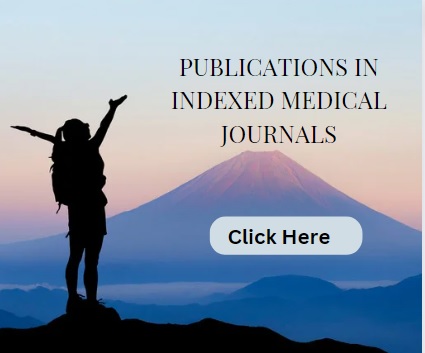
Biochemistry

Microbiology

Pharmacology

Othopaedics

Obstetrics and Gynaecology

Ophthalmology

Anaesthesia


Dermatology

Preventive and Social Medicine
Topic-wise list of thesis topics for md/ms and dnb , anatomy premium bundle -subscribe (1 week access) click here, anatomy free thesis topics.
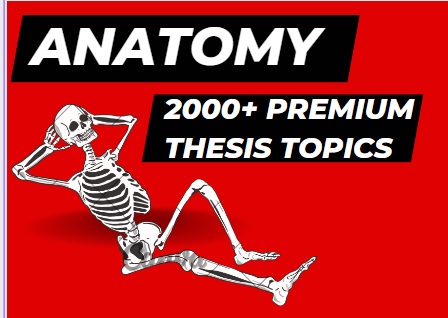
Premium Thesis Topics

Anatomy recent thesis Topics
Physiology premium bundle -subscribe (1 week access) click here, physiology free thesis topics.

Physiology Premium Thesis Topics

Physiology recent thesis Topics
Biochemistry premium bundle -subscribe (1 week access) click here, biochemistry free thesis topics.

Biochemistry Premium Thesis Topics

Biochemistry recent thesis Topics
Forensic medicine and toxicology thesis topics -subscribe (1 week access) click here.

Pathology Premium Bundle -Subscribe (1 week Access) Click Here
Free pathology thesis topics.

Premium Pathology thesis topics
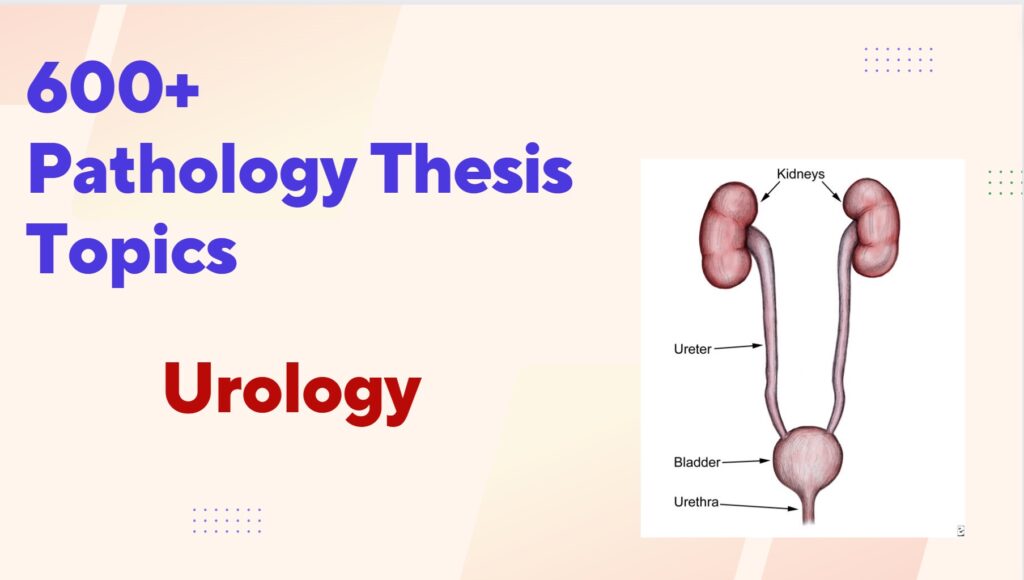
Urology thesis topics

Reproductive system thesis topics
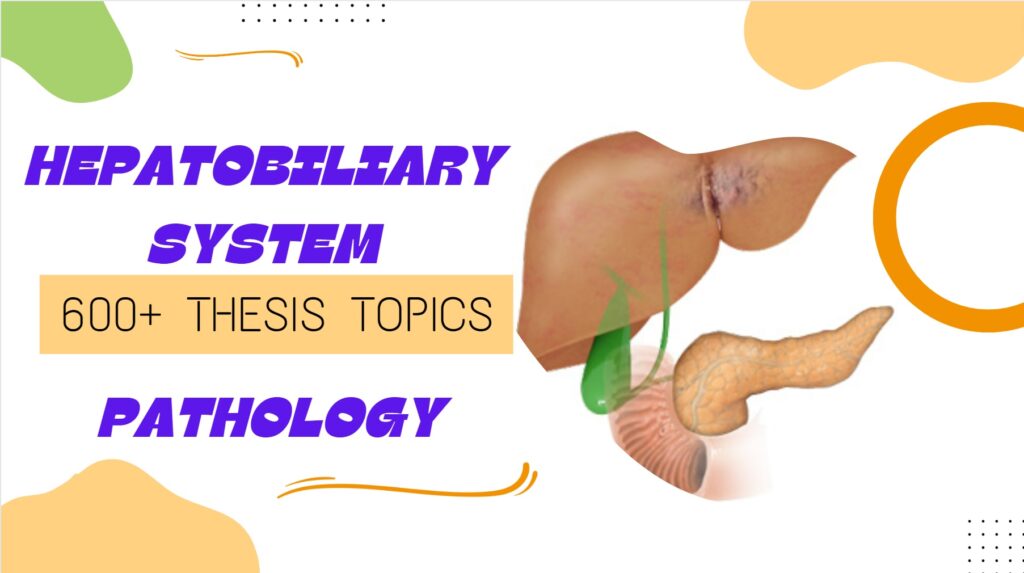
Hepato-biliary thesis topics
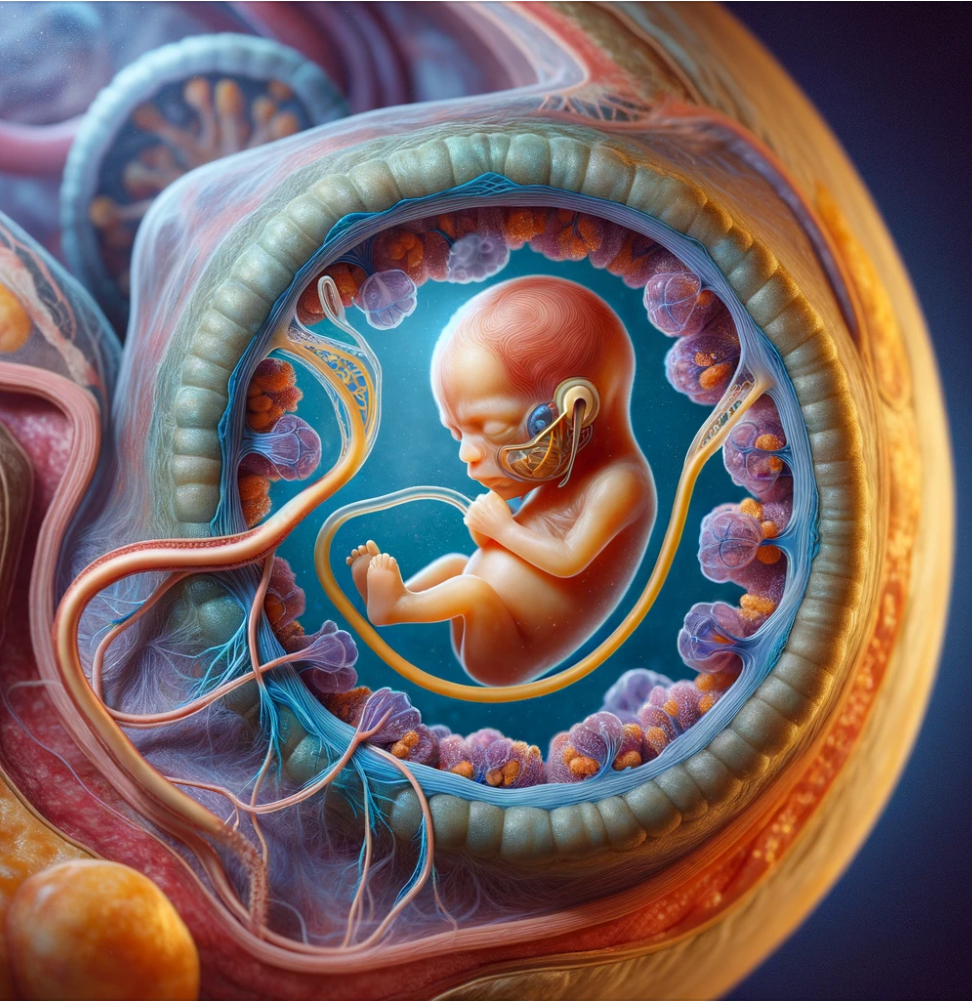
Placental pathologies

Hematology thesis topics
Pharmacology premium bundle -subscribe (1 week access) click here, pharmacology free topics.

Pharmacology Premium Topics

Pharmacology Recent Topics
Microbiology premium bundle -subscribe (1 week access) click here, microbiology free topics.

Microbiology Premium Topics

Microbiology Recent Topics
General medicine premium bundle -subscribe (1 week access) click here.

Pediatrics Premium Bundle -Subscribe (1 week Access) Click Here

ENT Premium Bundle -Subscribe (1 week Access) Click Here
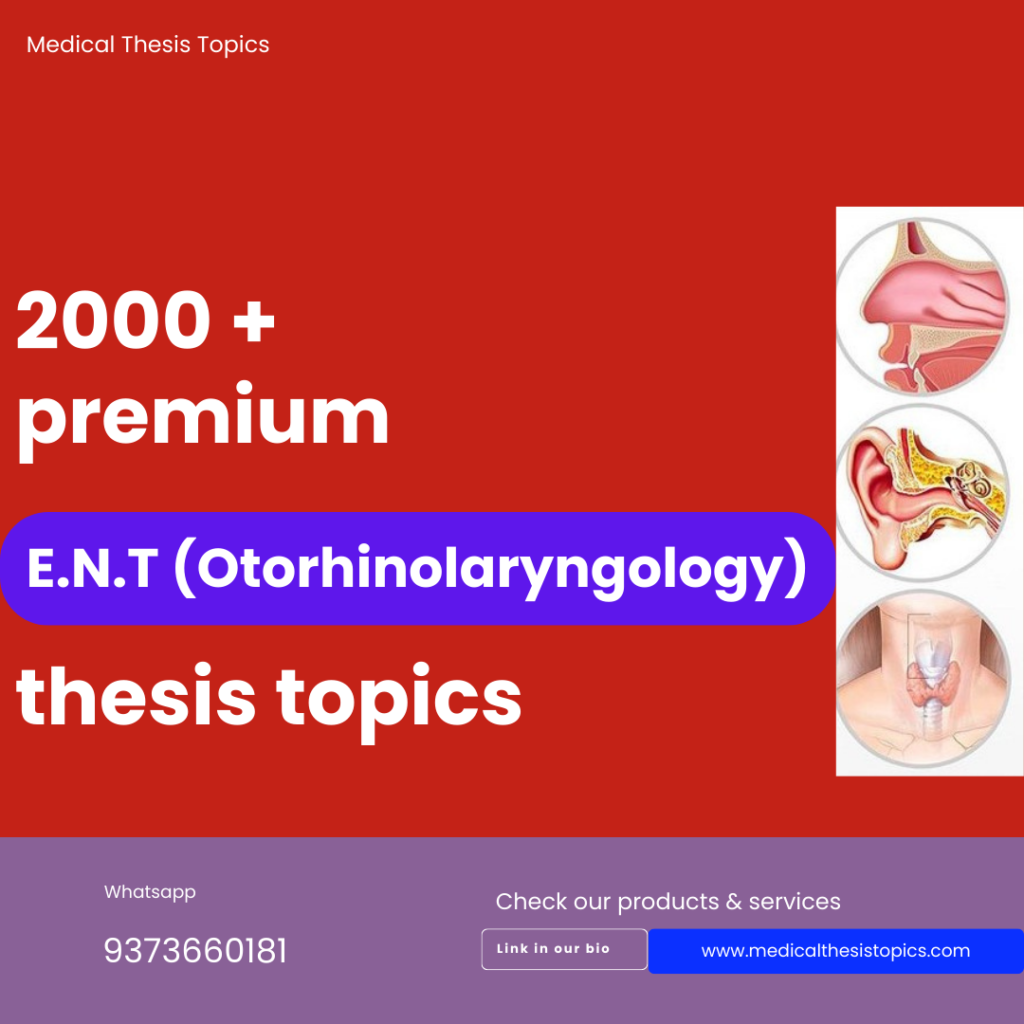
Surgery Premium Bundle -Subscribe (1 week Access) Click Here
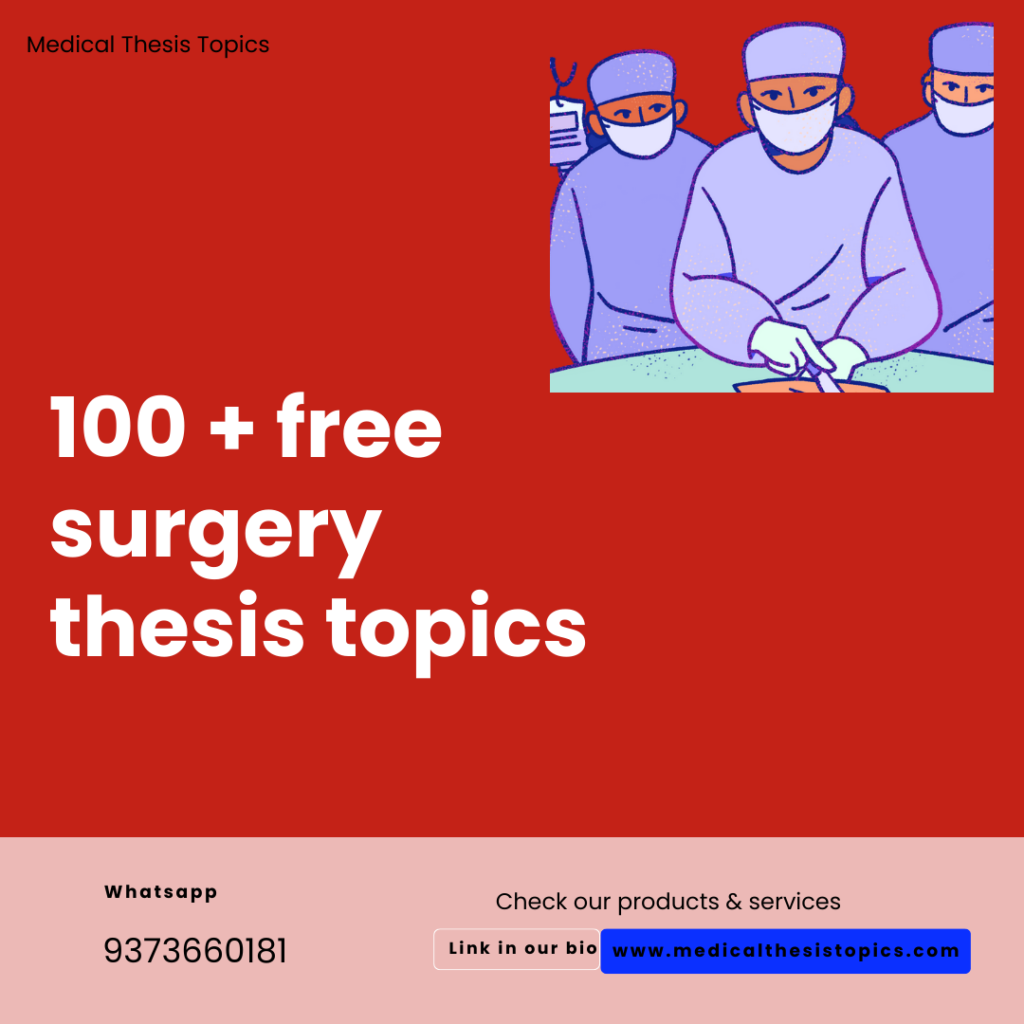
Orthopedics Premium Bundle -Subscribe (1 week Access) Click Here
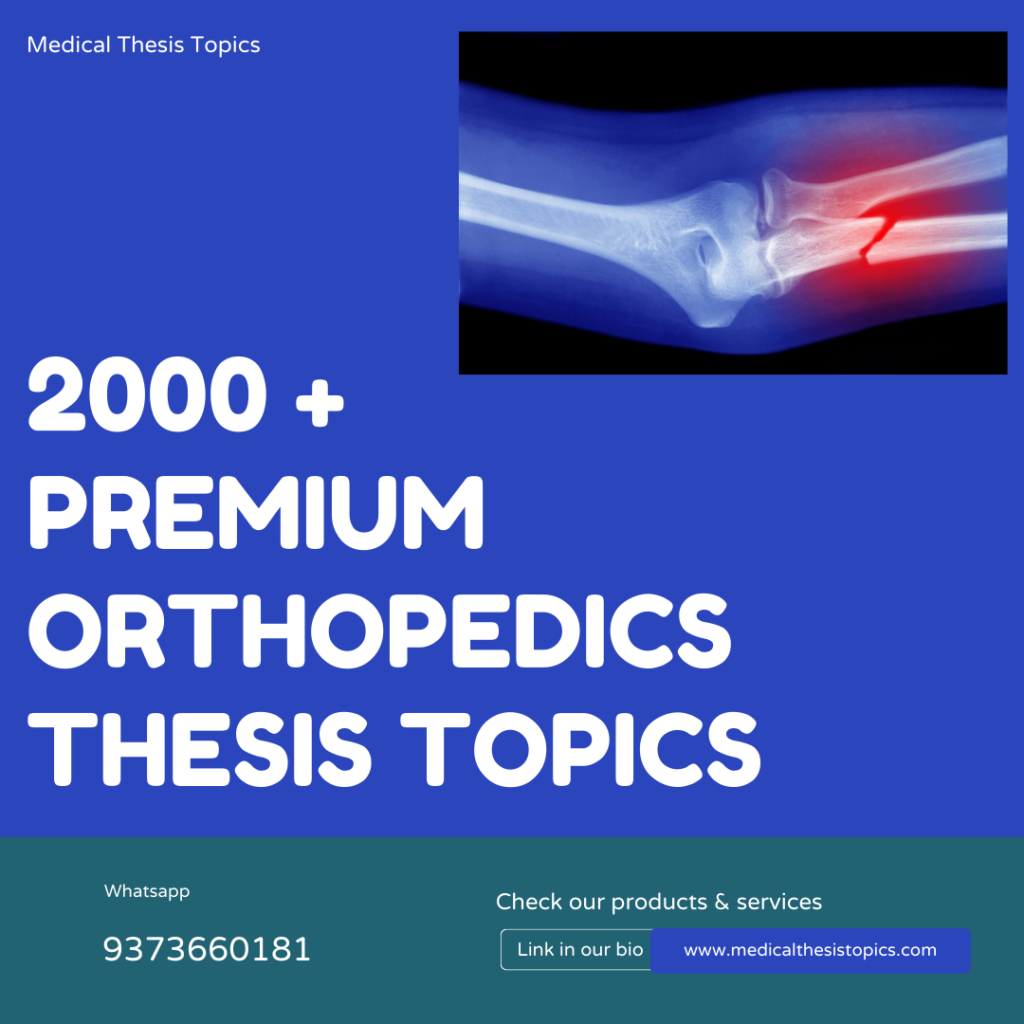
Dermatology Premium Bundle -Subscribe (1 week Access) Click Here

Ophthalmology Premium Bundle -Subscribe (1 week Access) Click Here

Obstetrics And Gynecology Premium Bundle -Subscribe (1 week Access) Click Here

Radiology Premium Bundle -Subscribe (1 week Access) Click Here

Anesthesiology Premium Bundle -Subscribe (1 week Access) Click Here

Psychiatry Premium Bundle -Subscribe (1 week Access) Click Here

Preventive and Social Medicine Premium Bundle -Subscribe (1 week Access) Click Here

Thesis Topics For MDS

Pediatric Dentistry Thesis Topics
Disclaimer!
There are many methods of sample size determination. It is one of the first hurdle when someone starts writing a thesis. I have tried to give simplest way of determination of sample size. You need to show the method to your PG teacher before you include this method in your thesis. First confirm from your PG teacher and then only proceed.
- Browse Works
- Medical & Health Sciences
Radiology Research Papers/Topics
Evaluation of the role of mri in diagnosis of hepatic focal lesions in ahmadu bello university teaching hospital, zaria nigeria.
Introduction: Focal liver disease is a common diagnostic problem referred to radiologists for evaluation owing to its nonspecific clinical presentation and marked inter-observer variation on clinical examination. Hepatic focal lesions (HFLs) are classified into benign and malignant lesions. Hemangiomas are the commonest benign tumor while hepatocellular carcinoma (HCC) it is the commonest primary malignant liver tumor. HCC is the fifth most common cancer in the world and the third most frequ...
Estimation of Ocular Axial Length Using Magnetic Resonance Imaging Technique Among Adults in Jos Metropolis, North-Central Nigeria.
ABSTRACT The purposes of this study are to generate an indigenous normogram for ocular axial lengths in a Nigerian population, determine whether there are differences in axial lengths between the right and left eye and among different adult age groups. The study will also determine whether there are differences in axial lengths between males and females and possible racial differences between Nigerians and Caucasians. This prospective, cross sectional study involving one hundred (100) Nigeria...
Epidemiological Pattern of Presentation of Paragonimus Infection in the Human Host in South East Nigeria and Their Correlative Sonographic Findings in Some Organs
ABSTRACT In a cross-sectional survey, 304 subjects whose sputum and faeces tested positive for paragonimus out of a total of 1125 from Amagunze, Lokpanta and Oduma which are areas known for the parasite endemicity in Southeast Nigeria were enlisted into the study. The liver, spleen, and kidney of these subjects were sonographically examined in order to characterize the sonographic features specific for paragonimus in these organs. A total number of 456 subjects were also enlisted as control. ...
Evaluation of Diffusion Magnetic Resonance Imaging with Clinical Findings for Brain Stroke Patients in Khartoum State
Abstract The aim of this study is to evaluate of the diffusion magnetic resonance imaging with clinical findings for brain stroke patients in Khartoum state, to evaluate the doctor's experience about the diffusion weighted imaging for brain stroke, measure the accuracy of diffusion weighted imaging in detection brain stroke, compare the DWI findings and the conventional MRI protocols findings for brain stroke, determine the most clinical findings for brain stroke and to determine the MRI depa...
Study of Coronary Artery Disease in Diabetes Mellitus patients using Cardiac Catheterization
Cardiac catheterization (heart cath) is Radiological Procedure by insertion of a catheter into a chamber or vessel of the heart followed by injection of contrast media . This is done both for diagnostic and interventional purposes. Subsets of this technique are mainly coronary catheterization, involving the catheterization of the coronary arteries, and catheterization of cardiac chambers and valves of the cardiac system, The history of cardiac catheterization dates back to Stephen Hales...
Assessment Of The Ischemic Acute Stroke Using Magnetic Resonance Diffusion Weighted Imaging
Abstract Diffusion-weighted MRI (DWI) is highly sensitive in detecting early cerebral ischemic changes in acute stroke patients. This study aimed to show the role of diffusion-weighted MRI (DWI) in the diagnosis of acute stroke. In this study, we compared the role of DWI with that of conventional MRI techniques. Furthermore, we compared the size of ischemic lesions on DWI scans with the fluid-attenuated inversion recovery (FLAIR) images. We performed T1-weighted imaging (T1WI), T2-weight...
Abdominal Ultrasonography in HIV/AIDS Patients in Southwestern Nigeria
Abstract Background Though the major target of the HIV-virus is the immune system, the frequency of abdominal disorders in HIV/AIDS patients has been reported to be second only to pulmonary disease. These abdominal manifestations may be on the increase as the use of antlretroviral therapy has increased life expectancy and improved quality of life. Ultrasonography is an easy to perform, non invasive, inexpensive and safe imaging technique that is invaluable in Africa where AIDS is most prev...
Evaluation of Liver Tumors using Computed Tomography
Triphasic liver CT enables characterization of a wide range of focal liver lesions. The general objective of the study is to evaluate the role of CT in diagnosis of liver lesions. And furthermore to determine which lesion in the liver with high incidence, and to find out the geographic distribution of the liver lesions in Sudan. Sixty patients found to have focal tumoral liver lesions were recruited for 4 months period and their triphasic CT scans findings were evaluated and later correlate...
Accidental Ingestion of a Drawing Pin: A Case of an Unusual Foreign Body in the Oesophagus
INTRODUCTION Foreign body impaction in the oesophagus is a quite common occurrence but 90% of such foreign bodies pass through the digestive tract to be eliminated in stools. The incidence of complications following ingestion of foreign bodies is surprisingly low. It was 10% in a study of 2400 cases by Nanchi and Ong. Presented below is a case of a young boy who accidentally swallowed a drawing pin and in whom plain radiographs confirmed the presence and location of the foreign body. Endosc...
Classification of X-ray forUpper Limbs Trauma
The main objective of this study was to classify trauma which occur in upper limbs by using x-ray objectively. The data of this study collected from 53 patients examined by upper limbs X-ray in East Nile Hospital (Modern Hospital in Khartoum – Sudan) in the period from September 2014 to May 2015 using Digital Philips machine. The data were collected use measuring fracture healing and three variables patient height, weight, and body mass index.. The results of the study showed that mal...
Study of anatomical variations of the sphenoid sinus among Sudanese using Computed Tomography
With the expanding use of the functional endoscopic sinus surgery (FESS), proper understanding of the sphenoid sinus anatomy has become increasingly important. Knowledge of the size and extent of pneumatization of sphenoid sinus is an important to avoid any complications during surgery. This descriptive study was conducted in Sudan - Khartoum to study the anatomical variations of sphenoid sinus among Sudanese using ct scan. 70 images of ct for para nasal sinus (35males and 35females) we...
Evaluation of Cerebral White Matter Changes for Sudanese Hypertensive Patients Using Magnetic Resonance Imaging
The aim of this study was to evaluate the cerebral white matter changes for Sudanese hypertensive patients using magnetic resonance imaging. The sample consisted of thirty subjects randomly chosen from modern medical center and Asiahospital, they divided into control group and hypertensive group, both underwent magnetic resonance scans for the brain by (1.5T or 0.2T) machine using comparable protocols included (T1, T2 and Fluid Attenuated Inversion Recovery pulse sequences), a semi-quant...
Assessment of Brain Findings in Sudanese Patients with Headache Using Computed Tomography
The purpose of this descriptive cross sectional study was to evaluate the computed tomography findings of the brain in patients with headache. The study used (85) patients with headache who underwent a computed tomography scan of the brain in Amal National Hospital, the sample contained both gender (38 males and 47 females). Patients were examined in this study, ranging in age (18-65 years old) with the predominant age group (26-35 years), which accounted for 40% of the sample. All pati...
Evaluation of ExtraAxial Brain Hemorrhage Using Computed Tomography
The extra axial brain hemorrhage causes mortality when not early diagnosed and treated. The study aimed to evaluate the extra axial brain hemorrhage using computed tomography. Collcted all the patients from Ibrahim Malik Hospital from march to may 2016 .Non contrast computed tomography was done in all patients . The result from 60 patients with different age and gender diagnosed as extra axial brain hemorrhage.In this study peak incidence was among the age between (41-50 year),(63.3...
Pattern Of Asymptomatic Sexually Transmitted Infections In Women Undergoing Hysterosalpingography For Infertility Evaluation In Ibadan Nigeria
ABSTRACT The roles of gonorrhea and non-gonococcal urethritis due to Chlamydia trachomatis in the etiology of infertility due to tubal occlusion have been established by various studies. Hysterosalphingography WSG) is done to investigate tubal patency. This study was aimed at finding the prevalence of Wptomatic sexually transmitted infections (STIs) in women being investigated for infertility in a tertiary institution. Methods: This was a cross-sectional study of asymptomatic infertile women ...
Radiology is the science that uses medical imaging to diagnose and sometimes also treat diseases within the body. Afribary curates list of academic papers and project topics in Radiology. You can browse Radiology project topics and materials, Radiology thesis topics, Radiology dissertation topics, Radiology seminar topics, Radiology essays, Radiology text books, lesson notes in Radiology and all academic papers in Radiology field.
Popular Papers/Topics
Knowledge, expectations and beliefs of pregnant women on antenatal ultrasound., a quantitative study about knowledge, attitude and practice of radiographers towards tuberculosis patients among radiographers and msc. rit students of sgt hospital, radiographers’ experiences of stress and methods of coping: a content analytic phenomenologic study, supernumerary kidney (triple kidney) with horseshoe component: a case report., occult metastatic follicular thyroid carcinoma masquerading as a soft tissue sarcoma of the gluteal region, low field mr imaging of sellar and parasellar lesions: experience in a developing country hospital, imaging of congenital diaphragmatic hernias, baseline chest radiographic features among antiretroviral therapy naive human immuno-deficiency virus positive children in a pediatric care program, a case of adrenal myelolipoma mimicking' pheocromocytoma, radiologists join to implement pediatric imaging training, education and outreach in nigeria, computed tomography and childhood seizure disorder in ibadan.
Privacy Policy | Refund Policy | Terms | Copyright | © 2024, Afribary Limited. All rights reserved.

Home > MAHE Student Work > KMCMLR
Kasturba Medical College, Mangalore Theses and Dissertations
Theses/dissertations from 2021 2021.
“The Impact of Self-Stigma of Seeking Help and Perceived Social Support on Burnout among Clinical Psychologists” , Aavrita A
The impact of self-stigma of seeking help &percieved social support on burnout among clinical psychologists. , Aavrita .
Immediate Effects of Novel Hand Rehabilitation Board on Fine Motor Skills in Children with Cerebral Palsy. , Romita Fernandes. Abraham
"COMPARISON OF THREE SCORING CRITERIA TO ASSESS RECOVERY FROM GENERAL ANAESTHESIA IN THE POST-ANAESTHESIA CARE UNIT- A LONGITUDINAL OBSERVATIONAL STUDY " , Shagun Aggarwal
Comparative predictive validity of Alberta Infant Motor Scale and Infant Neurological International Battery in Low Birth Weight Infants- A Prospective Longitudinal Study. , Polisetti Siva Sai Anand
Antagonistic Asynchrony in Muscle Recruitment Pattern of Forward Reach Movement In Children With Cerebral Palsy. , Sanya Anklesaria
Muscle fatigue response of rotator cuff muscles in sitting and standing postures , Lisanne Aranha
Effectiveness of static weight bearing versus modified constraint induced movement therapy on improving hand function in hemiplegic cerebral palsy- A Randomized Clinical Trial. , Ruth Bavighar
How informed are our patients about generic medicines? – A study from coastal South India , Darshan BB
Morphological variants of the human spleen, a cadaveric study , Murlimanju BV
Association between cervical breast cancer and Diabtetes mellitus among women seeking health care in tertiary hospitals od south India: A cross sectional study , Pratik Kumar Chatterjee
Carcinoma Breast in among Women with Diabetes Mellitus: A Case Control Study , Pratik Kumar Chatterjee
Perception of Empathy among medical students: A cross sectional study , Pratik Kumar Chatterjee
CLINICOMYCOLOGICAL PROFILE OF DERMATOPHYTOSIS IN A TERTIARY CARE HOSPITAL IN SOUTH INDIA , Adyashree Dalai
Study of outcome of Ponseti technique of management for idiopathic clubfoot in a tertiary center in south India , Lulu Damsas
Comparative study of emotional labour &burnout on life satisfaction among school teachers across different educational settings , Meghana Dharampalan
“Comparative Study of Emotional Labor and Burnout on Life Satisfaction Among School Teachers Across Different Educational Settings” , Meghana V. Dharmapalan
“Relationship Between Sexual Fantasy, Sexual Communication, Personality Traits and Sexual Satisfaction in Married Individuals” , Rhea Dhir
Comparing the efficacy of USG guided supraclavicular brachial plexus block with or without intercostobrachial nerve block for forearm surgeries – an observational study , DIKSHA D’MELLO
Does Quality of Sitting influence Functional Mobility in Cerebral Palsy? A cross-sectional study , Kaiorisa N. Doctor
Factors effecting gait velocity in osteoarthritis knee-An observational study. , Lisha Gretal D’silva
Effect of Inspiratory Muscle Training on Pulmonary Function, Functional Capacity, Quality Of Life And Length Of Stay in individuals undergoing Cardiac Surgery , Fiona Verdine Dsouza
Relationship of Academic Resilience with Self-Efficacy, and Perceived Social Support; Among Civil Service Aspirants , Neha Eldho
EFFICACY, FEASIBILITY, AND SAFETY OF PERCUTANEOUS IMAGE-GUIDED CATHETER DRAINAGE OF THORACIC, ABDOMINAL, AND PELVIC FLUID COLLECTION , Aishwarya Gadwal
Comparison of efficacy of two different bolus doses of norepinephrine as prophylac-tic to prevent post-spinal hypotension during elective caesarean section , PRANATHI GARAPATI
Trends in Frailty and its Associated factors in Community Dwelling Elderly Indian Population during COVID-19 Pandemic- A Prospective Analytical Study , Karan Gautam
Speech Sound acquisition in some south Indian Dravidian languages: A systematic review , Jesica George
Comparison of Femoral nerve block with Dexmedetomidine and Adductor canal block with Dexmedetomidine for postoperative analgesia for Total Knee Arthroplasty . , NEHA GEORGE
Assessment Of Cardiovascular Risk Factors In Patients With Osteoarthritis Knee , Sagar Goel
Effectiveness of Intermittent Cervical Traction with and without Neural Mobilization in Discogenic Cervical Radiculopathy , Aditi Goyal
Study of maternal and cord blood vitamin B12 levels with anthropometry in term neonates born to normal and malnourished mothers: a hospital based cross sectional study , Sugapradha a. GR
Development of a Questionnaire to Determine the Intervention and Service Delivery Practices of Speech-Language Pathologists for Children with Speech Sound Disorders in India , Shaily Gupta
Relationship between Physical Activity, Objective Sleep Parameters and Circadian Rhythm in Patients with Head and Neck Cancer receiving Chemoradiotherapy- A Longitudinal Study , Rachita Gururaj
“Emotional Contagion, Perceived Stress and Coping Strategies Among Nurses” , Saumya Hariharan
Assessment of knowledge and belief about stuttering among undergraduate medical students , Anushree Harihar
Association of serum lipid levels and other systemic risk factors with retinal hard exudates in diabetic retinopathy patients. , Harshita Mukesh Hiran
Assessment of risk of Diabetes Mellitus by using Indian Diabetes Risk Score among Housekeeping staff , Ramesh Holla
“Emotional Intelligence, Self-compassion, and Life-Satisfaction In Clinical Psychologists” , Vania Jacob
UPPER-CROSSED SYNDROME AND DISABILITY IN SHOULDER ADHESIVE CAPSULITIS. , Aishwarya Jaideep
Study to assess the role of doppler ultrasound in evaluation of arteriovenous hemodialysis fistula and the complications of hemodialysis access , Ishank Jain
Relationship between burnout compassion fatigue, work environment & mindfulness in medical residents , Pranay Javeri
“Relationship Between Burnout, Compassion Fatigue, Work Environment and Mindfulness in Medical Residents” , Pranay Harichandra Javeri
“Dating Anxiety in Emerging Adults” , Jisha V. Jayaprakash
“Relationship Between Tolerance for Disagreement and Mindfulness in Married Males and Married Females” , Jahnavi Jha
Antibiotic usage and susceptibility patterns in Uncomplicated UTI in a Tertiary Hospital in South India , Christy John
Association of bed rise difficulty scale with trunk impairment and functional scales among stroke patients , Leena G. John
Is there a correlation between Pediatric Berg Balance Scale and Centre of Pressure Excursion measured through Dual Axis Static Force Plate™ to assess Balance in Children with Spastic Cerebral Palsy and Typically Developing? , Niharika Joshi
Comparison of Sensory Processing Responses in Cerebral Palsy Subtypes and Typically Developing Children (7-36 months): A Cross Sectional Study. , Archana Antony K
‘A study on the Role of Learned Helplessness, Selfefficacy and Perceived Social Support in Determining Resilience in Parents of Children with Neurodevelopmental Disorders’ , Benaisha Khurshed Katrak
A study of correlation of maternal serum zinc levels with breast milk and cord blood of late preterm neonates , Rashmi Katti
Correlation of histopathology and direct immunofluorescence findings in clinically diagnosed prurigo nodularis , Haritha K
Difference in proximal femur loading due to muscle activity during partial weight bearing and NWB standing- A cross-sectional study. , Smital Kshirsagar
Effect of Sesamol on neurobiochemical changes in diet induced (DIO) obesity model of Zebra fish (Danio rerio) , Rashmii K.S.
Importance of integration of medical ethics with undergraduate medical curriculum- Instructors and student’s perspectives. , Rashmii K.S.
Long-term potentiation (LTP): A simple yet powerful cellular process in learning and memory , Rashmii K.S.
Parkinson's Disease Overview: Alternative Potential Curcumin Treatment, Current Treatment and Prevalence Among Ethnic Groups , Rashmii K.S.
Smart brain of India vs. tricky drugs , Rashmii K.S.
The Role of Professionalism and Ethics Training: Instructor’s and Student’s perspectives in a medical College , Rashmii K.S.
Violence Against Doctors: A Qualitative Study On This Rising Predicament , Rashmii K.S.
Morphometric study of the gracilis muscle and its pedicles , Chettiar Ganesh Kumar
Comparative study of bed side tests to assess difficult airway in paediatric patients , S.Abinandha Kumar
Euphorbia thymifolia (Linn.)- A review on ethno pharmacological properties , Vasavi Kumblekar
COMPARISON OF KNOWLEDGE, ATTITUDE, AND PRACTICE TOWARDS THE USE OF SUNSCREEN IN DAILY LIFE BETWEEN FIRST -AND THIRD -YEAR MEDICAL STUDENTS , Aarushi Lall
‘Feminist Identity, Socio-cultural Attitude Towards Appearance, and Body Images issues in Emerging Adult Women’ , Sheena Lonappan
A novel approach to quantify the Dynamic Windlass Mechanism , Ishita Mahajan
METFORMIN VERSUS INSULIN IN THE MANAGEMENT OF GESTATIONAL DIABETES , Varikuti Manogna
Cognitive abilities among employed and unemployed middle-aged women – a systematic review , Aswini M
‘Emotional Intelligence, Job Satisfaction and Psychological Well-being Among Nurses’ , Chetna M
RELATIONSHIP OF COMPUTER AIDED DESIGN(CAD)-BASED PHOTOGRAMMETRY FOR FACIAL DYSFUNCTION WITH FACIAL GRADING SYSTEMS FOR BELL’S PALSY: A PROSPECTIVE OBSERVATIONAL STUDY , Ankita Mehendale
“Effect of Sensation Seeking and Anxious Traits on Suicidal Ideation Among Adults by Birth Order” , Haripriya G. M
Clinical & radiological assessment of intertrochanteric fractures treated with PFN A2 , Harish M
Effect of a home-based pulmonary rehabilitation programme on respiratory function, functional capacity, and quality of life in patients with chronic obstructive pulmonary disease , Vaibhavi Mhatre
Profiling Communication Characteristics of Individuals with Acquired Neuro-communication Disorder in a Tertiary Care Setup , Nikita Subudhi M
Relationship between weight bearing symmetry, trunk control and fear of fall amongst subjects with stroke: A cross sectional study , VIVIAN NEHAL MONIS
Lower extremity muscle recruitment pattern during sit to stand transfer in children with cerebral palsy as compared to typically developing children- a cross sectional study. , Kiran P. Nadgauda
Knowledge, attitudes and practices of Indian classical singers towards vocal healthcare , Raveena Muralidharan Nair
"Perspectives of Indian Speech Language Pathologists on Adolescent Language Assessment" , Rohana Muralidharan Nair
Effect Of Yoga On Perceived Stress And Pulmonary Function In High Stressed Postmenopausal Women , Vinodini NA
Refractory errors, blood groups & diabetes mellitus: A corrleative study in south Indian population , Vinodini NA
Comparison of Functional outcomes for displaced extra-articular distal radius fractures managed by Conservative versus Operative methods: A Prospective cohort study , Muhammed Ehsan Nazeer
COMPARATIVE STUDYOF THE EFFECTIVENESS OF VAPOCOOLANT SPRAY VERSUS EMLA®® CREAM IN REDUCING PAIN DURING INTRAVENOUS CANNULATION IN ADULT POPULATION , Sisla Nazer P
Assessment of attitude among public towards stuttering in a coastal city of Southern Karnataka , Prithvi N
"Severity assessment of acute pancreatitis using ct severity index and modified ct severity index: association with clinical outcomes and ranson’s criteria. " , GEETANJALI PARMAR
“The Effect of Culture Shock on Adjustment and Psychological Wellbeing Among College Going Students” , Akanksha Patra
‘Effect of Religiosity on Attitude Towards Euthanasia in Medical Students’ , Sumedha Pawar
Development Of A Questionnaire To Determine The Clinical Assessment Practices Of Speech-Language Pathologists For Children With Speech Sound Disorders In India , Prasila Elsa Philip
Correlation of oxidised LDL with oxidant and antioxidant enzymes in subjects with elevated LDL levels , Pooja p
Association of emotional intelligence of primigravida mothers with breastfeeding self efficacy in the early postpartum period and exclusive breastfeeding rates up to 6 months. , Priyanka Reddy p
Morphometric study of the Sartorius muscle and its vascular pedicles , M.D. Prameela
Comparison of the analgesic duration using ultrasound guided popliteal sciatic nerve block between diabetics with neuropathy and non-diabetics without neuropathy , GANESH PRASAD
Early follicular and Mid-luteal phase associated changes in Lower extremity Muscle strength , length and Agility in amateur female athletes – a Prospective Analytical study , Vishnu Priya
Assessment of mobile device based educational intervention on breastfeeding technique in multigravida mothers and its effect on early infant feeding pattern- A randomized controlled trial. , Keerthi Raj
THERMAL ULTRASOUND, MANIPULATION AND EXERCISE ON PAIN AND MOUTH OPENING IN CHRONIC TEMPOROMANDIBULAR JOINT DISORDER: A CASE REPORT , Suchita S. Rao
Correlation of Histopathology and Direct Immunofluorescence: Findings in clinically diagnosed Prurigo nodularis in a Tertiary care hospital , Haritha Reddy
EFFECT OF POSITIONING ON THE PAIN RESPONSE OF INFANTS VACCINATED WITH IPV AND PENTAVALENT (dtwp-HEPATITIS B-HEMOPHILUS INFLUENZA B) VACCINES , Sontosh Reddy
Assessment of the acceptable length of Right internal jugular central venous catheters. , Nivedhitha R
PRELEVANCE OF WORK RELATED DERMATOLOGICAL SYMPTOMS IN HEALTH CARE WORKERS IN COVID-19 ERA , Rana R
COMPARISON OF TWO ROUTINE FACIAL EXERCISE PROTCOLS FOR BELL’S PALSY- A RANDOMIZED CONTROLLED TRIAL , Stephanie Santiago
Profiling selected speech characteristics in individuals with Chronic Cough , Nawal Palakkal Sathar
Advanced Search
- Notify me via email or RSS
- Institutions
- Disciplines
Author Corner
Home | About | FAQ | My Account | Accessibility Statement
Privacy Copyright
- Research Note
- Open access
- Published: 23 April 2024
Attitudes toward communication skills with learner needs assessment within radiology residency programs in China: a cross-sectional survey
- GengPeng Lian 1 na1 ,
- Yubin Xiao 1 na1 ,
- Yingling Huang 1 na1 ,
- Huanpeng Wang 1 ,
- Lipeng Huang 1 ,
- Hongwu Yang 1 ,
- Chunmin Zhu 1 ,
- Wei Mei 1 &
- Ruibin Huang 1
BMC Research Notes volume 17 , Article number: 114 ( 2024 ) Cite this article
79 Accesses
Metrics details
Communication skills (CS) represent a core competency in radiology residency training. However, no structured curriculum exists to train radiology residents in CS in China. The aim of this study was to evaluate the status and prevalence of doctor–patient communication training among radiology residents in nine Chinese accredited radiology residency training programs and to determine whether there is a perceived need for a formalized curriculum in this field.
We administered a cross-sectional online survey to radiology residents involved in CS training at nine standard residency training programs in China. The questionnaire developed for this study included CS training status, residents’ demographics, attitudes toward CS training, communication needs, and barriers. Residents’ attitudes toward CS training were measured with the Communication Skills Attitude Scale (CSAS) and its subscales, a positive attitude scale (PAS) and negative attitude scale (NAS).
A total of 133 (48.36%) residents participated in the survey. The mean total scores on the two dimensions of the CSAS were 47.61 ± 9.35 in the PAS and 36.34 ± 7.75 in the NAS. Factors found to be significantly associated with the PAS included receiving previous training in CS, medical ethics, or humanities and the doctor’s attire. We found that first-year residents and poor personal CS were the most influential factors on the NAS. Only 58.65% of participants reported having previously received CS training during medical school, and 72.93% of respondents reported failure in at least one difficult communication during their residency rotation. Most of those surveyed agreed that CS can be learned through courses and were interested in CS training. Some of the most common barriers to implementing formal CS training were a lack of time, no standardized curriculum, and a lack of materials and faculty expertise.
Conclusions
Most residents had a very positive attitude toward CS training and would value further training, despite the limited formal CS training for radiology residents in China. Future efforts should be made to establish and promote a standard and targeted CS curriculum for Chinese radiology residents.
Peer Review reports
Doctor–patient communication (DPC) is defined as a specific form of interpersonal communication that involves sharing information, listening attentively, building trust and respect, managing emotions, and sharing decision-making between providers and patients through language and behaviour [ 1 ]. Effective DPC is an essential aspect of quality patient care, ensuring patient compliance with physician recommendations, improving patient satisfaction, symptom resolution and treatment outcomes across many medical specialties, including radiology [ 2 , 3 , 4 ]. Whereas most medical imaging results have traditionally been sent directly to the referring physician, there is a growing emphasis on direct communication with the patient [ 5 ]. Recent studies have shown that patients have a preference for discussing their imaging results directly with radiologists [ 6 , 7 ]. In addition to patient preference, previous studies have demonstrated the potential benefits to patient care, such as reducing errors, improving adherence to radiology recommendations and reducing delays to patient care [ 7 , 8 , 9 ].
Communication skills (CS) represent one of the core competencies in residency training [ 10 , 11 , 12 , 13 ]. The importance of training and regular assessment of residents’ CS has gained momentum [ 10 , 11 , 12 , 14 ]. By 2013, China set the “5 + 3” rule that includes 3 years of residency training after the bachelor’s degree [ 15 ]. Unfortunately, according to a recent National Survey of Radiology Residency Training in China, the main focus of training programs is on patient care and medical knowledge, rather than on other “soft” competencies such as CS [ 16 ]. In particular, to our knowledge, no curriculum has been designed specifically for radiology residents, despite the standardized residency training (SRT) being in place since 2013.
The primary aim of the present survey was thus to determine the status and prevalence of DPC training among radiology residents in nine Chinese accredited radiology residency training programs. We also explored the perceptions, attitudes, and behaviors of radiology residents in relation to DPC and whether there is a perceived need for a formalized curriculum in this area.
Study design and participants
The study design was cross-sectional. To ensure that all survey questions were culturally and linguistically appropriate and easily understandable, the survey was first administered in a pilot study with 24 radiology residents from one institution, and all self-designed items and validated scales were modified accordingly. We applied a simple random sampling method to select nine radiology residency programs located in eastern, western, southern, northern, and central Guangdong Province, China. All these enrolled institutions are tertiary hospitals (hospital offering advanced specialized medical and health services to multiple regions) and SRT sites certified by the Guangdong Municipal Health Commission. Ethical approval for the study was given by the Ethics Commission of the First Affiliated Hospital of Shantou University Medical College (No. B2023020).
Questionnaire
An interdisciplinary research group at The First Affiliated Hospital of Shantou University Medical College, including radiologists, medical communication experts, and psychologists who had been working for > 10 years, developed the questionnaire based on previous literature reviews, group discussion, and mock interviews. The questionnaire comprised binary response items (Yes/No), Likert-style questions, multiple-choice questions, and subjective responses. A detailed description of the questionnaire is provided in Additional file 1 .
The questionnaire comprised four sections. The first part included items regarding sociodemographic data (age, sex, education, marital status, year of residency) and a self-assessment of CS. The second part included questions on the residents’ knowledge, experience, and confidence regarding DPC in radiology. This section started with the question, rating how stressful the current doctor–patient relationship is in general. Then, the participants were asked, if they had received any CS or medical ethics training in medical school. It has been reported that the doctor’s attire functions as a symbol of recognition, professionalism, and trust [ 17 ]. Thus, the participants were asked whether the white coat and the use of formal clothes could be an effective non-verbal communication tool to establish a good doctor–patient relationship. Subsequently, participants were asked whether they had had any difficult conversations (e.g., breaking bad news, disclosing medical errors, etc.) during their residency training. Moreover, the participants were asked about potential causing factors and the ways to resolve the failed DPC. Finally, participants rated whether the failure of the DPC harmed their clinical work using a 5-point Likert scale, with 1 being the most strongly disagree and 5 being the most strongly agree.
The third section of the questionnaire was based on the Communication Skills Attitude Scale (CSAS) [ 18 ], which is the most widely used tool for assessing students’ attitudes toward CS learning. We used the Chinese version, as translated previously [ 19 ]. The scale has two subscales with 13 items on each. Subscale I represents positive attitudes to CS learning (PAS), e.g. “Learning communication skills is interesting” (1 = strongly disagree to 5 = strongly agree), while Subscale II represents negative attitudes (NAS), e.g. “Communication skills training states the obvious and then complicates it” (1 = strongly agree, 5 = strongly disagree). The scores for each scale range from 13 to 65. The higher the overall score reached by a respondent, the stronger their positive or negative attitudes toward learning CS. The fourth part of the questionnaire queried regarding residents’ interest in receiving formal training in doctor–patient CS and barriers to implementation. A pilot study was conducted at the First Affiliated Hospital of Shantou University Medical College, and the questionnaire demonstrated good reliability and validity with Cronbach’s alpha of 0.84.
The survey was conducted using the electronic online survey tool “Questionnaires Star” ( https://www.wjx.cn , China) during March 8–22, 2023. We asked the recruited radiology residents to scan the Quick Response (QR) code and enter the WeChat Mini Program (Questionnaires Star) to answer the questionnaire independently within the specified time. The researchers provided in-person technical assistance for barriers to using the online platform to control data quality. The submission of questionnaires could be checked on the platform. To minimize the sampling bias, we set the inclusion criterion for radiology residents as those who had teaching experience of more than half of a year. Participation was voluntary and consent to participate was included in the questionnaire.
Statistical analysis
The data collected from the survey were statistically analyzed using IBM SPSS 25.0 (IBM Corp., Armonk, NY, USA). Categorical variables are reported as frequencies (percentage). Continuous variables with normal distributions are reported as mean ± standard deviation. The differences in NAS and PAS scores across categorical groups were analysed using independent samples t-test for two groups or one-way analysis of variance (ANOVA) for more than two groups. We considered a p -value of less than 0.05 to indicate statistical significance.
Residents’ demographic characteristics
From the number of residents in the nine programs, the surveys were distributed to 275 residents. A total of 133 residents completed and returned the survey; therefore, the response rate was 48.36% (133/275). Among participants, 56.39% were women, 66.92% held a bachelor’s degree, and 85.71% were single or divorced. The average age was 26.4 years. The participants included 48 residents (36.09%) who were in their first year of residency, 35 residents (26.31%) who were in their second year, and 50 residents (37.60%) who were in their third year. The demographic characteristics of the participating residents and PAS and NAS scores according to demographic groups are shown in Table 1 .
Analysis of CSAS score and factors affecting residents’ PAS and NAS
As shown in Table 1 , the mean total scores for the two dimensions of the CSAS were 47.61 ± 9.35 in the PAS and 36.34 ± 7.75 in the NAS. PAS scores were significantly higher for residents who had previously received any CS or medical ethics and humanities training in medical school, in comparison with residents who had never received any training in CS ( P < 0.01) or medical ethics and humanities ( P < 0.01). Compared with residents who disagreed that the doctor’s attire can function as an effective tool of non-verbal communication to establish a good patient–doctor relationship, those who agreed had a significantly higher PAS score ( P = 0.01).
Univariate analysis of NAS scores showed statistically significant differences among residents who had experienced any difficult conversations, different resident grades, those who had received CS training, and personal CS level, indicating that these four items influenced negative attitudes of residents toward learning DPC skills (all P < 0.05). Subgroup analyses in subsequent sections were performed for resident grade and personal CS level. Compared with residents in the third year of training, those in the first year had significantly higher NAS scores ( t = − 3.38, P = 0.04). There was no significant difference in the NAS scores between first- and second-year residents ( t = − 0.34, P = 0.99) nor between second- and third-year residents ( t = 3.72, P = 0.15). NAS scores were significantly higher for residents with poor personal CS when compared with those who had good CS skills ( t = − 4.09, P = 0.00); there was no significant difference in NAS scores between residents with neutral and poor personal CS ( t = 5.16, P = 0.06) nor between residents with neutral and good personal CS levels ( t = − 1.07, P = 0.94).
Residents’ knowledge, experience, and confidence regarding DPC in radiology
As shown in Table 1 , only 15.04% (20/133) of residents rated current doctor–patient relationships in China as generally harmonious; 40.60% (54/133) rated these as neutral and 44.36% (59/133) rated doctor–patient relationships as tense. A total of 90/133 (67.67%) agreed that the doctor’s attire can function as an effective non-verbal communication tool to establish a good doctor–patient relationship. Most respondents (97/133; 72.93%) reported having a failed CS experience in at least one difficult conversation in their medical careers. Three-quarters (112/133) of respondents said they “strongly agree” or “agree” that failure in communication has a negative effect on clinical work (Fig. 1 ).
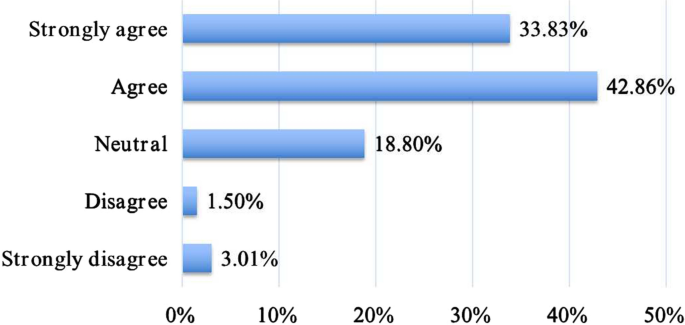
Graph showing respondents’ overall perception of the impact of DPC failure. DPC, doctor–patient communication
The main reported doctor-related factors leading to failure communication are shown in Fig. 2 ; these factors are “lack of formalized training” (111/133), “insufficient communication” (92/133), and “inadequate experience” (68/133). The most commonly reported patient-related factors that influence DPC were “excessive expectations of medical technology” (116/133), “inadequate medical knowledge” (115/133), “mistrust” (99/133), and “misunderstanding of medical behavior” (101/133); see Fig. 3 .
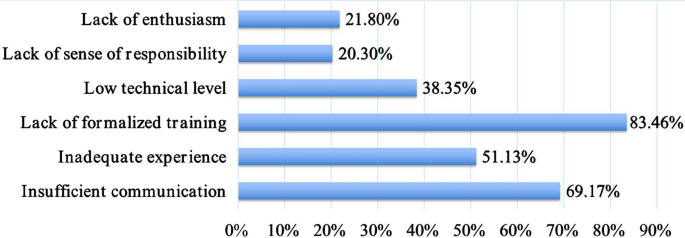
Main reported factors associated with the doctor in the case of DPC failure. DPC, doctor–patient communication

Main reported factors associated with the patient in the case of DPC failure. DPC, doctor–patient communication
Regarding the multiple-choice question of how to deal with difficult conservations, the most frequent responses were through proactive communication with the patient (96/133), communication through the instructor/faculty (101/133), communication through the department director (89/133), communication through a peer or senior resident (13/133), and feeling overwhelmed and ignoring the patient (33/133) (Fig. 4 ).

Main reported ways respondents dealt with a difficult conversation
Interest in receiving formal training in CS and barriers to implementation
Most residents (117/133) said that they “agree” or “strongly agree” that CS can be taught via courses and that receiving formal training in difficult conversations was important for their careers. Ninety-four respondents (70.67%) showed an interest in formalized CS courses. When asked “How often do you expect the course to run?”, 65/133 (48.87%) residents said once a quarter. Surprisingly, only 11/133 (8.27%) respondents chose once every 2 weeks. A lack of time, lack of a standardized curriculum, and lack of educational materials were the most commonly cited barriers to formalized training. Another important barrier was a lack of faculty expertise. All responses are summarized in Table 2 .
DPC training programs are a very important part of postgraduate training to become a qualified doctor [ 20 ]. Communication is one of the core competencies of radiology residents [ 21 ]. The provision of effective and comprehensive DPC training programs for residents is substantially lacking in China. Moreover, the educational curriculum focuses solely on theory [ 16 ]. To our knowledge, this study is the first to explore radiology residents’ perceptions, attitudes, and factors regarding DPC and to further investigate learners’ needs with respect to DPC training, with specific goals that can lead to future in-depth research and help guide curriculum planning.
Our study findings indicated that radiology residents’ general attitudes toward receiving CS training were positive, as indicated by high PAS scores accompanied by the strong belief that CS could be taught. As expected with such a positive mindset, radiology residents showed a high willingness to improve their CS through a standardized training curriculum [ 22 ]. We identified that the main factor influencing PAS scores regarding the doctor–patient relationship was having any previous training in CS or medical ethics and humanities. In accordance with earlier studies, nearly 42% of radiology residents in our study reported not receiving any CS training and most did not have enough confidence to independently manage difficult conversations [ 22 , 23 , 24 ]. These results demonstrate that China’s current post-graduate formal training in DPC skills is suboptimal. A study conducted by Zhou et al. showed that neurology residents who received prior CS training had more confidence and less stress when they encountered difficult conversations, in comparison with those with no previous training [ 24 ]. These studies have demonstrated that CS training programs can improve the communication competency of residents, which could be a helpful approach to avoiding or solving conflicts and rebuilding patient–physician trust [ 24 , 25 , 26 ]. Interestingly, previous research has shown that the doctor’s attire can function as an effective non-verbal communication tool that signals confidence, trust, and empathy and can help to establish a good patient–doctor relationship [ 17 ]. Our study also revealed that the doctor’s white coat and formal clothes was a factor positively associated with the PAS score.
Personal factors, such as one’s knowledge and experience, increase confidence and self-esteem and subsequently have an impact on interprofessional communication [ 12 ]. Many residents perceived barriers to interprofessional communication when explicitly expressing a lack of knowledge whereas others indicated that being open about a knowledge gap enabled communication, rather than acting as a barrier [ 26 ]. Univariate analysis of NAS scores in our study revealed statistically significant differences among residents who had experienced any difficult conversations, had different resident grades, had previous CS training, and personal CS levels. Subgroup analyses indicated that being in the first year of training was associated with higher NAS scores, and the year of training had a direct negative effect on NAS scores. This may be because junior residents tend to be less experienced and lack expertise compared with senior residents [ 12 ].
Prior research has shown that the perception of a harmonious relationship with patients is positively associated with a preference for patient-focused clinical communication [ 22 ]. Unfortunately, the relationship between clinicians and patients is still a concern in China. Failure to communicate is one of the main reasons related to doctor–patient tension and loss of trust [ 25 ]. In some cases, this has led to verbal and physical violence against medical staff in recent years [ 27 , 28 ]. The reasons for these behaviors are manifold, but the communication barrier plays a major role. In the present study, only 15.04% (20/133) of residents rated current doctor–patient relationships in China in general as harmonious, as reported in previous studies. Most respondents (97/133; 72.93%) reported having failed in at least one difficult conversation in their medical career. Research has indicated that communication problems are caused by both sides in the doctor–patient relationship [ 25 , 27 , 28 ]. For doctors, the main related factors include professional title, failure to diagnose and treat, misdiagnosis and mistreatment, delayed diagnosis and treatment, poor surgery, poor assessment of condition, low technical level, lack of experience, and poor case recording. For patients, misunderstanding of medical behavior and high prognosis expectations predominate. Surprisingly, ‘patient with inadequate medical knowledge’ is also reported by our participants as a factor associated with failed DPC. After all, this item seems unfair to patients as they should not be expected to have inadequate medical knowledge. The reason for this is probably due to the inexperience of the residents and the mistrust between the young doctors and the patients. Therefore, to bridge the gap between residents and patients created by the nature of professional medicine, improving residents’ CS is critical.
It is important to understand the barriers a radiology resident perceives in practicing good CSs. In the present study, we found barriers to the development and implementation of training in how to handle difficult conversations, such as a lack of a standardized curriculum, lack of time, and lack of enthusiasm, similar to previous reports in other medical and surgical specialties [ 22 , 24 , 26 , 29 ]. Another important barrier was faculty expertise. Recently, Bai et al. designed a modified DPC training program for surgical residents in China and reported improved DPC competency among surgical residents, increased satisfaction levels among both standardized patients and surgical residents, and improved consistency of evaluation between standardized patients and surgical residents during doctor–patient encounters [ 30 ]. Therefore, hospital administrators and instructional managers should consider developing communication curricula in radiology residencies aimed at equipping faculty with the skills to effectively teach and assess CS. The following key elements should be considered when developing a successful CS curriculum. (1) Curriculum topics: handling conflict, breaking bad news, error disclosure, end-of-life care, patient handoffs, informed consent, and so on; (2) Teaching and assessment methods: didactic lecture, role play, simulation with standardized patients, small group discussion, faculty observation with feedback; (3) Other factors warrant special attention to ensure the delivery of the curricula, including more time for residents to participate in the curriculum by reducing clinical workload, faculty expertise, equipment, administrative assistance, and communication cultural backgrounds.
A recent study found that the number of CS training courses offered by institutions in China remains low, with tertiary hospitals organizing more courses than secondary/primary hospitals [ 22 ]. They also found that working at a primary or secondary hospital, and lower positive attitudes toward CS were determined as risk factors for verbal attacks. Our results confirmed the low prevalence of CS training among most Chinese physicians, although, as previously reported, they were very positive about having received CS training [ 22 ]. Thus, more efforts and investments are essential to provide CS training to physicians at hospitals, especially on the primary and secondary levels.
This study had several limitations. First, this was a cross-sectional observational study; therefore, no causal relationships can be assumed. It is also important to note the short survey period. The attitudes of medical professionals may change over time. Second, the participants in this study were drawn from a sample in nine qualified programs in the province of Guangdong, which limits the external validity of the study and generalizability of the findings. Further studies are needed using a more representative, larger sample, which should include a comparative study across different regions and settings. Third, the results of this survey may have been influenced by the different backgrounds of the residents. Fourth, some of the questions in this survey lack a clearer description of residents’ attitudes and experiences in the DPC, and residents reporting their perceptions using only a binary response scale for the scale, such as for the question about difficult conversations, may bias the study results. For further studies, more precise questions that accurately reflect the DPC and the combination of qualitative methods, such as focus groups, could provide an in-depth understanding of residents’ opinions on the DPC. Furthermore, our survey only focused on residents. Program directors and patients were not included, which may have introduced reporting bias. Future studies that include program directors and patient evaluations are needed to inform curriculum development.
This study provides a preliminary assessment of the current status of training in DPC in nine qualified radiology residency programs in China. Overall, the survey showed that radiology residents have received little training in communicating with patients. Despite this, most residents expressed interest in receiving additional training in DPC skills. Time and lack of a standardized curriculum, faculty expertise, and materials were the most common barriers to formalized training. Establishing and promoting a targeted communication curriculum for Chinese radiology residents should be a future focus.
Availability of data and materials
The datasets used and/or analyzed during the current study are available from the corresponding author upon reasonable request.
Abbreviations
Doctor–patient communication
- Communication skills
- Standardized residency training
Communication Skills Attitude Scale
Positive attitude scale
Negative attitude scale
Hashim MJ. Patient-centered communication: basic skills. Am Fam Physician. 2017;95(1):29–34.
PubMed Google Scholar
Di Blasi Z, Harkness E, Ernst E, Georgiou A, Kleijnen J. Influence of context effects on health outcomes: a systematic review. Lancet (London, England). 2001;357(9258):757–62.
Article PubMed Google Scholar
Riedl D, Schüßler G. The influence of doctor–patient communication on health outcomes: a systematic review. Z Psychosom Med Psychother. 2017;63(2):131–50.
Rockall AG, Justich C, Helbich T, Vilgrain V. Patient communication in radiology: moving up the agenda. Eur J Radiol. 2022;155: 110464.
Larson DB, Froehle CM, Johnson ND, Towbin AJ. Communication in diagnostic radiology: meeting the challenges of complexity. AJR Am J Roentgenol. 2014;203(5):957–64.
Koney N, Roudenko A, Ro M, Bahl S, Kagen A. Patients want to meet with imaging experts. J Am Coll Radiol. 2016;13(4):465–70.
Vijayasarathi A, Duszak R Jr. How radiologists can benefit from direct communication with patients. Curr Probl Diagn Radiol. 2020;49(4):224–6.
Gunn AJ, Mangano MD, Choy G, Sahani DV. Rethinking the role of the radiologist: enhancing visibility through both traditional and nontraditional reporting practices. Radiographics. 2015;35(2):416–23.
Mohan SK, Hudgins PA, Patel MR, Stapleton J, Duszak R Jr, Aiken AH. Making time for patients: positive impact of direct patient reporting. AJR Am J Roentgenol. 2018;210(1):W12-w17.
Kapadia MR, Lee E, Healy H, Dort JM, Rosenbaum ME, Newcomb AB. Training surgical residents to communicate with their patients: a scoping review of the literature. J Surg Educ. 2021;78(2):440–9.
Liu X, Rohrer W, Luo A, Fang Z, He T, Xie W. Doctor–patient communication skills training in mainland China: a systematic review of the literature. Patient Educ Couns. 2015;98(1):3–14.
Olde Bekkink M, Farrell SE, Takayesu JK. Interprofessional communication in the emergency department: residents’ perceptions and implications for medical education. Int J Med Educ. 2018;9:262–70.
Article PubMed PubMed Central Google Scholar
Uppot RN, Laguna B, McCarthy CJ, De Novi G, Phelps A, Siegel E, Courtier J. Implementing virtual and augmented reality tools for radiology education and training, communication, and clinical care. Radiology. 2019;291(3):570–80.
Gil FL, Hernández-Ribas R, Sánchez N, Gil J, Casellas-Grau A. Communication skills training for medical residents: Enhancing a psychosocial approach of patient care. Palliat Support Care. 2023;21(3):392–8.
Article CAS PubMed Google Scholar
Zhu J, Li W, Chen L. Doctors in China: improving quality through modernisation of residency education. Lancet (London, England). 2016;388(10054):1922–9.
Zhang J, Han X, Yang Z, Wang Z, Zheng J, Yang Z, Zhu J. Radiology residency training in China: results from the first retrospective nationwide survey. Insights Imaging. 2021;12(1):25.
Article CAS PubMed PubMed Central Google Scholar
Chung H, Lee H, Chang DS, Kim HS, Lee H, Park HJ, Chae Y. Doctor’s attire influences perceived empathy in the patient-doctor relationship. Patient Educ Couns. 2012;89(3):387–91.
Rees C, Sheard C, Davies S. The development of a scale to measure medical students’ attitudes towards communication skills learning: the Communication Skills Attitude Scale (CSAS). Med Educ. 2002;36(2):141–7.
Zhang Y, Jiang G, Sun Y, Zhao X, Yu X. Adaptation of the Communication Skills Attitude Scale (CSAS) to surgical residents in China. J Surg Educ. 2019;76(2):329–36.
Guo A, Wang P. The current state of doctors’ communication skills in Mainland China from the perspective of doctors’ self-evaluation and patients’ evaluation: a cross-sectional study. Patient Educ Couns. 2021;104(7):1674–80.
Ding N, Hu G, Wang X, Sun H, Song L, Chen Y, Zhang D, Xue H, Jin Z. Simulation video: a tool to evaluate communications skills in radiologist residents. BMC Med Educ. 2023;23(1):586.
Du J, Mayer G, Posenato E, Hummel S, Zafar A, Bärnighausen T, Schultz JH. Communication Skills (CS) training of physicians in China and its role in actual challenges of patient-physician relationship: a cross-sectional survey. BMC Med Educ. 2022;22(1):783.
van den Eertwegh V, van Dalen J, van Dulmen S, van der Vleuten C, Scherpbier A. Residents’ perceived barriers to communication skills learning: comparing two medical working contexts in postgraduate training. Patient Educ Couns. 2014;95(1):91–7.
Zhou L, Wu B, Wu L, Cheng X, Hu B, Yao M, Zhu Y, Peng B, Cui L, Ni J. Needs assessment for a curriculum for difficult conversations-a survey from 5 Chinese accredited neurology residency training programs. BMC Med Educ. 2020;20(1):336.
Han Y, Lie RK, Li Z, Guo R. Trust in the doctor–patient relationship in Chinese public hospitals: evidence for hope. Patient Prefer Adherence. 2022;16:647–57.
Singh A, Ranjan P, Kumari A, Sarkar S, Kaur T, Aggarwal R, Upadhyay AD, Chakrawarty B, Nayer J, Joshi M, et al. A cross-sectional evaluation of communication skills and perceived barriers among the resident doctors at a tertiary care center in India. J Educ Health Promot. 2022;11:425.
Chen G, Li C. Restoring doctor–patient trust to curb violence against doctors. J Multidiscip Healthc. 2022;15:2091–5.
Liu Y, Wang P, Bai Y. The influence factors of medical disputes in Shanghai and implications – from the perspective of doctor, patient and disease. BMC Health Serv Res. 2022;22(1):1128.
Schinasi DA, Kolaitis IN, Nadel FM, An-Grogan Y, Burns R, Berman L, Quinn AM, Shaw KN. Using immersive simulation to engage pediatric residents in difficult conversations and the disclosure of patient safety events. Cureus. 2018;10(8): e3095.
PubMed PubMed Central Google Scholar
Bai S, Wu B, Yao Z, Zhu X, Jiang Y, Chang Q, Bai X, Tong T. Effectiveness of a modified doctor–patient communication training Programme designed for surgical residents in China: a prospective, large-volume study at a single Centre. BMC Med Educ. 2019;19(1):338.
Download references
Acknowledgements
We give special thanks to the Post-graduation Education Group of the Radiological Specialised Committee of Guangdong Provincial Physicians’ Association for their help and support. We thank Analisa Avila, MPH, ELS, of Liwen Bianji (Edanz) ( www.liwenbianji.cn ) for editing the language of a draft of this manuscript.
The study was supported by the First Affiliated Hospital of Shantou University Medical College 2022 Talent Support Education Reform Program (YCTJ-2022-18). Teaching Reform Research Project of Guangdong Clinical Teaching Base in 2023 (No. 124).
Author information
GengPeng Lian, Yubin Xiao, and Yingling Huang contributed equally to this work.
Authors and Affiliations
Department of Radiology, First Affiliated Hospital, Shantou University Medical College, Shantou, 515041, Guangdong, China
GengPeng Lian, Yubin Xiao, Yingling Huang, Huanpeng Wang, Lipeng Huang, Hongwu Yang, Chunmin Zhu, Wei Mei & Ruibin Huang
You can also search for this author in PubMed Google Scholar
Contributions
MW, RH: design of study. GL, YX, LH, HW, CZ: acquisition of data. YH, GL, YX: data analysis. GL, YX, MW: preparation of the manuscript. RH: assessment of data, parts of data analysis, and manuscript writing. All authors read and approved the final manuscript.
Corresponding authors
Correspondence to Wei Mei or Ruibin Huang .
Ethics declarations
Ethics approval and consent to participate.
All methods were carried out in accordance with the requirements of the Helsinki Declaration. This study was approved by the ethics commission of the First Affiliated Hospital of Shantou University Medical College. Informed consent was obtained from all participants.
Consent for publication
Not applicable.
Competing interests
The authors declare that they have no competing interests.
Additional information
Publisher's note.
Springer Nature remains neutral with regard to jurisdictional claims in published maps and institutional affiliations.
Supplementary Information
Additional file 1..
Supplementary material.
Rights and permissions
Open Access This article is licensed under a Creative Commons Attribution 4.0 International License, which permits use, sharing, adaptation, distribution and reproduction in any medium or format, as long as you give appropriate credit to the original author(s) and the source, provide a link to the Creative Commons licence, and indicate if changes were made. The images or other third party material in this article are included in the article's Creative Commons licence, unless indicated otherwise in a credit line to the material. If material is not included in the article's Creative Commons licence and your intended use is not permitted by statutory regulation or exceeds the permitted use, you will need to obtain permission directly from the copyright holder. To view a copy of this licence, visit http://creativecommons.org/licenses/by/4.0/ . The Creative Commons Public Domain Dedication waiver ( http://creativecommons.org/publicdomain/zero/1.0/ ) applies to the data made available in this article, unless otherwise stated in a credit line to the data.
Reprints and permissions
About this article
Cite this article.
Lian, G., Xiao, Y., Huang, Y. et al. Attitudes toward communication skills with learner needs assessment within radiology residency programs in China: a cross-sectional survey. BMC Res Notes 17 , 114 (2024). https://doi.org/10.1186/s13104-024-06779-8
Download citation
Received : 30 January 2024
Accepted : 17 April 2024
Published : 23 April 2024
DOI : https://doi.org/10.1186/s13104-024-06779-8
Share this article
Anyone you share the following link with will be able to read this content:
Sorry, a shareable link is not currently available for this article.
Provided by the Springer Nature SharedIt content-sharing initiative
- Radiology residents
- Medical education
- Needs assessment
BMC Research Notes
ISSN: 1756-0500
- Submission enquiries: [email protected]
- General enquiries: [email protected]
Reflections on Radiology Training in Kenya
Apr 30, 2024

Our radiology group picture including myself (back row far left), Drs. Johnson and Agarwal, and many of the Kenya registrars and faculty members.
Morgan McLuckey is a current resident in her final year of training in the Department of Radiology at Indiana University. Through the AMPATH partnership, she traveled to Eldoret, Kenya, to work alongside physicians and residents (called registrars in Kenya) in the Department of Radiology at Moi Teaching and Referral Hospital (MTRH) in January 2024.
My short time in Kenya proved to be a transformative experience full of both professional and personal development, as well as mutual teaching and learning, which I anticipate will influence my career to come. I’m incredibly grateful to those who made this possible.
Teaching occurred in both instructional settings and in the reading room. I came to MTRH prepared with lectures on radiology topics that I understand well and was able to share these with the registrars in the form of a morning lecture series. I was impressed by the level of engagement with these sessions. It became clear to me that the registrars have a strong desire for this type of teaching through the many questions that were asked during the sessions, as well as the feedback given afterwards. I was told that one of the first-year registrars, after a lecture about the shoulder, felt prepared enough that she is “ready to report all shoulder x-rays now.” I was also actively engaged by both registrars and consultants in the reading room, who would ask me to sit with them or beckon from across the room to ask my opinions on tough or interesting cases. This part of the experience felt somewhat like a capstone to my residency, where I could see the value of my residency training in providing meaningful assistance in challenging diagnostic cases.
There was, of course, an enormous amount of learning during my time at MTRH as well. I experienced wholly new cultures, a medical system facing different and unique challenges from my own, and pathology rarely encountered in my own practice (particularly in the realm of infectious disease). One of the most impactful experiences that I had was a morning spent with one of the registrars in the newborn intensive care unit. She, very thoughtfully, invited me alongside her to perform ultrasound examinations requested by the neonatologists. As I will soon be a pediatric radiologist, it was a valuable experience for me to see and practice performing neonatal head ultrasounds (a study that I will often read, but almost never perform, at home). On this morning, as well as many other mornings during my trip, I learned hands-on ultrasound skills from the Kenyan radiologists who routinely perform these scans themselves. I also felt honored that this registrar elected to welcome me alongside her, to show me new parts of her hospital, and to teach me what she knew.
While in many ways my broad education at IU had prepared me for what I would see in the radiology department at MTRH, there were many instances in which I was surprised by the differences in practice. Most of these surprises related to differences in information technology and imaging availability. For example, MTRH currently has a 0.3T magnet (with plans to one day install a 1.5T magnet) with which limited exams are performed for imaging of the brain and spine. This is in contrast to MRI use in the US, which we also frequently use to image the chest, abdomen, pelvis, and musculoskeletal system, in addition to the brain and spine. I used a lightbox, for the first time, to read these studies on film. It was a challenge to pick up my first such brain MRI just as the neurology team walked in hoping to discuss the case, and to work my way through the study without many of the images that I am used to the luxury of having when practicing in the U.S. This is all in stark contrast to the practice of radiology in the US, where digital imaging systems allow the quick navigation of thousands of images, including access to prior imaging, and where more imaging is almost always a possibility.
As it has been less than a month since my return home, I am still discovering how this experience will impact my future career and practice. In both the short and the long term, I hope to continue to cultivate personal and professional relationships with our colleagues in Kenya. I exchanged contact information with several of the registrars and we have been regularly sending interesting learning cases we encounter back and forth. I hope to coordinate a virtual case conference between the IU residents and Kenyan registrars both to share knowledge and to foster interest in the AMPATH Kenya experience amongst IU residents. A few IU residents are already planning on visiting MTRH next year. IU Radiology faculty are currently engaged in periodic virtual teaching with our Kenyan colleagues, and we hope to encourage increasing faculty in-person participation at MTRH in the future.
Finally, this trip has also pushed me to think more about how to expand and improve radiology care globally. While it is of course enormously important to innovate in ways that advance our diagnostic and treatment capabilities in radiology, it is also a significantly important endeavor to think about how to translate these advances to improve radiology care globally.
Subscribe to this Blog
We've added you to our mailing list!
Sorry, there was a problem
Suggested for you

IMAGES
VIDEO
COMMENTS
A thesis or dissertation, as some people would like to call it, is an integral part of the Radiology curriculum, be it MD, DNB, or DMRD. We have tried to aggregate radiology thesis topics from various sources for reference. Not everyone is interested in research, and writing a Radiology thesis can be daunting.
A dissertation is an essential part of the radiology curriculum for an MD, DNB, or DMRD degree programme. Dissertations in radiology can be very tricky and challenging due to the complexity of the subject. Students must conduct thorough research to develop a first-class dissertation that makes a valuable contribution to the file of radiology.
This page aims to provide students studying health sciences with a comprehensive collection of radiology research paper topics to inspire and guide their research endeavors. By delving into various categories and exploring ten thought-provoking topics within each, students can gain insights into the diverse research possibilities in radiology.
Topics for a Radiology dissertation. Multislice CT scan, barium swallow and their role in the estimation of the length of oesophageal tumors. Malignant Lesions-A Prospective Study. Ultrasonography is an important tool for the diagnosis of acute abdominal disease in children.
April 25, 2023. Research is critical to the future growth of radiology. The specialty has a rich history in innovation and today's investigators ensure a bright future for radiology by uncovering new discoveries and advancing radiologic research. Innovations in radiology have led to better patient outcomes through improved screening ...
Board of Radiology CORE exam. There is a need for improved learning resources on the topic, but current literature does not provide much information about what types of study materials residents value or creating effective media for teaching MRI physics. This thesis project explores the MRI physics resource needs of radiology residents,
Follow. 4 min read. ·. Feb 9, 2023. Radiology is a crucial medical specialty involving imaging techniques such as X-rays, MRI, CT, and ultrasound to diagnose and treat various medical conditions ...
The topic should cover 2 tasks: on the one hand, it should be interesting to you, on the other hand it should be significant for the general research of the field. This article contains a few pieces of advice on how to come up with good ideas, choose the best topic and start writing the Radiology dissertation.
Click on the subspecialties below to preview the trends, hot topics and research available at RSNA 2020. Breast Imaging. Cardiac Radiology. Chest Radiology. Emergency Radiology. Gastrointestinal Radiology. Genitourinary Radiology/Uroradiology. Health Service Policy and Research/Policy and Practice. Informatics.
The following publications in Radiology were the most-viewed articles of 2021, in order: Six-month Follow-up Chest CT Findings after Severe COVID-19 Pneumonia ( 1) Lymphadenopathy in COVID-19 Vaccine Recipients: Diagnostic Dilemma in Oncologic Patients ( 2) Parsonage-Turner Syndrome Following COVID-19 Vaccination: MR Neurography ( 3)
Insights in Artificial Intelligence in Radiology: 2023. Tianming Liu. 14,740 views. 7 articles. An exciting new journal in its field, innovating every technical aspect of radiology and radiologist's practice to improve quality, productivity and efficiency.
Video (online) Consult the top 39 dissertations / theses for your research on the topic 'Radiology and radiologists.'. Next to every source in the list of references, there is an 'Add to bibliography' button. Press on it, and we will generate automatically the bibliographic reference to the chosen work in the citation style you need: APA, MLA ...
Head Start Your Radiology Residency [Online] ↗️. Thesis. Radiology Thesis - More than 400 Research Topics (2022)! Read More » Radiology Thesis - More than 400 Research Topics (2022)! Connect with us on Social Media . Sitewide Search. Search for: Search. Categories. Articles (59) Blog (2)
2013 •. Thomas Colucci. Fostering radiology research among medical students can enhance a student's interest and understanding of radiology and research. It increases the academic productivity of the mentor and the department. Radiology faculty and departments should actively seek to recruit and engage students in research.
Title of the Dissertation. Duration (From-To) 1. Dr. Nikhil Mahesh. Dr. P. H. Patil. Magnetic Resonance spectroscopy and Diffusion weighted imaging characterization of supratentorial brain tumors - A one-year Hospital Based cross sectional study. 2022-2024. 2. Dr Ishita Thukral.
Thesis topics - I. By Dr.Pavan Kumar In OTHERS Posted March 12, 2019 - ROLE OF MAGNETISATION TRANSFER IMAGING IN EVALUATION OF NEUROCYSTICERCOSIS AND TUBERCULOMA ... - MEAN NORMAL PORTAL VEIN DIAMETER USING SONOGRAPHY AMONG PATIENTS REFERRING TO RADIOLOGY DEPARTMENT OF BAPUJI HOSPITAL CENTRAL KARNATAKA ... Related articles. Radiology Residency ...
s. no. title (plan of thesis) 1 multiparametric imaging of prostate carcinoma and its histopathological correlation 2 role of mri in evaluation of delayed developmental milestones/mental retardation in children 3 role of diffusion weighted magnetic resonance imaging in primary pelvic malignancy and its histopathological correlation
Go to Residency r/Residency • by cmmrs PGY1 View community ranking In the Top 1% of largest communities on Reddit. Need some easy to do thesis topic ideas in radiology . Any modality with easy methodology. Perferably usg. comment sorted by Best ...
More than 70,000 thesis topics for MD/MS and DNB at one place. 3000+ to 7000+ thesis topics for each specialty of medical sciences. ... In this regard i vividly remember my co-resident. When i joined MD radiology one of co-resident took a topic on cardiac MRI in thalassemia. Cardiac MRI facility was not available in our institute and then for ...
Radiology Research Papers/Topics Evaluation of the Role of MRI in diagnosis of Hepatic Focal Lesions in Ahmadu Bello University Teaching Hospital, Zaria Nigeria Introduction: Focal liver disease is a common diagnostic problem referred to radiologists for evaluation owing to its nonspecific clinical presentation and marked inter-observer ...
Relationship between burnout compassion fatigue, work environment & mindfulness in medical residents, Pranay Javeri. PDF "Relationship Between Burnout, Compassion Fatigue, Work Environment and Mindfulness in Medical Residents", Pranay Harichandra Javeri. PDF "Dating Anxiety in Emerging Adults", Jisha V. Jayaprakash. PDF
Background Communication skills (CS) represent a core competency in radiology residency training. However, no structured curriculum exists to train radiology residents in CS in China. The aim of this study was to evaluate the status and prevalence of doctor-patient communication training among radiology residents in nine Chinese accredited radiology residency training programs and to ...
Morgan McLuckey is a current resident in her final year of training in the Department of Radiology at Indiana University. Through the AMPATH partnership, she traveled to Eldoret, Kenya, to work alongside physicians and residents (called registrars in Kenya) in the Department of Radiology at Moi Teaching and Referral Hospital (MTRH) in January 2024.